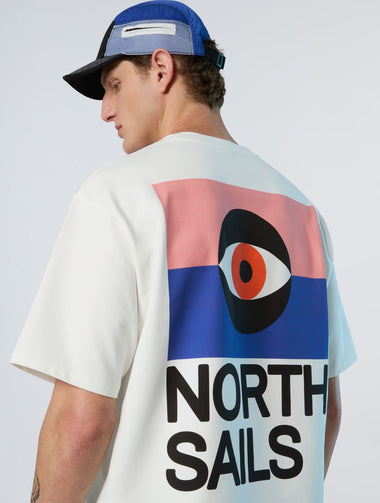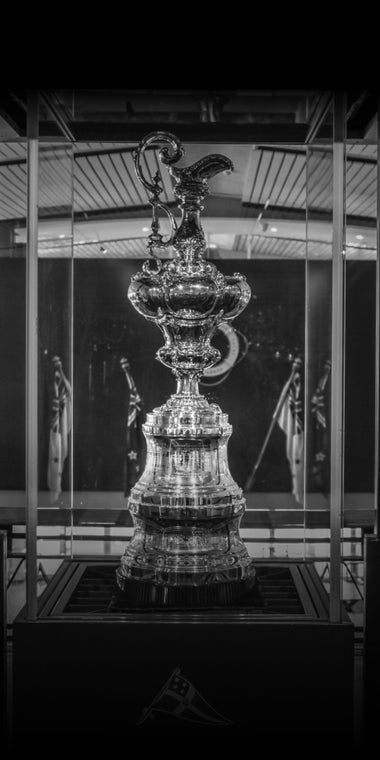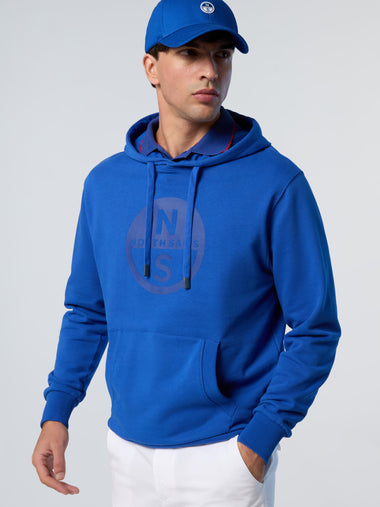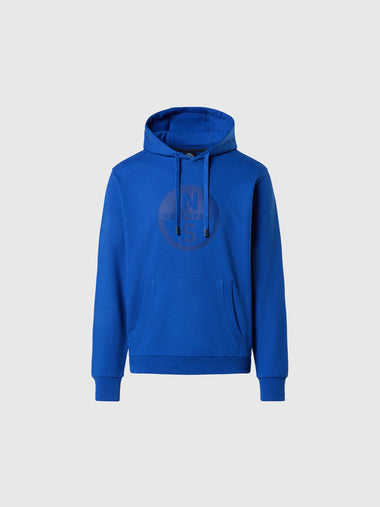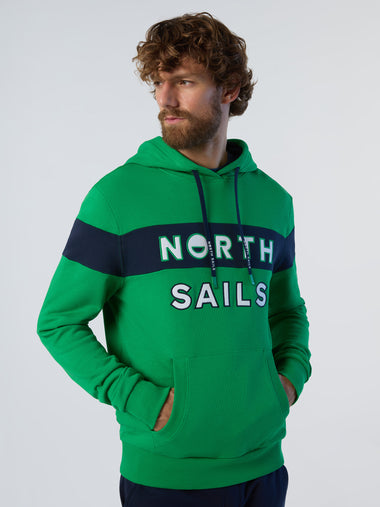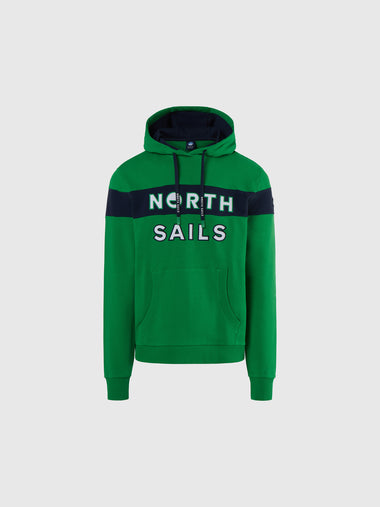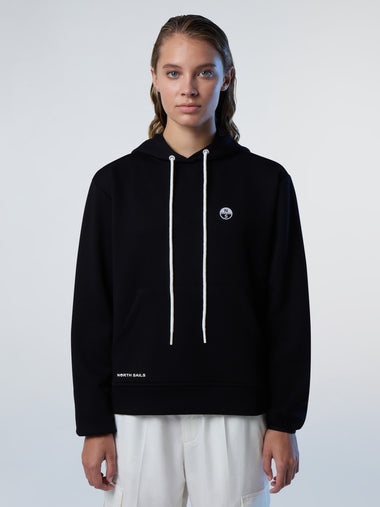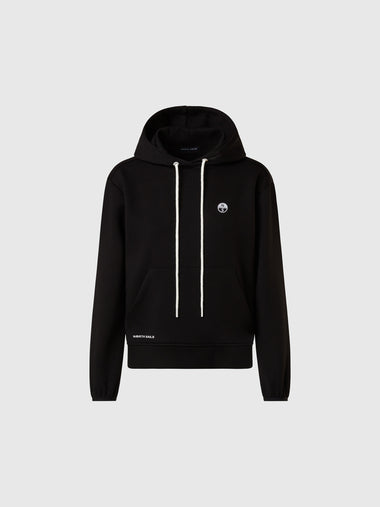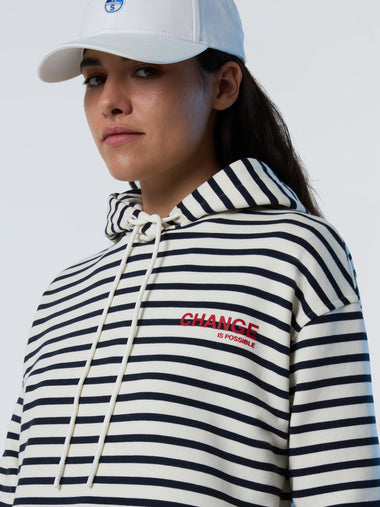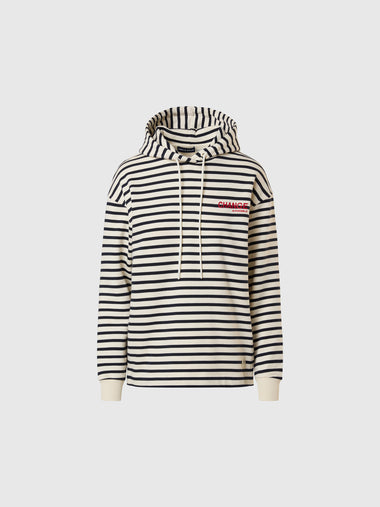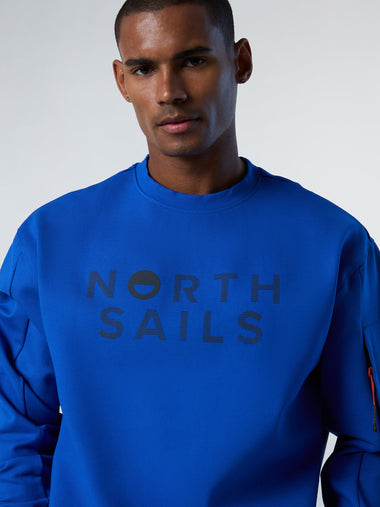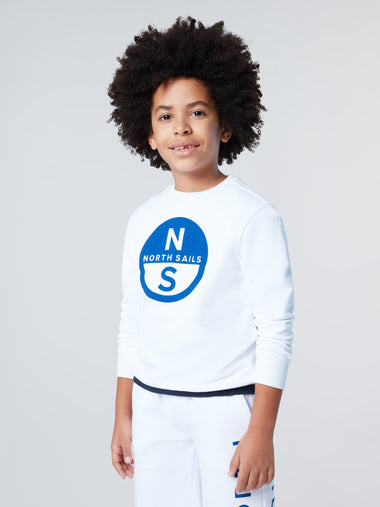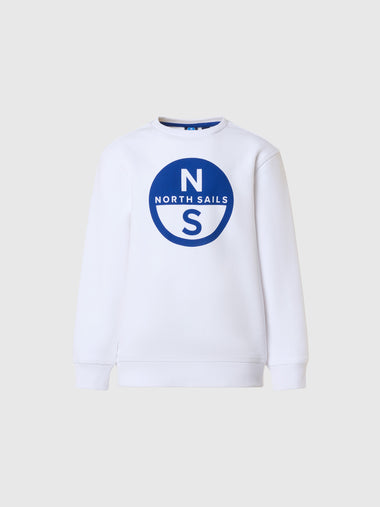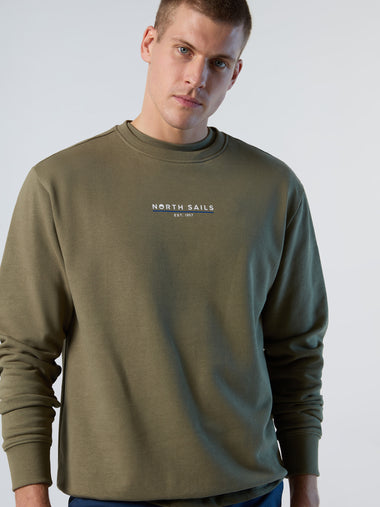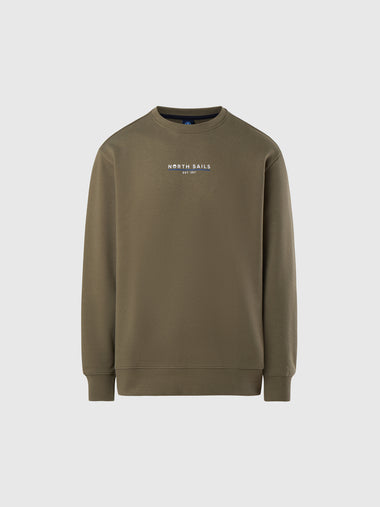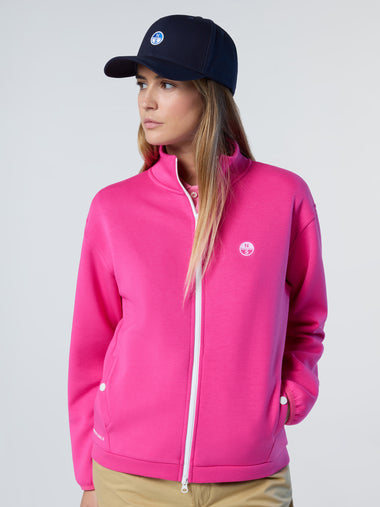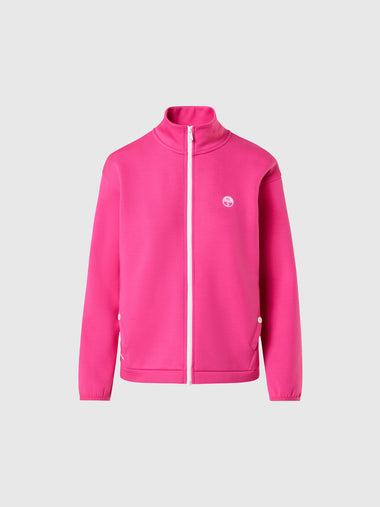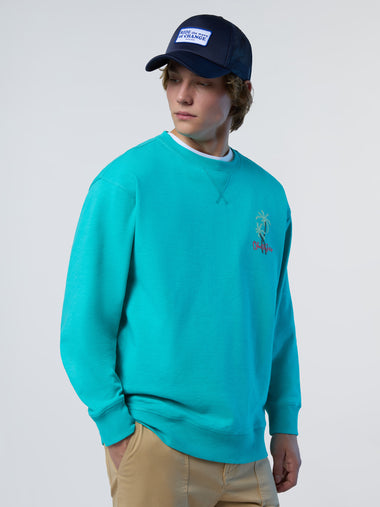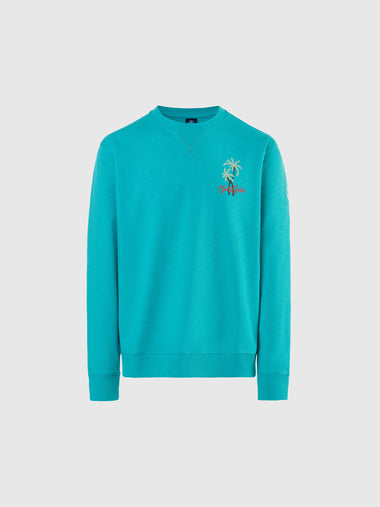NORTH SAILS BLOG
All
Events
Guides
News
People
Podcast
Sustainability
Tech & Innovation
Travel & Adventure

NORTH SAILS & SWAN 45 - RECEPT ZA SUSAK
North Sails & Swan 45 - recept za Susak
Foto: regate.com.hr
Yacht Club Croatia uspješno je nastavio s postavljanjem temelja novoj tradiciji Istre i Kvarnera organiziranjem drugog izdanja regate od Ičića do Suska i natrag za dvojce i posade. Nažalost ove godine nije odjedrena kompletna ruta, ali i na skraćenom izdanju svi sudionici imali su ispred sebe vrlo naporno i zahtjevno jedrenje!
Prilikom prijavljivanja regate za ovogodišnji kalendar HJS-a, rezervirani su petak, subota i nedjelja 20 - 22.11. međutim, zbog vremenske prognoze cijeli tjedan ranije se moglo očekivati da će doći do nekih promjena u službenom programu, jer su svi meteo modeli najavljivali jaku buru na skoro cijeloj ruti između Ičića i Suska.
Inače, start je trebao biti dan u petak ujutro u 10:00, ali unatoč želji organizatora da organizira jednu zahtjevnu jesensku, pomalo avanturističku, regatu taj termin definitivno nije dolazio u obzir!
Po najavama zainteresiranih jedriličara iz Istre i Kvarnera, na startu se moglo očekivati preko 25 posada, kako u dvočlanom formatu, tako i u punom sastavu. Najavilo se i pet posada iz Slovenije, pa bi se nakon lanjskog nastupa jedne Ruske posade nastavio međunarodni karakter regate. Ali s jedne strane zaključana Dežela i olujna bura na putu posada sa zapadne strane Istre srezali su startnu listu na 19 imena većinski iz Riječkog zaljeva. Iz najdaljeg su stigli samo momci s Dolce far niente, članovi JK Horizont iz Poreča i mix dvojac Kostelić - Kliba kao predstavnici JK Uljanik iz Pule.
Prvi potez Organizacijskog odbora po pitanju odgode starta povučen je par dana pred start kad su svi sudionici obaviješteni da se start pomiče na subotu ujutro u 10:00.
Ova dvadesetičetiri satna odgoda po tada aktualnim prognozama još uvijek je omogućavala da se odjedri kompletna ruta, jer su po jakoj buri jedrilice trebale stići do Suska, a već u očekivano vrijeme njegovog obilaska bura bi bila u padu i povratak bi išao mnogo ugodnije, a definitivno brzo s obzirom da bi se većina rute mogla odjedriti na jednim uzdama, čak i u laškoj orci.
Sastanak kormilara odvio se u subotu ujutro u ACI marini Ičići, bazi YC Croatia u 9:00.
Foto: regate.com.hr
Svima, ili bar većini, bilo je jasno da je stanje već ispred same marine bilo više nego zahtjevno za jedrenje i s obzirom da je DHMZ izdao crveno upozorenje za Kvarner, isplovljavanje nije dolazilo u obzir. Također, organizatori su raspolagali s informacijama da je na otvorenom moru između Istre i Cresa, kao i na Susku, izmjereno pa i preko 50 čvorova bure.
Odluka je samim tim bila vrlo jednostavna, odnosno odgoda starta u trajanju od deset sati. Idući sastanak kormilara zakazan je za 19:00, a mogući start najavljen je za 20:00.
Tijekom dana bura je i dalje vrlo jako puhala i ispred Opatije, ali kako je sunce počelo zalaziti tako je sve više slabila i bar na milju od kopna pala na desetak čvorova.
S obzirom da je vremenski interval koji je bio ispred jedriličara bio značajno skraćen u odnosu na prvotni, odgoda starta od dan i pol povlačila je za sobom i skraćenje rute. Regatni odbor obavijestio je nazočne kormilare da se neće ići do Suska, već da će točka obaveznog obilaska biti lanterna Zaglav na sredini zapadne obale Cresa. Ugrubo, ruta je skraćena na pola. Na raspolaganju je bilo još nekoliko točaka na izvornoj ruti koje su mogle biti iskorištene umjesto Zaglava, ali prognoze su najavljivale drastičan pad bure u nedjelju ujutro. Takav rasplet doveo bi u pitanje povratak većine sudionika, pa je izabrana spomenuta opcija.
Do ovog izdanja regate Susak noćni start u ovom akvatoriju nije baš prakticiran. Iznimka je jedino nekoliko Galijola koje su se jedrile u kasno ljetnom terminu, što je ipak mnogo ugodnije doba za jedrenje, pa je samim tim i noćni start bar psihički manje zahtjevan a i tada su skoro sve posade bile u punom sastavu. Na ovom Susku od 19 prijavljenih posada 11 su bile u doublehanded kategoriji, a 8 u punom sastavu. Noćni start, prateću hladnoću i ostale eventualnosti tri posade su prepoznale kao elemente s kojima bi mogle imati poprilično problema i službeno su se povukle iz regate, a s druge strane već u petak poslijepodne posada Molo Longa javila je organizatorima da odustaju od sudjelovanja. Tako da je na start pristupilo 15 posada.
Uglavnom, među njima nije bilo dvočlanih posada, svi koji su stigli u Opatiju odlučili su jedriti, a posade u punom sastavu su predstavljali samo Finally i Žut.
Predstartna procedura odbrojavala se na istom mjestu kao i godinu ranije... Regatni odbor na valobranu marine u Ičićima, pored "tri antene", i bova označena bljeskalicom na oko 200-300 metara okomito na obalu.
S obzirom da bura ovdje puše skoro okomito na obalu start je bio u laško i odvijao se po maksimano desetak čvorova, ali po vrlo uzburkanom moru kratkog, oštrog vala. Vrlo nezgodni uvjeti kad je u jedrima malo vjetra, a s obzirom da se uvijek nakon starta svi nastoje izvući što više od obale Istre u zonu jačih zračnih strujanja, trebali su su se koristiti drifteri i genakeri kojima nisu bili svi opremljeni. Uglavnom su se koristile genove i jedinice, a nekolicina s odgovarajućim laganim jedrima u zonu za koju su očekivali da će biti vjetrovitija stigli su malo ranije. Međutim, tamo ih nije dočekalo pretjerano mnogo vjetra i sa stvarno malenim brzinama skreću na pravi kurs i nastavljaju na jug.
Jedine dvije jedrilice koje su izabrale značajno drugačiju taktiku bili su Damaco i Bokeljka. Oni su prvih pola milje jedrili bliže kopnu i tek onda su se priključili na "autoput". Kao što se može vidjeti na početnom dijelu playbacka Bokeljka je bila bar za 20% brža od najbržih u ostatku flote i na momente hvatala i preko 7 čvorova. Slično je bilo i s Damacom, ali zbog tehničkih problema nedostaje prvih pola sata njegove snimke.
Nakon prebacivanja vani flota sustiže Bokeljku, ali Damaco zadržava vodstvo koje u nastavku regate nije niti jednom ispustio.
U ovom dijelu regate možda je najveće iznenađenje JOD 35 - Skradin. On se probio na drugo mjesto i predvodio je potjeru u kojoj su još sudjelovali maleni Mini 650 - Libera i Elan 340 - Dolce far niente.
Dalje je regata bila praktički natjecanje u brzini, jer nije bilo nekih posebnih taktičkih poteza s kojima su se neki izdvajali od drugih. U ovoj etapi najviše su se isticali Melges 24 - Blue Label i Bavaria 38 Match - Fly 5. Oni su iskoristili posjedovanje genakera i s vanjske strane pokušavali su hvatati priključak s vodećima. Uglavnom, nekako u visini Mošćeničke drage bura ponovno jača i sad cijela flota ima vrlo visok prosjek brzina.
Više o situaciji na moru ispričao je član kasnije pobjedničkog dvojca, Hrvoje Petrović, koji je jedrio zajedno s Niki Keser na Swanu 45 - Damaco:
S obzirom da smo kasnili na start i brod je velik, pa kad smo u dvoje sve ide relativno sporo, nismo stigli ništa pametno dignuti. Istina, dignuli smo puno jedro i veliki flok za mezzonave, ali nismo stigli pripremiti genaker.
Kasnije smo ga uspjeli spremiti, ali mislim da je na sreću bura počela probivati kad je sve bilo spremno, tako da nismo ništa veliko dignuli.
Na startu su ispred nas bili Bokeljka i Libera. Mislim da je Bokeljka imala genaker, a Libera drifter. S tim su počeli voziti na razne strane, jer vjerojatno to sve nisu uspjeli spustiti na vrijeme, a mi smo sve to prošli na flok. Jer relativno brzo je s 5-6 čvorova na startu dignulo na 15 čvorova iz smjera Krka!
Znači bio je čisti bok, a dok smo se izvlačili vani imali smo orcu prema Cresu.
Kako smo išli prema Velim vratima to je sve više jačalo. Mi smo i dalje imali puno jedro i jib top. I kad smo stigli u Vrata na instrumentima smo čitali 32-33 čvora. Tu nam je vjetar već bio u pola krme i krma i tu zonu smo proletjeli s tim punim jedrima.
Sve je prošlo bez stresa i ja sam čak uspio malo odmoriti, odraditi neki polu san. Niki je vozila.
I onda je iza Cresa krenuo zanimljivi dio, dio patnje.
Kad smo prošli puntu Porozine sve je stalo. Bonaca... oko 6 čvorova iz svih smjerova malo krma, malo orca... Srećom, nismo išli puno pod Cres. Bili smo oko milju - milju i pol van, kad vidim tracking znat ću točno... i relativno brzo smo to prošli.
Nakon toga ponovno smo imali vjetar u bok prema Zaglavu... refuli od 30 čvorova, pa pad na 5... pa ponovno 30 čvorova... Nekoliko puta smo mijenjali na jedru prvi krat, pa prvi, pa ponovno drugi, pa puno jedro... i sve s istim flokom. Cijelo vrijeme bok, krma i max laška orca. Uglavnom bočni kutevi.
I onda na 3-4 milje pred Zaglavom, kad smo se spremali priječi na trojku za natrag, dignulo je na 35 čvorova. To je dio koji ćese na trackeru vrlo jasno vidjeti :)
Tih 35 čvorova je bilo zadnje što sam u tim trenucima vidio na instrumentu jer sam otišao na provu čupati flok prema dolje. Kako smo mi to "mudro" zaključili da ćemo spuštati u krmu, šteke koje imamo u floku su se omotola oko štraja. Bila je prava mala karamela.
Niki je na timunu uspjela to odvrtiti, a ja sam uspio spustiti flok. Međutim, umjesto da je to sve trajalo 3 minute, trajalo je 23...
Kad smo to spustili zavozili smo na Zaglav i tamo smo imali između 25 i 30 čvorova, ništa previše strašno. Jedro nam je tada bilo na prvom kratu i dignuli smo trojku.
Na Zaglavu smo imali jednu viru koja je bila posljednja do Ičića. Desne uzde sve do gore... na desni bok smo nakrcali sve flokove i spinakere koje smo imali... sve na palubu.
Mislim da oko 15 minuta iza Zaglava ponovno dižemo jedro na puno i do kraja više ništa nismo mijenjali do kraja.
U Vratima smo imali 15-20 čvorova, ful orca i na izlasku iz vrata do 35 čvorova laške orce.
Brod je išao kao metak, najljepši dio regate što se mene tiče!
Tu je već i iskopalo val, pa je bilo i malo mokro. A na provi smo izgubili dvije naglavne lampe.
Taktika za kraj nam je bila da se držimo čim više vani, da ne odemo pod Istru gdje je uvijek po buri dosta lošije... ako nema tramuntane uvijek treba ići van prema Kvarneru.
Negdje u visini Ike dobili smo prvi znak da idemo u bonacu, pa smo se s dvije-tri vire izvukli još više vani i tako smo skoro prošli Ičiće i u krmu se spustili prema cilju.
U Ičićima je sve zabonacalo i zadnjih milju smo morali jedriti orcu da bi ušli u cilj.
Rezime je da nije bilo panike, osim te jedne izmjene floka, kod nas to stvarno nije izgledalo strašno. Mislim da je primarni razlog to što je brod spreman!
Ja znam brod napamet. Imam hrpu milja i sati u brodu, Niki također. Jedrili smo puno regata zajedno ove sezone i mislim da nam je to bio najveći plus, što smo znali brod. Točno sam znao koje jedro i kada, kako brod podnosi pojedini setup, kako mogu voziti i ponavljam da je brod spreman za offshore.
Ja i Bero (Berislav Vranić, vlasnik Damaca, op.a.) spremamo se za Sv.Nikolu za dvojce, jer Niki radi, ne može dobiti slobodno... a inače nas dvoje planiramo jedriti dalje, a čak razmišljamo i o mixed offshore kombinaciji da i nas dvoje pokušamo s kvalifikacijama za olimpijadu.
Što se tiče treniranja, Swana imamo uvijek na raspolaganju, također možemo jedriti na X-Treme 37 od Nikijine obitelji, možemo posuditi i Mini 650 od prijatelja Darija... sad samo čekamo službene informacije koje u stvari sviju i zanimaju da mogu krenuti s ozbiljnim planovima za kvalifikacije.
Hrvoje Petrović, Damaco - Swan 45
Krenuvši od Damaca, pa dalje, u pitanju su bile jedrilice za koje se po potrebi dio posade može skloniti u kabinu, ako je sve u redu čak malo i odspavati, a i u većini ako uvjeti na moru dopuštaju normalno i opušteno pripremiti neki topli napitak ili topli obrok.
Sušta suprotnost tome bila je jedrilica Blue Label, Melges 24 na kojem je jedrio dvojac YC Croatia, Jelača i Smojver.
Foto: regate.com.hr
Tijekom regate čak 5 jedrilica se povukla iz regate zbog uvjeta na moru. Neki su morali odustati ranije, neki u blizini Zaglava, a dvojac s Blue Labela taj potez je morao povući prilikom pokušaja okreta ove lanterne.
Kako je u prvoj polovici regate jedrenje bilo uglavnom u bok i niz vjetar oni su se dobro snalazili, a i stvarno brzo prešli tih 22-23 NM. Ali upadaju u probleme pred obilazak... detaljnije o tome, kao i o organizacijskim izazovima ispričao nam je Petar Smojver:
Mogu reći da smo kao organizatori iz ove regate stvarno puno naučili i izvukli puno iskustva, pogotovo da slušamo sami sebe i da ne upadamo pod tuđi utjecaj. A tako smo i postupili pogotovo po pitanju odgode starta.
Za iduću godinu planiramo da jedan ozbiljni gumenjak budu uz flotu cijelo vrijeme. Da bude pri ruci ako nekom bude trebalo... bez obzira što se to ne radi na drugim regatama... ali ja bi to zbog svog mira. Mislim, bez obzira što smo mi ovog puta spašavali sebe i tražili zaklon, meni je cijelo vrijeme puno više u glavi bilo pitanje kako druge posade to rješavaju i da im se nešto ne desi.
Imali smo mi dogovoreno i spremnu pripravnost Sea Helap, ali oni su u Lošinju i treba im sat vremena do tamo gdje smo mi bili... nezgodno je... stvarno treba netko s tom ulogom biti bliže!
A što se tiče nas na Melgesu, jasno je da to nije jedrilica za ovakvo vrijeme. Međutim, po svim prognozama bura je bila u padanju do dvadeset čvorova i to se može. Pripremili smo i olujna jedra baš za njega i moglo se s tim jedriti do 30 čvorova, a to smo i isprobali za vrijeme regate. NAs dvojica smo bez problema upravljali brodom, išli smo 14 čvorova... s kratom i flokom jedrili krmu... glisirali smo noću po velikom valu i to je bilo kako treba.
A kasnije kad smo upali u nekakvu bonacu od Porozine, pa tamo negdje do Velog Boka. Bila je bonaca, pa val iz Valuna, pa val po krmi od Porozine, vjetar čas čista orca, pa čas čista krma... to je bilo nekih sat i pol borbe i kad smo to prošli nekih 3 milje pred Zaglavom je zapuhalo.
Očekivali smo da će refuli odmah biti jaki i odmah smo ih dočekali s kratom. Tako smo normalno mogli jedriti do Zaglava i onda je tamo još pojačalo i tu smo počeli imati prve probleme jer nas je štraorcalo i nismo mogli zapojati.
Tada smo spustili glavno i dignuli olujno glavno i uspjeli proći Zaglav i ići prema Cresu. Tu je ponovno pojačalo i nikako nismo mogli ni virati ni napraviti pojalabandu, niti zapojati. I sad kad smo došli pod Cres nije bilo druge... tu nije bilo niti jedne rupe među refulima... mi smo čekali neku rupu da zapojamo, a nikako dočekati. I kad smo stigli pre blizu Cresu spustili smo glavno i samo s flokom smo uspjeli okrenuti.
Naravno, nismo uspjeli okrenuti Zaglav, jer samo s flokom nismo imali potrebni kut i tu smo donijeli odluku da je to to i da odustajemo od regate jer ne možemo s ispravne strane okrenuti Zaglav.
Sve ovo što sad pričam traje dvadesetak minuta. Za to vrijeme refuli su još i pojačali i onaj flok koji nam je bio podignut trebalo je zarolati jer smo se previše naginjali.
Kasnije su nam rekli ovi što su iza nas stigli do Zaglava da su neki mjerili 37, neki 42 čvora i to ne refule, već konstantnog vjetra!
Flok smo skroz zarolali. Po tom vjetru se zarolao skroz na tanko i kako je taj konop od rola na Melgesu napravljen na mjeru, a sad koliko je tanko bio zarolan ostalo je vani viriti nekih 40-50 cm jedra. I tek to malo jedra je brod mogao podnijeti!
jedna od opcija koje smo tad imali na raspolaganju je da na lijeve uzde idemo prema Susku ili na desnim uzdama na Pomer, to su bile opcije za krmu. Ili eventualno probati to što smo na kraju i napravili, a to da smo na desne uzde i tuči mezzonave koliko nas pusti.
Nekako smo procijenili da ćemo uhvatiti Crnu puntu, a ako nju ne uhvatimo ušli bi u Rašu i tamo hvatati neku zavjetrinu.
I tako smo mi to i napravili... je da je to tražilo prelazak preko otvorenog mora od Cresa prema Istri, ali da smo išli prema Susku opet bi nas čekali udari pod Lubenicama i pred Martinščicom i to bi bila katastrofa, a da smo išli na Pomer išli bi na otvoreno more, a tu je i val i sve što ide uz to.
Uglavnom, rekli smo idemo poprijeko za Istru.
Naravno, ovisiš o brodu i opremi. Hočće li jarbol puknuti ili izdržati, međutim s obzriom da smo imali samo tih kvadrat - kvadrat i pol jedra mislim da to nije bila tolika opasnost bez obzira na jačinu.
Po mojoj procjeni valovi su bili oko tri metra. U jednom trenu... dok smo prelazili nismo puno pričali... ali čim smo pristali sjetili smo se jedne situacije. Vidi se svjetlo Rapca, a Rabac je dosta visoko u brdu i u jednom trenu ne vidiš više njegovo svjetlo jer 100 metara dalje bio je val i sad taj val dolazi prema tebi nije više crn nego bijel! Tako da je povremeno bilo tih ogromnih valova.
Brod je to OK podnosio. Kad ne bi izdržao reful u mezzo onda bi ga malo zapojao, a to je opet novi par rukava. Kad okreneš u krmu i zaglisiraš na valu, zabiješ se u slijedeći i u jednom trenu nam je prova bila cijela u moru sve do kabine, situacja kao kad se vide video klipovi kad ljudi jedre sa spinakerom u krmu, tako se to nama desilo s tih kvadrat i pol jedra!
Ali što je tu je, izvučeš se i onda opet u mezzonave šibaš dalje.
Kad smo stiglo do Crne punte tamo je bila zavjetrina, uspjeli upaliti motor, uplovili i vezali se na prvu bovu ispred cementare i odmah je bilo zavlačenje u kabinu. Slijedeće je bilo da moramo zadržati temperaturu, ne se pothladiti.
Naravno, vreće nismo uzeli, jer idemo "samo" do Zaglava i digurno nežemo morat bježati. Dok smo planirali odlazak do Suska znali smo da ćemo se negdje trebat skloniti i pričekati da prođe vjetar, a ovo je bilo kao idemo na sigurno :)
Tako da nam je to bila velika greška i tako smo morali čekati dok se prva birtija otovori da možemo ući unutra da se zagrijemo, pa da možemo krenuti natrag.
Po prognozi je bilo da će ujutro oko dva sata bura kompletno stati, a na kraju je tamo u Koromačni bura puhala sve do 11 ujutro... eto, svi modeli su totalno pogriješili! Vjerojatno je bura toliko lokalnog karaktera da oni ne mogu sve to tako precizno odrediti.
Petar Smojver, YC Croatia
Ono što posebno veseli organizatore je to što se na regati okupio toliki broj dvojaca i koji nisu odustali unatoč vremenskim uvjetima, a što znači da su bili dobro pripremljeni i oni i brodovi. S druge strane također su zadovoljni i s ozbiljnim pristupom onih koji su u jednom trenutku rekli da oni ne mogu odjedriti cijelu rutu po takvim uvjetima i na taj način sačuvali i sebe i svoje jedrilice.
U svakom slučaju regata je pokazala da postoji dovoljan broj ozbiljnih jedriličara s kvalitetnim jedrilicama i što je najvažnije da su spremni jedriti i u jesen i po teškim vremenskim uvjetima, kratiti na vrijeme i nikog dovoditi u rizik!
Karakteristika područja oko Zaglava je da čak i noćni burini u toj zoni mogu vrlo jako puhati, tako da kad je na širem području bura na Zaglavu će sigurno vladati uvjeti poput onih koje su doživjeli sudionici ove regate. Ovog puta, po riječima Slovenskog meteorologa Jure Jermana, situaciju je dodatno pojačalo još uvijek toplo more. Gradijent bure uzrokovan tlakom, spoji se s noćnim burinom. Kopno je vrlo hladno zbog bure, a more je još uvijek dosta toplije. I onda se po noći to spoji, pogotovo do otprilike ponoći. Dok se more ne stigne ohladiti, upravo vrijeme kad su jedriličari obilazili Zaglav, dobije se još dodatnih 78 čvorova na buru. Inače u toj zoni, bura je najjača na potezu od Zaglava do Osora. Kad se pogleda smjer puhanja, to je točno preko puta Senja.
Rezultate regate po različitim podjelama možete pronaći na priloženim linkovima:
OPEN - svi
OPEN - x2
OPEN - grupe svi
OPEN - grupe x2
ORC - x2
Kvarner Yardstick - x2
U nastavku se može napraviti i kratka analiza statistike koja je izračunata posebno za dionicu od Ičića do Zaglava, a potom i za kompletnu rutu. Treba primijetiti da su se prvi statistički podaci računali na osnovu procjene dolaska do visine Zaglava, odnosno kad je u pitanju Damacov široki obilazak, vrijeme kad je stigao u njegovu blizinu.
Statistika dionice Ičići - Zaglav
Jedrilica
Trajanje jedrenja
Prejedreno
Prosječna brzina
Max. brzina
1.
Damaco
03:42:00
27.95
7.55
13.09
2.
Fly 5
03:48:00
24.55
6.46
13.25
3.
Libera
03:53:00
24.13
6.21
13.27
4.
Žut
03:54:00
26.72
6.85
16.79
5.
Ariel
03:59:00
24.25
6.09
12.34
6.
Bokeljka
04:02:00
24.10
5.98
13.54
7.
Beba
04:19:00
24.22
5.61
11.82
8.
Skradin
04:25:00
25.99
5.88
12.84
9.
Blue Star
04:53:00
24.02
4.92
11.58
Blue Label
04:30:00
25.10
5.58
14.14
Dolce far niente
04:36:00
25.07
5.45
10.35
Statistika kompletne rute
Jedrilica
Trajanje jedrenja
Prejedreno
Prosječna brzina
Max. brzina
1.
Damaco
07:49:48
53.50
6.83
13.09
2.
Fly 5
08:34:23
50.63
5.91
13.25
3.
Ariel
08:53:32
50.88
5.72
12.34
4.
Bokeljka
09:20:31
50.62
5.42
13.54
5.
Skradin
10:28:23
53.64
5.12
12.84
6.
Žut
10:40:18
57.66
5.40
16.79
7.
Libera
10:40:39
54.56
5.11
13.27
8.
Blue Star
13:15:00
56.13
4.24
11.58
Playbacko jedrenja možete pronaći na priloženom linku. Molim jedino da one koji se odluče na analizu snimljenih putanja obrate pažnju na jednu anomaliju u snimljenim podacima, a izgleda da je vezana uz točno određenu geografsku širinu na kojoj svi trackeri, bilo u prilasku ili odlasku od Zaglava, pokazuju pogrešne pozicije. Ako netko zna razlog takvog ponašanja molio bi ga da to podijeli s ostalima!
PLAYBACK
A malena fotogalerija snimljena na regati može se pronaći na ovom linku:
FOTO - SUBOTA
READ MORE
READ MORE
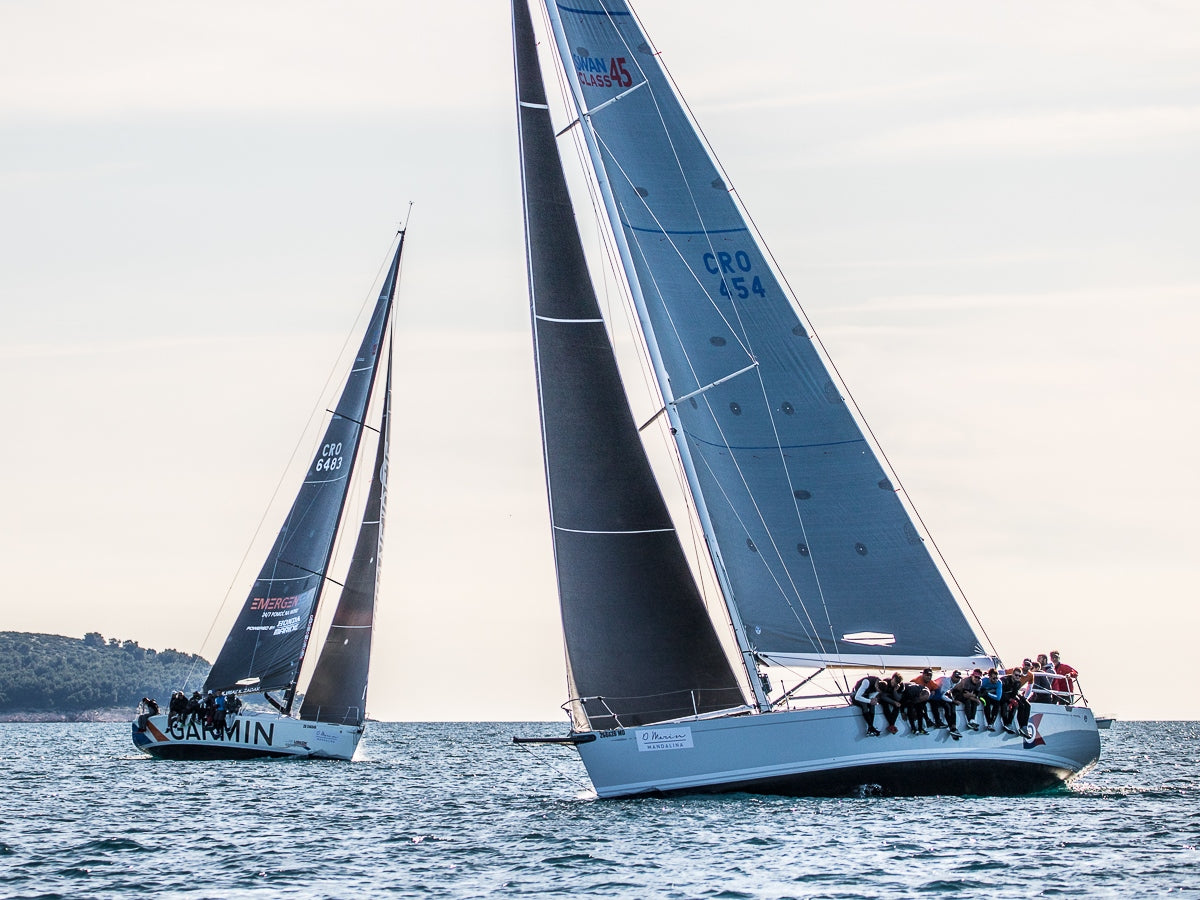
ORC PRVENSTVO HRVATSKE - JEDINA OVOGODIŠNJA REGATA ZA ORC CUP
ORC Prvenstvo Hrvatske - jedina ovogodišnja regata za ORC Cup
Jedriličarski klub Val još jednom je u suradnji s D-Marin Mandalina og 6. do 8. studenog uspješno organizirao Prvenstvo Hrvatske po ORC-u, a spletom aktualnih okolnosti to je bila i jedina ovogodišnja ORC regata koja se vozila i za Kup. Naime, kalendar je predviđao da se većina regata za Kup jedri u proljeće za vrijeme kad je i Hrvatska bila "zaključana", a u jesenskom dijelu planiran je samo Šibenik ORC Cup koji je potom preimenovan i prekategoriziran u Prvenstvo Hrvatske.
Najave su ovog puta išle malo konzervativnijim nego tijekom prijašnjih godina. Sve posade koje smo ranijih godina naučili gledati na ovim regatama imale su namjeru sudjelovati, ali svi su bili rezervirani po pitanju slanja prijava zbog konstantne opasnosti od desetkovanja broja članova posade. U posljednjem tjednu taj scenario se i desio na nekim od jedrilica, ali srećom nitko od jedriličara nije bio razlogom samoizoliranja, već su to bili "kontakti od kontakta" i slično. Uglavnom, dovoljno da se poremete planovi svim ostalima na jedrilicama.
Ono što posebno veseli kad se pregleda popis posada, a i onih koji su htjeli sudjelovati, je to što se prijavilo i nekoliko jedrilica koje do sada nisu sudjelovale na ovom tipu regata, dok su neke posade nastupile na svojim novim bolidima. Naravno, nije im to bila i prva regata na tim jedrilicama, ali prvo pravo testiranje u tehničkom jedrenju, odnosno na tipu regate gdje je potrebno biti koncentriran prvenstveno na maksimiziranje vlastite izvedbe, a ne toliko na pokrivanja i taktička nadmudrivanja s protivnicima.
Također je na ovom PH bilo zanimljivo i to što se značajno povećao udio posada koje krmu jedre s genakerima... sa spinakerima je ove godine jedrilo manje od pola flote, odnosno četiri posade, a također treba reći da je čak šest jedrilica imalo svoju premijeru u ORC-u, pa kad se sve uzme u obzir ovo je bio vrlo zanimljiv test po mnogim pitanjima.
Foto: regate.com.hr
Tjedan pred početak regate očekivalo se 14 jedrilica, ali u četvrtak se što u Mandalinu, što u Vodice, vezalo devet posada: Molo Longo, Damaco, All 4 One, Gringo 3, Elaya, Mr.J, Mareus II, Orca i Pixel.
S obzirom na odgovarajuće CDL koeficijente koji ih svrstavaju u pojedine ORC skupine i broj jedrilica u pojedinoj skupini, Regatni odbor davao im je zajedničke starteve i bodovao ih je na zajedničkoj ljestvici, pa su proglašeni prvaci Hrvatske samo u ORC A skupini.
Vremenska prognoza za cijeli vikend bila je povoljna u smislu temperatura i izostanak kiše, ali tako stabilno vrijeme dozvoljavalo je samo lagane vjetrove.
U petak, prvog dana regate, na more se izašlo najkasnije i uspješno su organizirana dva plova. Oba su se jedrila po laganoj tramburi koja je malo pojačavala kako se sunce približavalo horizontu. Tako je prvi plov odjedren po brzinama vjetra od 6-9 čvorova, a što je kasnije softver za proračun rezultata najbržoj jedrilici po ORC korekciji izračunao da joj je prosječni izvedeni vjetar bio 7-9 čvorova (stupac Implied Wind u rezultatima), dok je u drugom plovu računalo "izbacilo" da je korigirano najbrži jedrio po prosječnih 10.5 čvorova.
Softver koji proračunava rezultate inače podatak Implied Wind-a ispisuje za svaku pojedinu jedrilicu i ranije su se rezultati ispisivali s tim podacima za svaku pojedinu jedrilicu. Međutim, posljednje dvije-tri sezone taj podatak o vjetru uzima se od jedrilice koja je bila korigirano najbrža i "fiksira" se svima u floti i kalkulacija se potom mora ponoviti. Tako dobiveni rezultati su konačni.
Na kraju se ispostavilo da su ta dva prva štapa ujedno bili i najdulji štap kursevi po kojima se taj vikend jedrilo. Duljine su im bile preko 6NM, odnosno prva orca je bila dulja od milje i pol. To je otprilike neka optimalna duljina po uvjetima laganijeg do umjerenog vjetra. Jedino je posada Molo Longa mogla malo negodovati po tom pitanju, jer jedrilici te veličine definitivno više odgovara polje veće duljine, ali većina flote je bila prosječnih četrdesetak stopa duljine pa je taj podatak prevagnuo prilikom postavljanja polja.
S druge strane, ovo je bila prva ORC regata jedrilice Molo Longo. Kako je riječ o plovilu koje je ciljano dizajnirano za sudjelovanje i pokušaj osvajanja Trščanske Barcolane, njen karakter je čisto openaški i praktički je riječ o velikoj surf dasci. Primjera radi u njenom trupu nema stajaće visine, silueta je vrlo niska, ima canting keel, a o snasti ne treba previše trošiti riječi. Uglavnom, njeni koeficijenti nakon premjeravanja su bili vrlo blizu granice po kojoj bi se uopće mogla svrstati u ovu flotu, a sredstvo s kojim postiže svoje najbolje performanse (canting keel) u ORC regati ne smije koristiti, odnosno, kobilica mora biti fiksirana u sredinu kao što je na svim ostalim jedrilicama.
Koliko to ima posljedicu na njeno jedrenje najbolje se vidi u orci u kojoj je Swan 45, a ponekad i Salona 42, stizao prije ovog Ceccarellija 53. Naravno, u dionicama niz vjetar Molo Longo je to sve nadoknađivao, ali svejedno matematika nije bila na njegovoj strani.
Pobjedu u prvom plovu odnijela je posada jedrilice All 4 One. Od ove sezone viđat ćemo je na Jadranskim regatama s novim vlasnikom, Karlom Kuretom za kormilom, a njegova prethodna Salona 34 prešla je pod zastavu JK Zenta i nadamo se da će se ponovno vratiti na naše ORC regate od iduće sezone, ali ovog puta s novom posadom.
U ovom plovu Kuret i posada su dojedrili 21 korigiranu sekundu ispred sviju, a na drugom mjestu završila je posada iz Pule na jedrilice Orca, dok je Zadarski Gringo 3 završio na 3. mjestu.
Rezultati All 4 One i Gringa 3 nisu toliko iznenadili koliko rezultat Puležana koji su tijekom nastavka prvenstva pokazali da to ipak nije bilo slučajno!
Inače, na regatnom polju primjetno je bila bolja lijeva strana na kojoj su se sve jedrilice nalazile veliku većinu vremena. Taj pritisak je u nastavku dana imao za posljedicu da se za drugi plov cijelo polje moralo zarotirati u lijevo za dvadesetak stupnjeva jer je to prethodilo odlasku vjetra u lijevo za toliki kut.
Na ovom novom polju totalni rezultatski preokret... Orca dominantno osvaja prvo mjesto s 42 sekunde ispred Mareusa II i skoro dvije minute ispred Damaca! Tako da nije bilo nimalo upitno tko se u petak vratio u marinu na liderskoj poziciji.
Prognoza za subotu nije nagoviještala toliko dobre uvjete za jedrenje štap polja, pa je ta situacija iskorištena za jedrenje navigacijskog plova.
S uvrštenjem navigacije na klasičnu ORC regatu kalkuliralo se i diskutiralo dosta vremena i od ove sezone je to trebala postati konstanta, pogotovo što je ORC odredio da se od lani na svjetskim prvenstvima jedri po dva navigacijska plova. Tako su se naši ORC jedriličari usuglasili da se to kod nas uvrštava u službene Oglase regata koje se jedre za Kup i da se za navigaciju ostavi dan kad su najnepovoljniji vremenski uvjeti.
Startna linija navigacije ponovno je postavljena između Zlarina i Obonjana, a kako je puhala lagana bura postavljena je jedna bova u smjeru orce i koja se morala obavezno okrenuti. Nakon toga ruta je vodila oko Šibenskih otoka. Lijevim bokom trebalo je ostaviti Prčevac na sjeverozapadu i Komoricu na jugoistoku, te desnim bokom hrid Galijola ispred Prvić Luke i završiti u cilju u Zlarinskoj luci.
Duljina rute koja je uzeta u kalkulaciju bila je 19.5NM. Formula po kojoj se radila korekcija jedrenog vremena bila je Offshore TMF (Time Multiplaying Factor, ranije poznato kao Time on Time - ToT).
Prvi realno u cilj ulazi Molo Longo nakon malo manje od tri sata jedrenja, ali ORC softver je izračunao da je zakasnio za All 4 One više od pola sata iako je u cilju bio više od dvadeset minuta prije njega.
Na drugom mjestu završio je J 111 imena Mr.J. Inače je to jedrilica na koju je prešla posada koja je do prošle sezone jedrila na malenom Firstu 34.7 - Ladies First s Damirom Desabotom za kormilom.
Foto: regate.com.hr
Dok se jedrila navigacija vjetar je s bure ponovno okrenuo na tramontanu i svi su do cilja stigli dovoljno brzo da se po tramuntani može odjedriti još jedan štap. Start je signaliziran u 15:15, postavljena orca duljine 1.43NM i jedrilo praktički do zalaska sunca.
Uvjeti na moru su bili vrlo slični onima iz drugog plova, pa čak i brzina vjetra koja je fiksirana po All 4 Ona na 9.3 čvora. Flota je podjednako jedrila na obje strane regatnog polja, osim što je većini taktičara procjena bila da favoriziraju lijevi gate.
U svakom slučaju dan je bio maksimalno iskorišten, jedino što se od regate nakon završetka četvrtog plova morala oprostiti jedrilica Elaya, novi Elan E5. Naime, ova jedina slovenska posada na regati, morala se vratiti doma do ponoći zbog epidemioloških pravila u Deželi koja nisu dozvoljavala izbivanje iz Slovenije dulje od 48 sati.
Unatoč tom ograničenju, tolikom putu i transferu iz i u Biograd, te jedrenju s jedrilicom koja trenutno nije dovoljno konkurentna za ozbiljniji rezultat u ovoj floti, ova posada je ipak stigla na regatu da uživa u jedrenju i definitivno ih treba pohvaliti zbog toga i mnogi drugi bi takav pristup trebali uzeti za primjer!
Na kraju dana u generalnim rezultatima dolazi do smjene na tronu i vodstvo preuzima posada All 4 One, dok Orca pada na drugo mjesto, a Mr.J preuzima treće mjesto od Mareusa koji pada na četvrto s jednakim brojem bodova kao i petoplasirani Gringo 3, dok im je samo jedan bod iza Damaco.
Program (Oglas) regate dozvoljavao je mogućnost jedrenja još tri plova u nedjelju. S prvim plovom krenulo se u 11:55, ali nešto kraće polje s najjačim vjetrom tog vikenda omogućilo je da jedrenja idu jedno za drugim. Ponovno se jedrilo po tramontani koja je sad u prvom plovu dana puhala brže od 10 čvorova, da bi u posljednjem plovu softver izračunao da je prosjek bio 11.6 čvorova.
Po pitanju biranja strane regatnog polja ponovio se scenario od prethodnih dana. Prvi plov pritisak po polju bio je ravnomjerno raspoređen i jedrilo se i na lijevoj i na desnoj strani. Međutim, kako je tramontana jačala skoro svi su birali jedrenje na lijevoj strani, a najvjerojatniji razlog ovakvog gradijenta vjetra po regatnom polju je što je polje postavljeno praktički kao nastavak Zmajanskog kanala.
U dva od tri odjedrena plova pobjedu je odnio All 4 One, dok je u trećem slavila Orca. Uz Kuretovu posadu u top tri jedini konstantni su bili momci i djevojke s Damaca s dva druga i jednim trećim mjestom.
Na kraju, kad su se zbrojili svi bodovi i odbacili najlošiji rezultati pobjeda odlazi posadai jedrilice All 4 One, drugoplasirana je Orca, a na trećem mjestu ekipa s jedrilice Damaco. Evo što su o regati izjavili predstavnici najzadovoljnijih:
Jedna stvarno lijepa regata, ne samo zbog toga što smo na kraju pobijedili, naravno to podiže cijeli dojam. Uvjeti za jedrenje su bili odlični, rekao bi i idealni. Možda je nedostajao još neki brod, ali skupilo se 5-6 ekipa s ambicijama, pripremljenim posadama i brodovima. U svakom slučaju smo uživali jedriti!
Konkretno gledajući ekipu na mom brodu odavno nisam jedrio neku regatu gdje baš sve tako dobro štimalo. Možda je i mene to malo iznenadilo.
Osim druge regate kad sam napravio krivi taktički potez, nepotrebno odvajanje, sve ostalo je prošlo glatko. Nije bilo nikakvih problema u manovrama, komunikaciji i odlukama... tako da sam baš ugodno iznenađen kako su prošla ta tri dana.
Ovo mi je bila prva regata s genakerom nakon što sam na staroj Saloni puno jedrio u klasičnoj konfiguraciji i mogu reći da sam i po tom pitanju vrlo ugodno iznenađen. Downwind VMG nam je stvarno dobar, pogotovo gledajući neke od brodova s kojima se možemo mjeriti... npr. Gringo 3 i Damaco. Tako da sam iznenađen kako u odnosu na Gringa dobijemo par duljina broda u krmu na jednu stranicu, a sa Swanom smo po malom vjetru tu negdje, ako ne i brži. Kad bi zapuhalo Swan bi nam napravio 2-3 dužine na tih milju i pol stranice.
Mislim da je to super jer sam očekivao da bi s njima mogli imati problema, pogotovo kad vjetar digne na 14-15 čvorova, ali zadnja regata kad je vjetar digao nije bilo nikakvih problema.
Također i kut koji smo vozili u odnosu na Swana bio je možda samo 7-8° orcaniji, što me stvarno ugodno iznenadilo. S druge strane rejting nije toliko nastradao. Dobro na 5-6 čvorova "plaćamo" dosta, ali smo i brži, a onda se ta razlika anulira kako zapravo spinaker postaje efikasniji u odnosu na genaker.
Ali s druge strane manovra je neusporedivo lakša i jednostavnija i na kraju, suma sumarum, ne namjeravam se vraćati na spinaker tako lako. Osim ako neki brojevi kasnije ne pokažu da će rejting biti isplativiji sa spinakerom, ali sve ostalo je na strani genakera.
Karlo Kuret, All 4 One - kormilar
Regata je bila odlična, organizacija također, čak nismo mislili d aćemo uspjeti odraditi tih šest štapova i navigaciju. Stvarno bez greške!
Što se nas tiče moram reći da smo možda jedrili i najbolje do sada iako na ovom brodu jedrimo već 4 godine u manje više jednakom sastavu.
Vrijeme i vjetar su nam odgovarali, odnosno što je manje vjetra trenutno nam više odgovara za približiti se brodovima koji su ispred nas.
Što se tiče posade ne bi nikog posebno izdvajao jer je svatko na svojoj poziciji odradio izvrstan posao! Bili smo maksimalno sinkronizirani... od mene za kormilom, pa taktičara, do trimera jedra i genove, pitmana i bowmana.
Moram reći da nam se bowman ozlijedio u nedjelju prije isplovljavanja. Uganuo je zglob, ali svejedno dao je sve od sebe.
Uglavnom, sve smo odradili kako treba, osim što smo bili preko linije na posljednjem startu, pa smo se morali vraćati... mislim da smo tri sekunde bili vani... probali smo zapojati, ali što sam više išao u poju to nam je krma više izlazila vani, a brodovi od ispod su stiskali. Tako da nismo imali dovoljno prostora ispod nas da se vratimo na vrijeme. Ali niti tada se nismo predali. Rekli smo što je tu je, tu smo gdje jesmo i pokušali smo dati maksimum koliko možemo.
A kad smo vidjeli u petak da smo ispred sviju i da možemo biti tako visoko nismo mogli vjerovati. Naša očekivanja su bila da ako budemo unutar pet da smo napravili odličan rezultat.
Sam odlazak na regatu visio nam je u zraku, jer par dana prije nego je brod krenuo prema Šibeniku na popisu nas je bilo samo četvero. Još nismo znali idemo li... ovaj može, onaj ne može... ali nekako smo se skupili i evo rezultat je to sve nagradio!
Malo mi je žao što se nije skupilo još nekoliko posada, jer znam koliko teško je okupiti osam ljudi ili deset ljudi za četiri dana...
Svidjela mi se i navigacija. Bova od orce i kasnije kroz otoke. Vjetra je bilo OK za navigaciju... prvi dio regate bilo je manje vjetra. Startali smo odlično i do bove smo se držali s ostalima. Malo teže je bilo držati korak kad je krenulo laško. Neki su dizali driftere, neki genakere... mi nemamo tog "oružja", ali zato kasnije nakon što smo okrenuli Prčevac i krenuli u krmu bilo je odlično. Nama je odgovaralo za spinaker i tu smo se jedno vrijeme držali s Mr.J.
On nam je kasnije pobjegao jer je bio brži s genakerom, ali zato smo ostale iza sebe pokušali držati na distanci.
U jednom trenutku smo dobili čisti vjetar iz vani, sa zapada i to nas je još više odvojilo od Pixela, Mareusa i Elaye. Onda smo vidjeli da nas prvi nisu nešto puno ostavili, pa smo stisnuli još do cilja. Čak smo u posljednjoj orci imali i dosta dobru brzinu i radili smo do cilja bez prestanka... ni jesti ni piti :)
I za kraj svi zajedno, kao posada, želimo se zahvaliti Davoru Zaniniju koji nam je ustupio brod i koji ima veliko povjerenje u nas!
Goran Zuban, Orca - kormilar
Teo Piasevoli me zvao na regatu i rekao da ćemo jedriti na Swanu 45, a ja kako ne pratim premjere nisam znao kako stojimo i kakve su nam uopće mogućnosti. Tako da meni osobno rezultat nije bio toliki motiv koliko da zajedrim sa Šibenčancima s kojima mi je to uvijek zadovoljstvo.
Ono što mi je posebno drago za regatu je to što se održalo sve što je planirano, cijeli program, pogotovo što su sad kraći danni, a s druge strane ORC traži stabilne uvjete. Ali taj Šibenski akvatorij nije podbacio i moram reći da mi je on uvijek zanimljiv za jedriti i mislim da su tu najbolji uvjeti za održavanje bilo koje regate.
Mi smo na početku malo platili danak nepoznavanju broda. To nam je u stvari bilo ono što nas je u stvari najviše koštalo, jer prvi dan smo jedrili sporije nego što smo jedrili posljednji dan... dok smo spoznali što ide, što ne ide, što može bolje... ali s druge strane nisu nam ni jedra baš odgovarala uvjetima na regatnom polju.
Naš setup je optimalan za vjetrove od 10 do 15 čvorova. Nismo imali ni jedinicu genovu, ni spinaker jedinicu... nas je to stvarno koštalo kad smo jedrili po laganijim uvjetima. Mislim, rejting to plaća, a nemaš jedra s kojim to možeš opravdati!
A generalno gledajući mislim da smo odjedrili vrlo dobru regatu. Da smo bolje poznavali brd na početku moglo je biti dosta bolje... recimo prvu regatu, prvu orcu, napravili smo ogromnu prednost koja se prebrzo topila u krmu, jer je vjetar bio prelagan za naša jedra, nismo znali kakav nam je optimalan trim... ali stalno smo ubrzavali i to je najvažnije.
S druge strane na brodu je stalno vladala dobra atmosfera, dečki su bili motivirani za rad i kako smo rezultat stavili u drugi plan jer s ORC-om je to uvijek teško prognozirati mogli smo opušteno jedriti i bez presinga dati sve od sebe.
Na kraju, u nedjelju, vjetar je počeo ulaziti u taj range koji odgovara našim jedrima i da ga je bio još neki čvor više vjerujem da bi rezultati bili još bolji.
Tomislav Bašić, Damaco - taktičar
Što se tiče rezultata sa svim relevantnim podacima za analizu, njih možete pronaći na slijedećim linkovima:
REZULTATI - 1. PLOV
REZULTATI - 2. PLOV
REZULTATI - 3. PLOV - NAVIGACIJA
REZULTATI - 4. PLOV
REZULTATI - 5. PLOV
REZULTATI - 6. PLOV
REZULTATI - 7. PLOV
U rezultatima posljednjeg plova može se primijetiti da nedostaje jedrilica Pixel, a razlog su bile neodgodive obaveze posade zbog kojih su morali ranije napustiti regatno polje.
Foto: regate.com.hr
Kako su na regati bili postavljeni trackeri, kako na bove, tako i na jedrilice, od snimljenih podataka napravljeni su playbackovi i izvučena statistika za svaku pojedinu jedrilicu za regate u štap poljima.
Snimljene statističke podatke možete pronaći na priloženim linkovima:
STATISTIKA - 1. PLOV
STATISTIKA - 2. PLOV
STATISTIKA - 4. PLOV
STATISTIKA - 5. PLOV
STATISTIKA - 6. PLOV
STATISTIKA - 7. PLOV
Playbackove pojedinih jedrenja možete pronaći na slijedećim linkovima:
PLAYBACK - 1. PLOV
PLAYBACK - 2. PLOV
PLAYBACK - NAVIGACIJA
PLAYBACK - 4. PLOV
PLAYBACK - 5. PLOV
PLAYBACK - 6. PLOV
PLAYBACK - 7. PLOV
Naravno tu su i bogate fotogalerije snimane sva tri dana, kako iz gumenjaka, tako i iz drona, a mogu se pronaći u fotogaleriji za 2020. godinu ili direktno na slijedećim linkovima:
FOTO - PETAK
FOTO - SUBOTA
FOTO - NEDJELJA
Foto: regate.com.hr
Eto toliko o ORC-u za ovu natjecateljsku sezonu, koja je srećom ipak održana unatoč svim zaprekama, a s obzirom na prikazani duh i entuzijazam na ovom Prvenstvu Hrvatske za očekivati je da iduća sezona ponovno privuče pozornost jedriličara i ovoj tehničkoj disciplini, koja jedina na našim regatama krstaša traži puni sportski pristup i angažman.
Još par tjedana je ostalo do objavljivanja službenog kalendara HJS-a za sezonu 2021. i tada će se točno znati raspored regata za ORC Kup iduće godine, ali ono što je za sada poznato je da će vjerojatno broj regata ostati jednak kao i posljednjih godina, a po dosadašnjim informacijama sponzor ORC toura i dalje će biti D-Marin. To bi i dalje sa sobom trebalo vući uobičajene beneficije za članove Udruge ORC jedriličara, ali konkretno o cijeloj temi kad za to stignu službene potvrde!
READ MORE
READ MORE

3Di RAW UPGRADES LOCAL J/109 SAILING TEAM
3Di RAW UPGRADES J/109 CHIMAERA‘s SAILING TEAM
Top-Notch Service and Expertise Yield Success
📸 Brendan Fogarty / photogroup.ie
Andrew Craig purchased a J/109 in late 2016 and made a plan with his friend and North Sails expert Maurice’ Prof’ O’Connell based in Ireland to optimize his inventory. Over the next two years, the two put together a plan for a fresh new inventory of 3Di RAW upwind sails and spinnakers to help propel Chimaera to success.
Why a J/109? Most importantly, It’s an excellent platform for racing in Ireland. Prof’s brother Aidan is a fan, so he was able to talk Andrew into it.
Chimaera’s first event was a windward/leeward series, so the first sail built was a new asymmetrical spinnaker. “It was an immediate success,” Andrew says. “We were able to run deeper than any other boats out there. My newfound competitors started asking questions because that’s how fast we were DDW.”
Next, Andrew upgraded to a 3Di RAW mainsail and an NPC club racing A2. “By the end of that first season, I had a good suit of racing sails, and that brought on the desire to be more competitive,” he explains. “We were sailing well, and we were ready to start traveling to events outside of Ireland.”
📸 Marc Turner / CCC
A Program Built for Speed
By the end of 2018, Andrew had acquired a complete “battle stock” of sails: a new 3Di RAW J1, J2, J3, mainsail, and an A4, and A5. “That stock we keep rolled in my sail loft, separate from our weeknight club racing. It’s important to have the best sails for the main events.”
In 2019, Chimaera won the six-race Scottish Series, one of the most significant keelboat events in the UK, by a full eight points. They also earned Boat of the Week honors.
“This year, we planned to defend our crown,” Andrew says, “and of course, everything got canceled! We had two days of club racing in September– which we won. We are happy to have that, at least!”
Andrew says 3Di changed the power, feel, and handling of the boat. “Our trimmers found it instantly easier to trim the 3Di sails. It became easier to respond to pressure changes. From what I’ve seen, I can sail higher, for longer.”
Maintaining the right heel angle is essential on the J/109, and Andrew says that’s easier now that he and the trimmers are working together better. “Settling into a groove, so your helm is neutral is what you want, and we’ve been able to achieve that.”
Lightweight + Shape Holding
He was also impressed with the shape-holding abilities of 3Di over four seasons of hard use. “My J2 was my predominant sail, and she’s got great shape–still. The firmness, coupled with the trim settings, allow us to reach a higher point of sail, and we could feel that it was more stable. It’s nice to know that I can hang in situations where I am fighting for a lane or need to create a new one, with less interference from the helm, allowing the crew to work the jib.”
He also noticed how light the sails were compared to his old suit. “My mainsail is just 15 kilos, and for having a mast that is 45 feet tall, that’s pretty great. I packed up the sail bag and was prepared to lift some considerable weight, but realized right away it was significantly lighter than I would expect. Carrying less weight and being able to have options is great. I believe that 3Di has the one-up on any sail made of laminated materials.”
📸 Brendan Fogarty / photogroup.ie
Working with the North Sails Network
Andrew says the service he’s received from Prof and the North Sails network has been exceptional. Just a couple of weeks before the first event of the Scottish Series, Andrew requested a J3 to cope with Scotland’s windy conditions. “Prof turned that around very quickly. It was delivered to the event location just in time, with only two weeks’ notice. Prof has not only worked with me on sails, but he’s also helped me optimize everything from lines to halyards—everything we can do to make the boat handle fast and well. Having his support helped guide our way to success.”
Prof is a regular part of the crew as well, serving as an onboard coach and tactician. “When Prof joins us, he heightens our energy levels, which reminds us of all the things we need to focus on. Sailing with A-sails is a new thing for me, so it has taken some time to get used to. Now I am very confident, and we are fast on all points of sail. What Prof has done to help us achieve our goals.”
Prof has also helped grow the J/109 class in Ireland, Andrew adds. “North Sails have a close association with the class, running clinics, coaching sessions, and debriefs after racing. It’s a great way to help raise the bar in the local competition.”
Chimaera and her sails are stored away for the winter, but Andrew’s already looking forward to 2021. “The Dun Laoghaire Regatta has a three day one design series, followed by IRC racing. We plan to be there!”
The Value of Sail Care + Service
When Andrew isn’t racing, he keeps his sails dry and clean. After each season, he is diligent about getting them serviced. “It’s important to stay on top of that. It’s a fraction of the cost when you are considering the cost of new sails. It’s absolutely worth it to have your gear regularly inspected by your sailmaker, and keep an eye on things to make sure you are doing your part to maintain your investment.”
📸 Brendan Fogarty / photogroup.ie
READ MORE
READ MORE
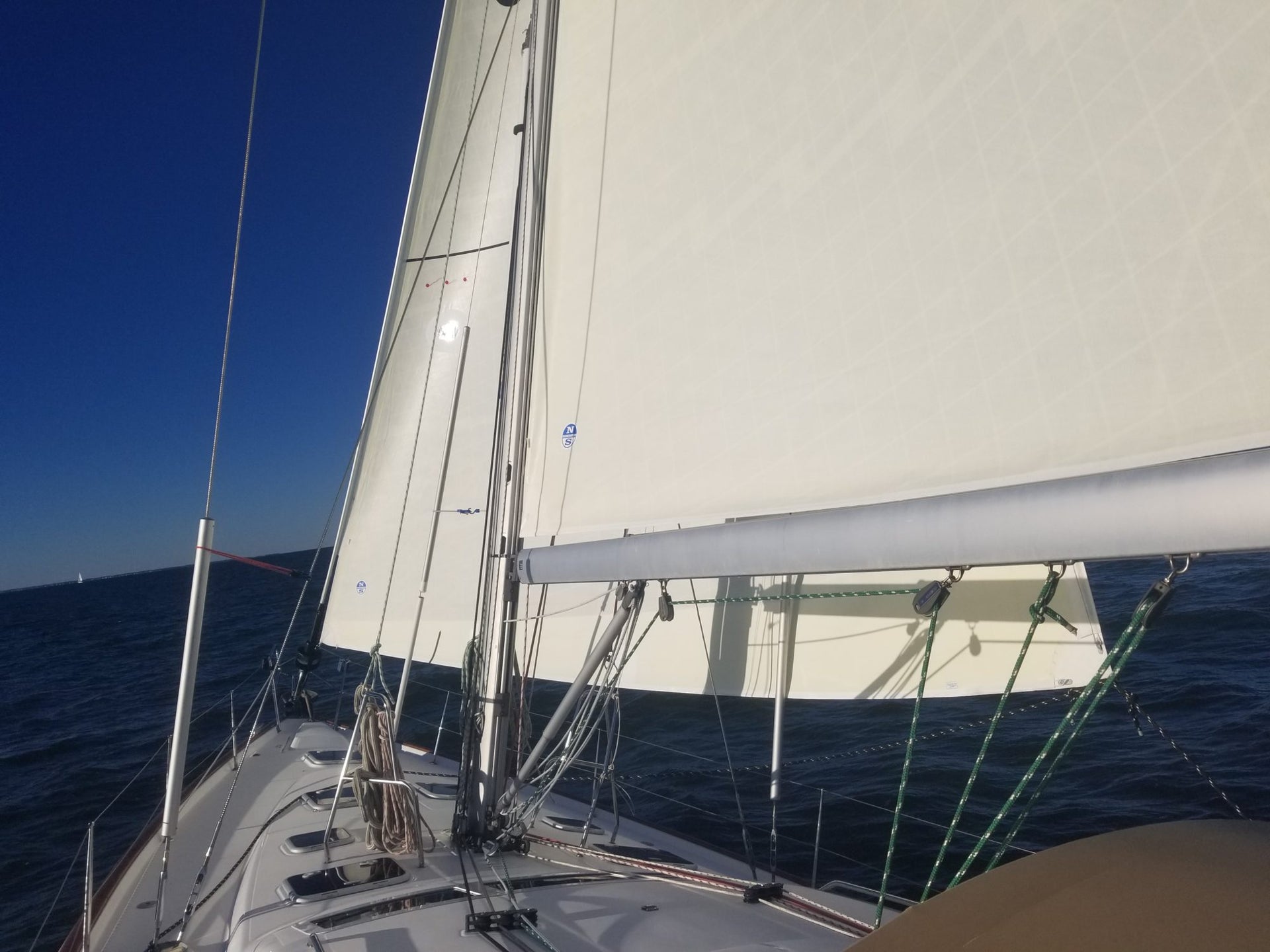
LOCAL CLIENTS GET NEW 3Di OCEAN WARDROBES
CRUISING CLIENTS GET A NEW 3Di WARDROBE
North Sails Expert Austin Powers Shares All On Cruising Clients with New 3Di OCEAN
As we all know this year has been unlike any other in the sailing world. In the last couple of updates, we have been focusing heavily on all of the amazing results that our customers have been achieving around the Chesapeake Bay. This month we have decided to shift more towards a cruising focus, as we are also in the great migration season where cruisers up and down the East coast start to chase warmer weather. For those lucky few, they are able to head south to paradise on their sailboats. For this month we want to highlight two boats who both received new suits of performance cruising sails in North’s 3Di family. The first is a Beneteau 473 called Flight Risk who took delivery of some new 3Di OCEAN 330 series sails. Specifically, an In-mast furling mainsail and 140% roller furling genoa. The owner of this boat, previously had woven polyester sails and was ready to take a step up in performance over his previous set. The 330 series utilizes the same polyester fiber that is found in woven sails, but when paired with the 3Di production process you get a significantly more durable, lower stretch sail, with no extra weight from Mylar to stabilize the fiber. Both the In-mast mainsail and roller furling genoa had stable shapes that could be de-powered easily which means better pointing, less healing, and arriving to the destination quicker.
140% Roller furling genoa has a rope luff on opposite side for roller reefing
The North Sails service team along with Will Keyworth to help with the test sail (Will Keyworth Photography)
Also this month, the North Sails Annapolis loft put new 3Di OCEAN 700 sails on a Swan 77. The boat was captained by Peter Horton who decided to go with North Sails after receiving sails on a previous Swan. This boat had just gone through a full refit including new decks, rigging, mast painting. The only piece left was to bend on the new sails. North’s OCEAN 700 series which is geared to be the most durable Superyacht-centric product that we offer. This series uses a blend of Ultra PE and Aramid Fibers to make a rugged low stretch composite sail that makes little compromise on weight. Next month we plan to check in on the various Frostbite series happening around the bay. We hope to see all of our customers out on the water!
3Di OCEAN 700 with White Surface tapes, Full Carbon C tech battens
READ MORE
READ MORE
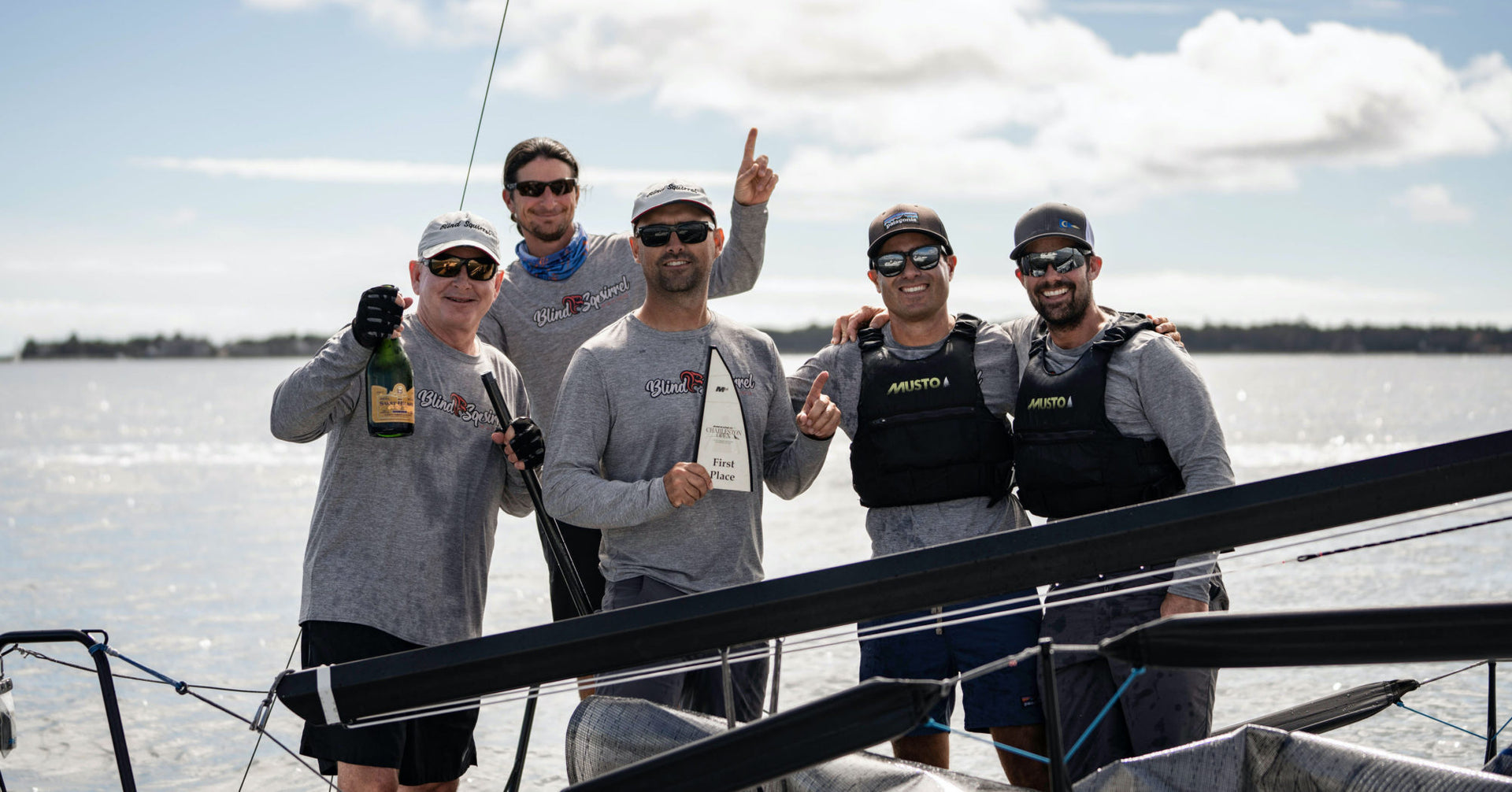
NORTH SAILS DOMINATES MELGES 24 CHARLESTON OPEN
NORTH SAILS DOMINATES MELGES 24 CHARLESTON OPEN
North Sails Jeff Bonanni Shares Replay
Credit: Daniel Bergey
What factors do you believe led your team to the win?
Team owner and helm John Brown did a great job managing thin lanes, which allowed us to execute our strategy in every race.
What was your inventory at the open. What sails did you use? What difference did you notice between you and other teams?
We had light to medium breeze, with flat water, so we used the North Sails AP-3K mainsail, J-7K jib and P-1 Reacher. These designs are the gold standard in the Melges 24 class, and we like these particular sails for the lighter breeze in Charleston. They react to sail control changes very well, which is important on a short race track like Charleston when you need to work through a few upwind modes.
How was your overall feelings like heading into the last day? Any nervousness? Was there anything your team had to do well to remain in standings?
I wouldn’t say nervous, our team has a lot of strong personalities with even more self-confidence. The breeze was very light on the final day, and ultimately the only race was abandoned. I find it very difficult to stay engaged when waiting for breeze, but we kept the energy up and remained prepared.
List your top three takeaways from this event.
In Charleston, stay disciplined with regards to current strategy. Current trumps all other factors in this location particularly.
Always stay in touch with the pack of boats in front of you. There are many opportunities to pass and even more opportunities to gain as long as you stay close to the pack just ahead of you.
Ensure that you’re tuned and trimmed for the conditions! With the flat water conditions we had at the regatta, a firm leech seemed to work best for us.
What’s next on the racing circuit for the Melges 24 class? What are you most looking forward to?
Our next event is the Atlantic Coast Gulf Coast Championship in Mobile, AL. We plan on sailing all the events through the 2021 Worlds in Charleston, which we’re most looking forward to.
Why do you like racing in the Melges 24 class? What keeps you coming back?
We think this is the best sport boat design ever! It’s very rewarding to sail, takes us to beautiful venues all over the US and World, and we all have life-long friends sailing in the class.
Credit: Daniel Bergey
Shop Inventory Contact an Expert Request a Quote
READ MORE
READ MORE

THE AMERICA'S CUP HEATS UP IN AUCKLAND
THE AMERICA’S CUP HEATS UP IN AUCKLAND
Key Developments from an Evening with Burns Fallow
📸 Emirates Team New Zealand
Time is closing in on the 36th America’s Cup which commences in Auckland on the 6th of March 2021, and with the recent launch of Emirates Team New Zealand’s (ETNZ) second boat, competition is heating up between the teams. North Sails and ETNZ were delighted to host an evening of discussions at the ETNZ base, kicked off by an exclusive virtual video from North Sails President, Ken Read in Newport, Rhode Island, announcing his plans to come to New Zealand to commentate for the duration of the America’s Cup.
North Sails Auckland General Manager, Richard Bicknell, introduced North Sails designer and speaker for the evening, Burns Fallow. As one of the most sought-after sail designers in the world and a colleague of Bicknell’s for 20 years, Fallow started working for North Sails in 1988 and has since been heavily involved in the Whitbread, Volvo Ocean Race, and the America’s Cup, with this cycle marking his sixth Cup; a special milestone to reach.
From Grand Prix to Superyacht sails, Fallow holds an international presence in sailmaking and takes great pride in designing sails for more local boats as well. He also spent time mentoring younger designers across the globe, namely Gautier Sergent in 1999 who is now the chief sail designer for INEOS TEAM UK.
We have compiled our key takeaways from the in-depth discussions had by Burns Fallow and teammate Rob Salthouse:
1. The AC75’s are the fastest monohulls ever to sail upwind:
Reaching speeds of 20 knots velocity made good (VMG) upwind, the AC75 marks the evolution of sailing over the last 20 years. No other sport in the world has seen improvement like this over such a short time. “The AC75 Class Rule is the bible that we have to abide by in terms of specifications of the yacht,’’ Fallow explains. “The rules can sometimes get in the way of great ideas, but in this class, unlike the last couple of Cup cycles, it has been left reasonably ‘open-ended’ to let different teams express themselves from a design point of view.’’
2. Why do we want boats to fly?
It is a reduction of drag. Carrying a hull through the water when sailing upwind or downwind, the boat is going to travel slower than if you can just rely on the foils to balance all of the aero-forces.
📸 Emirates Team New Zealand
3. Key Design Areas:
Hull: With an overall length of 75-feet (including bowsprit), the four teams weigh within 1 kg of each other. The foils and cant-axis are fixed, and so is the displacement. All of these factors are tightly policed.
Foil Wings: Sitting at the bottom of the foil, the wings are an active area of development and a highly critical part of the design process. The tab on the back of the foils is controlled manually to make the boat fly high or low.
Rudder: The AC75’s have a single rudder on the centerline with a horizontal wing (elevator) at the back. The elevator is an actively controlled surface and thus has limits in width, height, and length to help maintain flight.
Rigs: The rigs are only just longer than the boat at 26.5m compared with the AC72, which had a 40m mast length. The AC72 and AC75 weigh about the same with a similar righting moment, but in place of a keel, the AC75 has two foil arms, so a taller mast would affect the stability of the boat when off the foil. This can make the transition period tricky when trying to get the boat to take off, so requires a lot of management.
Double-skin Mainsail: Large D-Section spar with a pair of mainsails hoisted together to retain traditional concepts of sail design. The double-skin reduces drag by stopping the sails flapping through the tacks and is also very stable through manoeuvers.
4. Racecourse:
Races will start later in the day (~16:00 NZDT) to increase the chances of a good sea breeze developing and also working better for coverage around the world. The pre-start will be between 2.5-3 minutes, starting upwind with a windward leg followed by two or three laps to the finish. The typical race length is expected to be approximately 25 mins.
5. All North Sails teams are using full 3Di inventories:
Fallow comments, “It gives me a huge amount of flexibility as to where I want to put tapes. If I’ve got a problem area in a sail which I spot in the simulations, I can put some tape there. The makeup of the fabric is the same as what we might use for any boats with 3Di sails. The primary difference is the percentage of carbon we might put in relation to the Dyneema from a longevity/toughness point of view. But our sails are built on the same machines, same molds, same design software.’’
6. All the operations and functions of the foils are manual:
There is no ‘follow-the-dot’. Controlling the foils lies all in the hands of the guys onboard who are doing other jobs as well. They’ve got a lot on!
Looking ahead, the four teams have a series of match races over 2-3 days in December (Christmas Cup), followed by the PRADA Cup in January to determine which of the Challenger teams will take on the defender Emirates Team New Zealand. To win the America’s Cup, first, you have to win the PRADA Cup. So now it’s time to sit tight and wait to find out who will take home the oldest trophy in international sport.
📸 Emirates Team New Zealand
READ MORE
READ MORE

#NSVICTORYLIST: IRISH CLIENTS STAND OUT IN 2020
#NSVICTORYLIST: IRISH CLIENTS STAND OUT IN 2020
A Successful Year Despite Unusual Circumstances
Light air sail set-up session on Beneteau 31.7 'After you Too' Dublin Bay in July.
Nigel Young: Cork
Here at North Sails Ireland, we wanted to celebrate our clients' fantastic achievements in 2020. Despite this being the shortest Irish sailing season on record, our amazing clients still made the best of it whenever they could get on the water. We put together our traditional Victory List for 2020, thinking it might not add up to much and we were very pleasantly surprised; congratulations to all the winners powered by North Sails.
It was like letting off a champagne cork in July when suddenly all the racers were released from captivity! Sometimes you have to stop what you are doing and take stock to realize how much you enjoy something. I think that was the case for so many other sailors and me when we could finally get back sailing again—remembering why we love this sport so much and just enjoying the simple act of sailing.
The beauty of limited travel was that I was home to participate in lots of local races that I may have missed in the past. New experiences with new teams and sailing different types of boats made it all the more fun. We had lots of sail orders in the process when the pandemic hit, so once the restrictions were lifted, we were all swamped, checking out new sails and working with our clients out on the water. We are all looking forward to 2021 and a slightly different sailing season ahead, fingers crossed!
: 'Lambay Rule's winning HYC Wednesday flying her 3Di 780 Mainsail and Code 1 Jib. : Aboard JPK 1080 'Rockabill VI' winning DBSC Thursday race in August flying her 3DL 860 Mainsail and 3Di 780 Code 2 Jib. : DBSC Racing on Beneteau 40.7 'Tsunami' © Onboard Images by Prof
Maurice O'Connell: Dublin
We all know that 2020 continues to be a strange one! What I loved about it was the sheer unbridled joy that our fantastic clients all over Ireland experienced once they got out racing again in July.
I was chomping at the bit! In that short two-month window, I fitted sails, raced with clients, and coached teams in the HYC Wed night series, the DBSC Thursday and Saturday series, the truncated RCYC Autumn League, and the epic Fastnet 450 race co-hosted by the National YC and Royal Cork YC. I also visited Bangor in Co. Down and several clubs in Strangford Lough to
deliver new sails and coaching sessions with our clients there.
Well done, and thanks to all our amazing customers for squeezing in these fantastic results in 2020.
Sail FAST, and here's to lighting a BIG Christmas candle for 2021!
https://youtu.be/-SnGH8uxpJQ
Shane Hughes: Wicklow
'Well, 2020 will have to go down as the most bizarre sailing season in my (and I'm sure most of our) living memory. Looking back, it is hard to believe we got any sailing in at all, but we did! Actually, for the few months that restrictions allowed us out on the water, the appetite for competition and often just the option to be on the water enjoying fresh air and sailing generally left me with a very positive feeling about how 2021 will pan out. Far from a reluctance to get out there, the pervasive attitude was positive and proactive. I hope this spirit is carried forward into 2021.
Sailing wise, I got over to Howth for the midweek series running over there. DBSC, as always, was well supported, as was the ISORA series. One design racing for me was restricted to the J80 Nationals in Dun Laoghaire. As for minimal events, I managed to get some socially distanced Fast 40 sailing in the UK, including around the Isle of Wight race with just 6 of us onboard; that was busy! Near the end of the year, we managed to get one regatta sailed on the Club Swan 50, but all in all, the international regatta calendar was a washout this year.
In June, I also took ownership of the North Sails Ireland sail service operation from Richard Marshall. The support I have received so far from North Sails clients has been truly amazing, and I am very grateful for that. As a new start-up business in the current pandemic, I did not expect such a positive response, but we are fully up and running now and getting a great response so far.
We are looking forward to working with existing and new clients in 2021 and are standing by to help with all your sail care needs, so please get in touch and get prepped for a busy 2021. Fingers crossed!
Nieulargo takes the winning gun overall in the Fastnet 450
Chris Power Smith and his J122 team take line honours in the Fastnet 450
Denis & Annamarie Murphy overall winners Fastnet 450
READ MORE
READ MORE
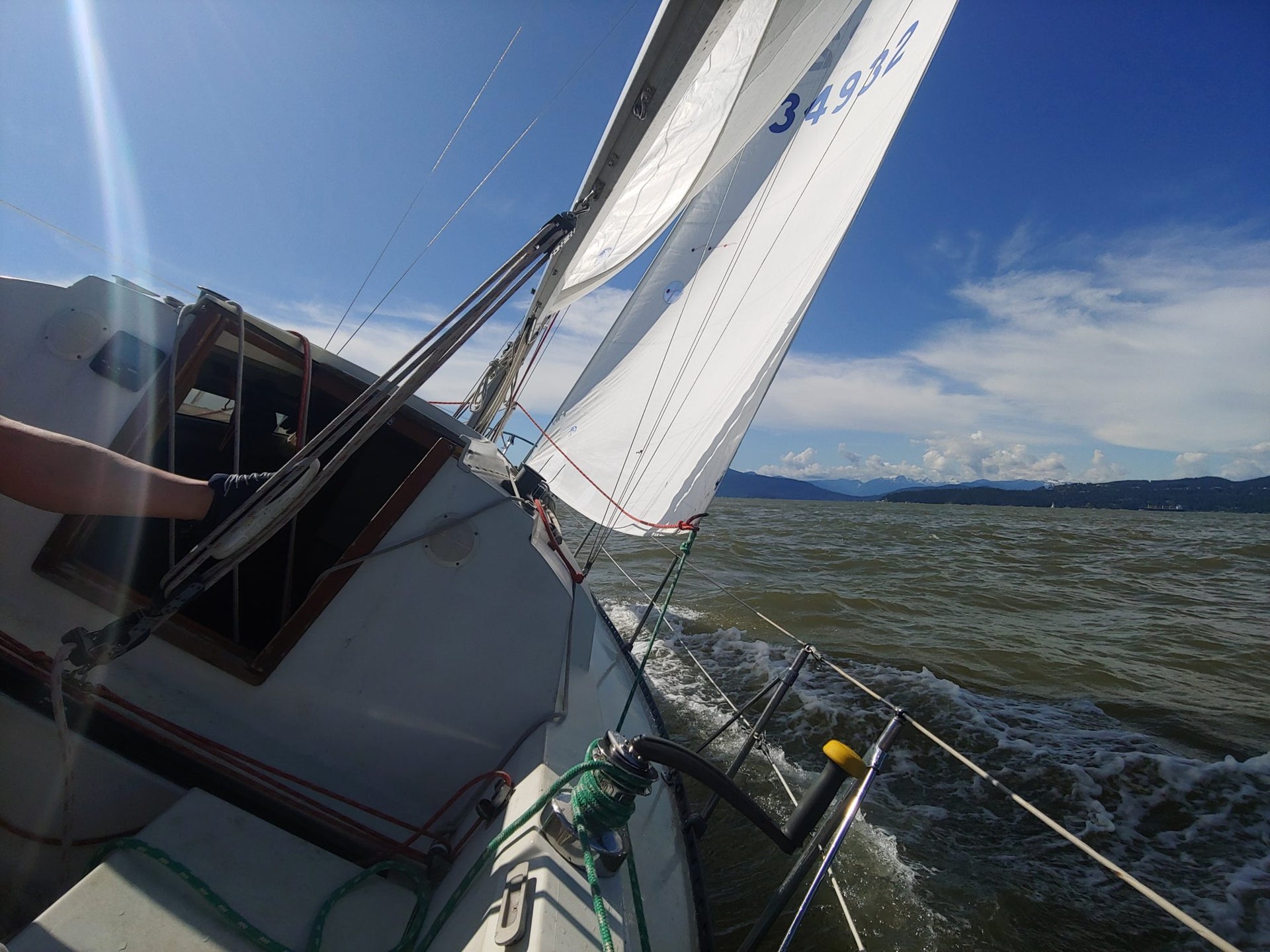
NEW LIFE WITH NEW SAILS
NEW LIFE WITH NEW SAILS
Customer Spotlight: Matthew Henderson
Local North Sails expert Drew Mitchell sat down with Matthew Henderson, owner of C&C 29 MK2 Mariah, to discuss her new sails and the impact they've had.
In the last 18 months you have purchased a full set of upwind and downwind sails off North Sails for Mariah. Why did you choose North Sails over other sail makers and how was the experience?
North Sails and Drew Mitchell were recommended to me by Dave M on Boondoggle (J/160). Being my first set of sails on my first boat (which I had only owned for a year) I was still figuring out what I wanted from new sails and how I was going to be using the boat long term. Drew helped explain some materials, construction, PHRF size limits, battens, etc. rather than just turn around a quote like some others and it earned my business. I was very happy with the upwind sails and chose North again for two new kites a few months later. I’m very happy with the new sails and the difference they make.
With the current state of the world people are sailing with less crew. You are a racer/cruiser that is usually sailing short handed, how have you set up your boat differently than say a full time racer/cruiser that sails with a full crew?
Fortunately the boat was well setup for singlehanded sailing when I bought it: Nice 40 speed Andersen self-tailors, traveller and mainsheet easy to reach from the wheel, and all control lines led aft. Being a bit of a tender boat I’ve focused a lot on mainsail control. I’ve added temporary means to add tension to the babystay, added a Cunningham, and led the Vang aft to the cabintop. I’ve also focused on sheet leads with inhaulers, barberhaulers, and tweakers to get a bit more out of the sails I’ve got up and avoid a peel.
When switching from cruising to racing does much change on the boat?
If I happen to have some casual crew I tend to do very little. If I’m single-handing or with crew that cares I give the bottom a scrub and unload everything I can: 200ft of anchor chain and the primary anchor, the two 10lb propane bottles, crab traps, cockpit cushions, tools, spares, 600ft of stern line, barbeque… the list goes on.
I follow you on instagram and it seems like you are out on the water all time. How many days have you got out this year and how do you manage to get out so often?
As of November 8th I’ve been off the dock 102 days this year with 400 hours underway. 65 days were single-handed. With working remotely all spring/summer using the boat just became habitual with every sunset sail after work, morning coffee on the hook, and hoist of the sails reinforcing it. There’s plenty of daylight after work all summer and the Espar works well when it’s cold. I can’t understand why marina’s aren’t empty every weekend.
What was your longest trip this year and where did you go? What is your favorite part about cruising in the PNW?
I had three big trips this year; 10 days in Desolation in early July and 10 & 20 day trips throughout the Gulf Islands. Swimming in the dark with phosphorescence glittering over my entire body is definitely a favourite.
What was your favorite cruising moment this year?
The dinghy shenanigans were certainly memorable. Took the 8ft inflatable through some 10kt rapids in Von Donop Inlet and got four dinghies lashed together up on plane just to name a couple.
What races have you done this year and what is your favorite part about sailboat racing?
I did the unofficial round Bowen, Great Gambier Gallivant, Big Breakfast Bonanza, RNSA, Jack & Jill, and a couple other unofficial laps. I enjoy comparing my skills and boat performance to everyone else and learning as much as I can. Learning all of the local tactics with respect to tides and winds helps me stay sailing while cruising longer and get to my destinations faster.
Every sailboat owner is always working on his/her boat. Do you have any projects on the go or planned for the near future for Mariah?
I’m hoping to replace all of my running rigging over the winter with some higher tech stuff, I’ve got new clutches and deck organizers to install, new v-berth hatch to install, a transmission to rebuild, and some lights I want to replace.
If you had a choice of any racer/cruiser to race and cruise in the PNW which boat would you choose and why?
I’ve had a big crush on the J/112e lately. Modern rig and sail inventory, great performance uphill and downhill, moves in light air, it isn’t trying to be a floating apartment, and I’d be happy to take it to Hawaii and back if I can get the time away from work.
READ MORE
READ MORE
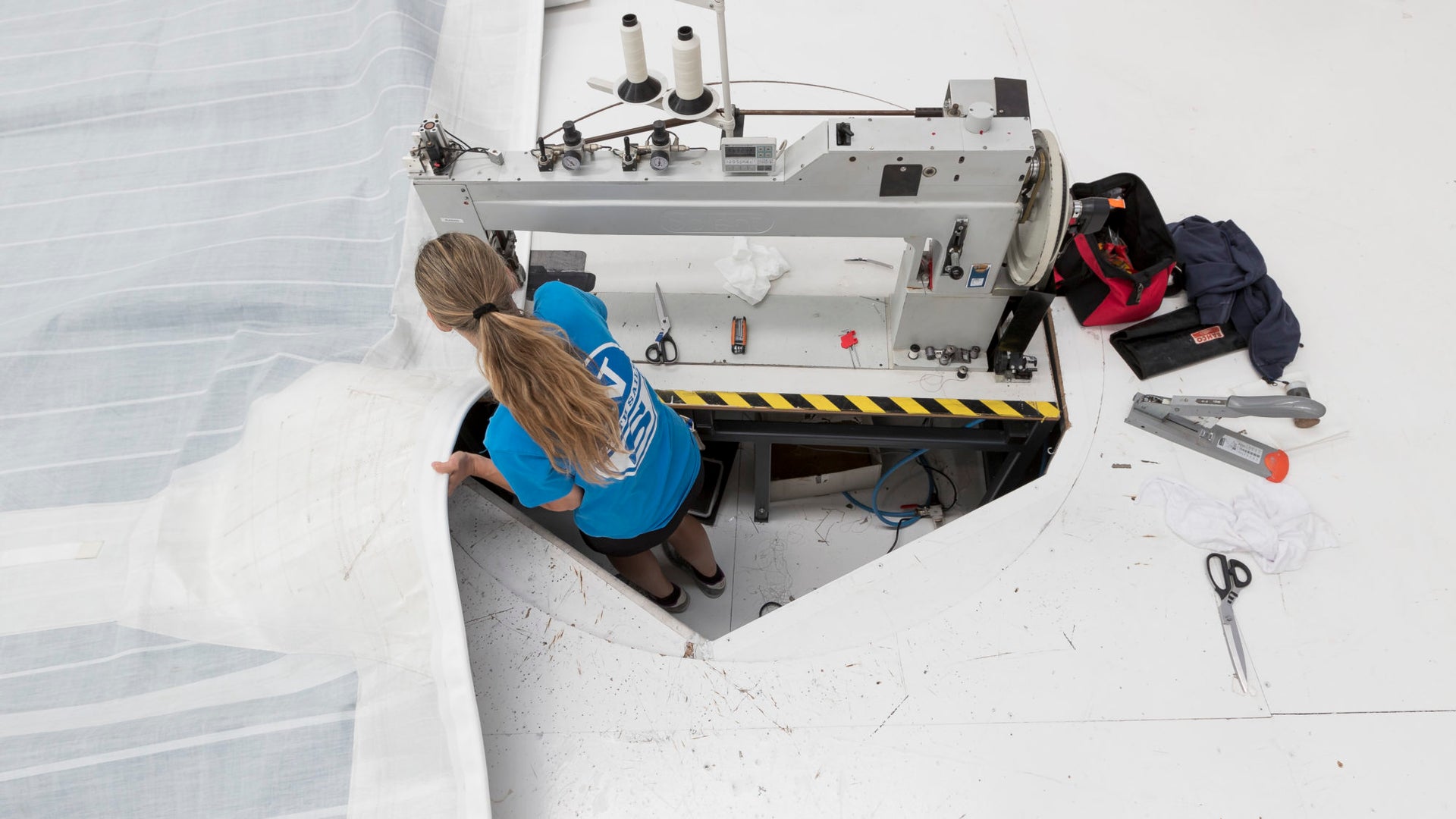
NORTH SAILS EXPANDS NETWORK IN GERMANY
NORTH SAILS EXPANDS SERVICE NETWORK IN GERMANY
Fehmarn & Wilhelmshaven Added to the Roster of Certified Service Lofts
North Sails is committed to providing its customers with high-quality service, professional repairs, and maintenance on-site at any time or place. Through two new locations in Fehmarn and Wilhelmshaven, we have gained further experienced partners.
“We are looking forward to the cooperation and are sure that we have found an optimal extension of our distribution network in Germany with both locations,” comments Stefan Matschuck, Sales Manager of North Sails Germany.
NORTH SAILS FEHMARN
Coast Sails is partnering with North Sails to provide a Certified Service presence in the north-east of Germany. Since 2015, the team of sailmakers at Coast Sails provide expertise in sail and tarpaulin repairs, rigging, and yacht services.
“With North Sails on Fehmarn, we are creating more proximity to our customers in the north-east by offering them an even more comprehensive sailing service directly on-site”, reports Stefan.
Managing Director of Coast Sails, Martin Jannsen, holds the 2011 X-99 World Championship title and sailed as part of the Heizkörper Match Race Team; currently the best German team in the world ranking.
“The incentive of first-class customer service connects Coast Sails with North Sails,” Jannsen explains. “North Sails is a market leader in technology, logistics, and quality. In the first years of my self-employment, I learned how important it is to have strong and reliable partners who share the same goals. In North Sails, I have found this partner”.
NORTH SAILS WILHELMSHAVEN
Jade Yachting and North Sails have partnered to provide another experienced and professional service location in Wilhelmshaven.
“At North Sails, the international network of experts and the broad range of knowledge is a huge advantage. Together with the innovative ideas for the cruising sector, we are able to offer our customers tailor-made products,”, comments Jade Yachting Managing Directors, Tobias Schadewaldt and Hendrik Kohrs.
READ MORE
READ MORE

SKIMMELSVAMP, JORDSLAG OG MUG PÅ SEJL: HVAD GØR MAN
SKIMMELSVAMP, JORDSLAG OG MUG PÅ SEJL
Hvad gør man
📸 Michael Egan / Egan Images
Vores Gør Det Selv guide til sejlpleje gælder kun traditionelle dug og laminater. 3Di er en komposit teknologi og ikke et laminat sejl!. For information om pleje af 3Di-sejl, se artiklen Sail Maintenance. Her er, hvad du har brug for at vide når traditionel sejldug er blevet jordslået.
Jordslåede sejl. Der er mange gæt på, hvorfor nogle sejl bliver mere jordslåede end andre, men desværre ikke så meget fakta. Tre ting vi ved:
Skimmelsvamp, jordslag og mug er ikke et strukturelt problem i sejlet.
Skimmelsvamp, jordslag og mug ser grimt ud.
Det er ikke rart at se på sine sejl, når de har sorte pletter.
Et par ting vi har observeret på sejl, der er og ikke er blevet angrebet af jordslag:
Sejl i varme fugtige områder er i høj grad udsatte for at få skimmelsvamp, jordslag og mug.
Det ser ud til at hjælpe, hvis man forsøger at holde sejlet tørt. Ved for eksempel at tage en kort sejltur for at lufte en fugtig rullegenua, især hvis du ikke skal bruge båden i en længere periode, og din sidste sejltur involverede en masse regn og skumsprøjt.
Saltvandrester tørrer langsommere end ferskvand, så saltvandets fugtighed er værre end ferskvandets fugtighed.
Områder med mere luftforurening eller pollen har tendens til at give flere problemer med jordslag og mug.
Laminerede sejl er mere modtagelige for skimmelsvamp, jordslag og mug end vævede Dacron-sejl.
Rengøring af skimmelsvamp, jordslag og mug
Sejldugsproducenter har gennem tiden udviklet forskellige kemiske behandlinger for at hæmme vækst af skimmelsvamp, jordslag og mug når dugen produceres. Det er dog en fin balance da folk helst ikke skal blive syge af kemien, derfor er den nuværende løsning ikke perfekt, hvilket betyder at problemet ikke er helt forsvundet.
Skimmelsvamp, jordslag og mug på overfladen kan renses af sejlet med en fortyndet Rodalon-opløsning. Men når skimmelsvampen kryber ind mellem lagene af stof, skal sejlene sendes til industriel rengøring. For mere information, se artiklen Vask af sejl fra A-Z
Det er vores erfaring at når først et sejl får skimmelsvamp, vil det altid have skimmelsvamp. Et godt rengøringsmiddel kan reducere de sorte pletter, men hvis båden forbliver i det samme område, hvor skimmelsvampen opstod, er det desværre oftest kun et spørgsmål om tid, før de bliver sorte igen.
Hvordan undgår man skimmelsvamp og mug
Luft dine sejl regelmæssigt, især efter en regnvejrsdag.
Soltørring fungerer rigtigt godt, men for meget sol kan give UV-skader.
Læg ikke sejlene væk mens de er fugtige eller fulde af salt. Saltet tiltrækker og bevarer fugt. Opbevar sejlene tørt.
Hvis du ikke bruger din båd i mere end en uge eller to, skal du tage sejlet af riggen og opbevare dem tørt eller sørge for at nogen “lufter” dem med jævne mellemrum.
Hvis skimmelsvamp opstår
Behandl jordslaget så hurtigt som muligt. Jordslag og mugpletter er lettere at behandle, når de er nye, relativt små og tæt på overfladen.
Hold jordslags- og muginficerede sejl adskilt fra de rene sejl da jordslag og mug desværre “smitter”
Den mest populære fungicid er Rodalon, der sælges i en opløsning specifikt til bekæmpelse af skimmel og mug.
BRUG ALDRIG KLORIN UNDER NOGEN OMSTÆNDIGHEDER!
Ved dybtliggende pletter nedsænkes pletten i et fungicid i 12 timer eller mere. En høj koncentration er ikke nødvendig. Ingen skrubning af overfladen vil kunne gøre, hvad en god gennemblødning kan.
Brug aldrig blegemidler! Klorin kan forårsage skader på langt sigt.
Hvis mugpletten ikke kan fjernes ved ovenstående behandlinger, er der desværre ikke meget mere du kan gøre. Yderligere behandlinger kan forårsage skade på sejlet.
Scotchguard® og lignende vandafvisende midler har ikke vist sig at hverken dræbe eller forhindre skimmelsvamp.
Lysol® husholdnings desinfektionsmiddel er et effektivt fungicid og hæmmer udviklingen af skimmelsvamp. Nogle sundheds- og miljøstyrelser forbyder brugen af stærkere fungicider.
Alt, hvad du bruger til at dræbe eller fjerne skimmelsvamp, vaskes eller slides væk på relativt kort tid. North NorLam™ dug bliver behandlet med det kraftigste kommercielle fungicid, der er tilladt. Det er 100% effektivt under laboratorieforhold, men alligevel påviseligt mindre effektivt i den virkelige verden.
Slutteligt om skimmelsvamp:
Det er ikke nogen hemmelighed, at skimmelsvamp vokser på sejl. Selvom vi ikke helt forstår det og ikke har mange gode råd til forebyggelse og udbedrelse, er det her, hvad vi ved, og hvad du bør vide, når du håndterer problemet med skimmelsvamp.
Skimmelsvamp er en svamp. Ligesom andre svampe vokser den bedst under fugtige forhold og trives ikke i dagslys. Skimmelsvamp trives i alle slags klimaer, både de varmeste og de koldeste.
Skimmelsvamp lever af mikroskopiske organismer, som det får fra luften, vandet eller sejlets overflade.
Skimmelsvamp dannes på moderne syntetisk sejldug, inklusive lim og andre klæbemidler, overflader, film osv., Men forårsager ikke strukturelle skader.
Skimmelsvamp påvirker ikke sejldugens ydeevne, så det er udelukkende det kosmetiske og æstetiske udseende, som tager skade.
Skimmelsvamp kan vokse på ankerliner og fortøjningsliner, skøder og sejlcovers, dodgers, cockpitpuder, madrasser, skotter osv. Skimmelsvampesporer bæres i luften, især i regnvand, og overføres let ved kontakt.
READ MORE
READ MORE

VASK AF SEJL FRA A-Z
VASK AF SEJL FRA A-Z
Vores team af sejlmagere fortæller dig alt, hvad du behøver at vide om sejlvask
Vi får ofte spørgsmålet: 'hvordan vasker jeg mine sejl' og 'hvordan får jeg mine sejl til at se ud som nye igen'. Det korte svar er (ikke overraskende), at få dine sejl vasket.
De tre vigtigste fordele ved sejlvask er:
Hvidere sejl
Renere sejl
Forlænget holdbarhed
Sejl ser altid lysere og nyere ud efter vask. Selve sejlet er renere, da snavs fjernes under processen. Resultatet er forlænget holdbarhed på dit sejl, fordi du slipper af med mug og skimmelsvamp, som dermed ikke nedbryder sejlet.
Selve processen er ret enkel og tager cirka en uge fra start til slut, inden vi gennemfører vores 10-punkts service inspektion.
Ud over sejl, har vi også mulighed for at vaske bompresenninger, sprayhoods og andet kanvas.
Prissætningen er baseret på størrelsen på dit sejl.
Lad os repetere!
Hvad kan en sejlvask fjerne?
Insekter
Snavs
Salt
Oliepletter, Mug og skimmelsvamp kan oftest fjernes, men i 100% rent bliver det desværre ikke.
Kan man vaske 3Di?
Ja. Som alt andet, der er i kontakt med saltvand, kan 3Di-sejl skylles med ferskvand og tørres inden opbevaring.
Hvilke materialer er enkle at vaske?
Dacron
Kanvas
Hvilke materialer skal man være forsigtige med at vask.
Laminat sejl bør spørge sin sejlmager til råds, hvis sejlet kræver mere end blot fersk vand for at blive rent.
3Di er ikke et laminat sejl
Hvordan fungerer prissætningen?
Størrelse på sejlet
Forlig x Fod /2
Se flere tjenester, der tilbydes af dit North Sails certificerede serviceteam!
READ MORE
READ MORE
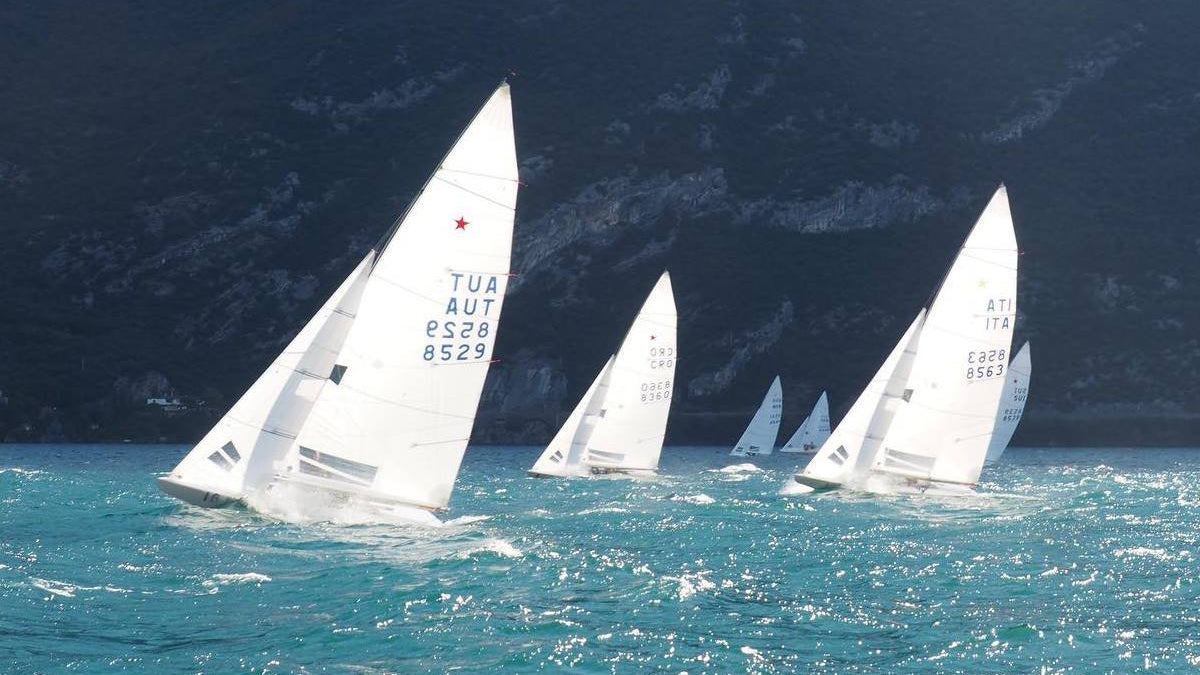
STIPANOVIĆ I BILIĆ 4. NA EUROPSKOM ZA STELLE
Stipanović i Bilić 4. na Europskom za Stelle
Foto: ISCYRA Facebook
Od 28. listopada, pa do 1. studenog na sjevernom kraju jezera Garda jedrilo se Europsko prvenstvo klase Zvijezda. Nažalost, zbog raznoraznih blokada proglašenih u mnogim državama po Europi broj natjecatelja nije bio reprezentativan, ali u ovom slučaju najvažnije je bilo da se tradicija održi, a to je organizatorima pošlo za rukom uz podršku osamnaest posada iz devet Europskih zemalja i Argentine.
Administracijski dani, rezervirani za premjeravanja i registraciju bili su srijeda i četvrtak, 28. i 29. listopada, a jedrenje je bilo na rasporedu od petka do nedjelje.
Ukupno se odjedrilo 7 plovova po laganim i umjerenim vjetrovima, a jedini hrvatski predstavnici, posada Tonči Stipanović i Tudor Bilić zauzeli su izvrsno 4. mjesto! Na kraju ih je samo pet bodova dijelilo od postolja na kojem su završile posade s 21, 23 i 24 boda.
Kao što se analizom rezultata može vidjeti, prvih 6-7 posada jedrilo je prilično stabilno i uglavnom su oni između sebe podijelili mjesta u top 10. Jednako tako je i naša posada osvajala dosta dobre rezultate i jedino su u prvom plovu bili lošiji od 10. mjesta. S obzirom na broj odjedrenih regata taj rezultat su na kraju mogli odbaciti, ali tijekom prva dva dana malo im je kvario rezultatsku sliku.
Inače je ista ova lokacija bila poprištem Europskog prvenstva klase godinu ranije kad je na njemu jedrilo 80 posada, a ponovne organizacije se klub Fraglia della Vella Riva uhvatio jer se ovogodišnje EP na planiranoj lokaciji otkazalo. Domaćini su trebali biti jedriličari iz Stockholma, ali je procijenjeno da je epidemiološka situacija u talijanskim Alpama dosta povoljnija i da će regata imati bolji odaziv ako se održi u Italiji.
Brojevi s kojima se pred regatu baratalo najavljivali su sudjelovanje tridesetak posada, ali kako su pojedine države krenule s mjerama zbog očekivanog jesenskog vala Korone, broj je spao na spomenutih 18.
U petak, prvog dana regate odjedrila su se dva plova po laganim uvjetima dijametralno suprotnih vjetrova. Prvo se jedrilo po sjevercu od desetak čvorova, a drugi plov po laganoj verziji Ore, lokalnog poslijepodnevnog vjetra koji ovog puta nije prelazio 8-10 čvorova.
Tonči i Tudor su dojam 12. mjesta iz prvog plova u drugom poboljšali s finišem na drugom i kraj dana su dočekali kao četveroplasirani s jednakim brojem bodova kao i trećeplasirana posada iz Argentine koja je za kormilom imala jednu dizajnersku legendu Juana Kouyoumdjiana.
Idućeg dana odjedrena također su odjedrena dva plova. Ovog puta naši momci nisu dozvolili da im se desi kiks iz prvog plova i regatu otvaraju s 3. mjestom, dok u četvrtom plovu kroz cilj prolaze na sedmom mjestu. Stvarno im se ne može ništa zamjeriti s obzirom da je riječ o stvarno solidnom prosjeku, ali još četiri posade su odjedrile regatu na jednako dobrom nivou i na kraju je bodovna situacija bila krajnje napeta.
Osim prvoplasirane švicarsko-portugalska posade Eckert-Melo, koja je i drugi dan završila kao vodeća s 5 bodova, drugoplasirani Austrijanci imaju 11, zatim Argentinci, Nijemci i naši sa po 12 bodova i najbolja talijanska posada s 13 bodova. Primjenom pravila broja boljih mjesta i boljeg plasmana u posljednjem plovu naši su najlošije plasirani u skupini od 12 bodova i na spavanje odlaze kao 5. u generalnom plasmanu.
Pretposljednji dan regate Regatni odbor je organizirao još dva plova. Tonči i Tudor su i dalje u dobroj formi. Jedrilo se po jakom sjevercu i dan otvaraju s petim, a zatvaraju ga s još jednim drugim mjestom. U odnosu na konkurenciju bili su koncentriraniji i subotnja jedrenja završavaju na trećem mjestu s dva boda razlike od drugoplasiranih Austrijanaca.
I za kraj, u nedjelju 1. studenog, odjedrio se još samo jedan plov. Zanimljivo je da su do tada vodeći uglavnom lošije jedrili nego prethodnih dana, a da su profitirale posade iz, može se reći, drugog plana. Jedini iz liderske skupine koji su ponovili dobro jedrenje su bili Talijani Negri i Lambertenghi koji su od 4. plova bili u neprekinutom nizu pobjeda i drugih mjesta. Naš dvojac nažalost upisuje plasman na desetom mjestu i taj bodovni teret ih udaljava na korak do medalje.
Foto: ISCYRA Facebook
Bilo nam je baš lijepo. Sedam dana smo jedrili svaki dan, tako da smo stvarno zadovoljni što smo uspjeli izdvojiti taj tjedan ranije da osjetimo brod i da budemo koncentrirani isključivo na Stellu. Tako da je ukupni dojam stvarno dobar iako je četvrto mjesto nekako najgore...
Stvarno smo davali maksimum. Bilo je i dosta grešaka... vožnja u krmu je totalno drugačija i ja sam imao nekoliko krivih procjena, tako da smo tu prosuli nekoliko bodova.
Ponovno smo u odnosu na konkurenciju bili slabiji po pitanju opreme. To je bila ekipa koja je totalno nabrijana. Imaju brodove ne starije od tri godine, a na svaku regatu dođu s novim jedrima! Dok smo mi jedrili s brodom iz 2008. i glavnim jedrom starim tri godine.
Jedino smo flok imali novi i to se moram zahvaliti Marku Marinoviću koji nas je počastio s njim i to nas je stvarno spasilo. Da nismo imali taj flok i da smo jedrili s našim starim ne bi sigurno bili ovako dobri.
Na kraju kad se sve zbroji i oduzme mislim da je ovo stvarno bio maksimum koji smo mogli pružiti i ono što je dobro je to da smo se doma vratili s još većim željama i ambicijama za jedrenje u ovoj klasi, a prvi korak nam je da se bolje opremimo za slijedeću regatu.
A što se vremena na regati tiče, jedrili smo uglavnom kroz jutro i nije baš da su bili lagani vjetrovi. Puhalo je nešto slično našoj buri i vjetra je bilo čak i do 16-17 čvorova.
Jedino smo jednu regatu odjedrili po Ori i tada je puhalo 7-8 čvorova. Tako da je na kraju bila vitraška regata.
Tonči Stipanović, kormilar
Prva iduća regata koju planira ova posada je Europsko prvenstvo koje se treba jedriti u Splitu. Međutim, Stipanović će tada biti maksimalno fokusiran na Olimpijadu u Tokiju, pa će Bilić najvjeroajtnije morat pronaći drugog kormilara za tu regatu.
Možda će čitateljima biti zanimljiva još jedna uloga Argentinskog dizajnera Kouyoumdjiana u svijetu klase Zvijezda. On je ovog puta jedrio na trupu čiji je on bio dizajner.
To je malo drugačiji brod od dosadašnjih. Jarbol ne ide u trup do dna kokpita, nego je "mast track", što je novost u klasi i niti jedna od ostalih na regati nije imala taj sistem. U svom dizajnu iskoristio je sve što nije striktno zabranjeno u pravilima, ali određen broj jedriličara počeo je protestirati protiv tih noviteta, pa će ove promjene vrlo vjerojatno završiti na službenom očitovanju vodstva klase.
READ MORE
READ MORE
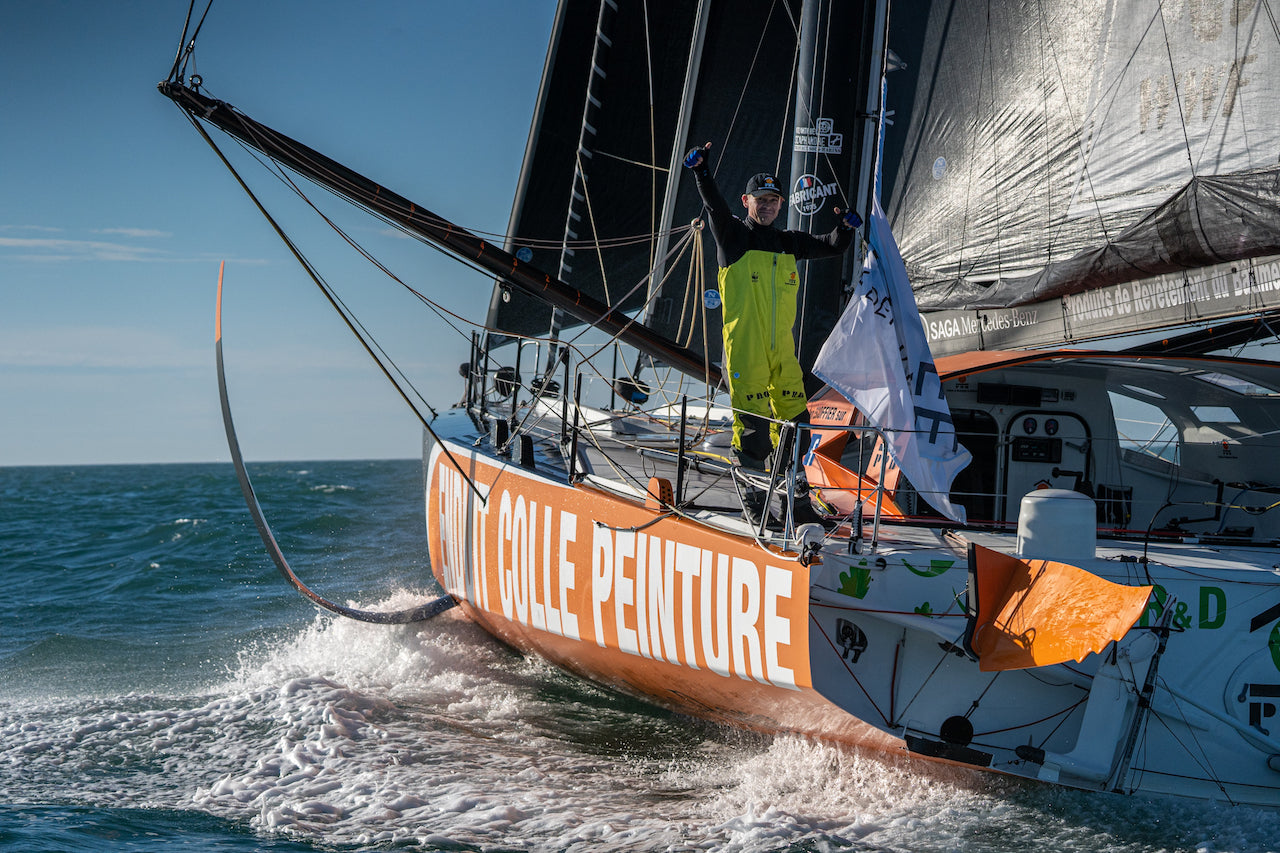
VENDÉE GLOBE 2020 VIDEO SERIES: EPISODE 7
AS THE FLEET SET OFF
Vendée Globe 2020 – Episode 7
“We know when we are departing, but we do not know when we will return,” recalls Loïck Peyron in this seventh and last episode of our Vendée Globe video series. Although an absent crowd marked the 9th edition’s departure, emotions ran high on Sunday, November 8th.
Each skipper acknowledges the incredible magnitude of this race: their story, their challenge, their competition, but also the team, sponsor, and the public with whom they will share their adventure that is full of moments of joy or sadness. Because completing the Vendée Globe remains an incredible achievement, the arrival home to the Sables d’Olonne after three months at sea is a moment as emotional as the start.
READ MORE
READ MORE
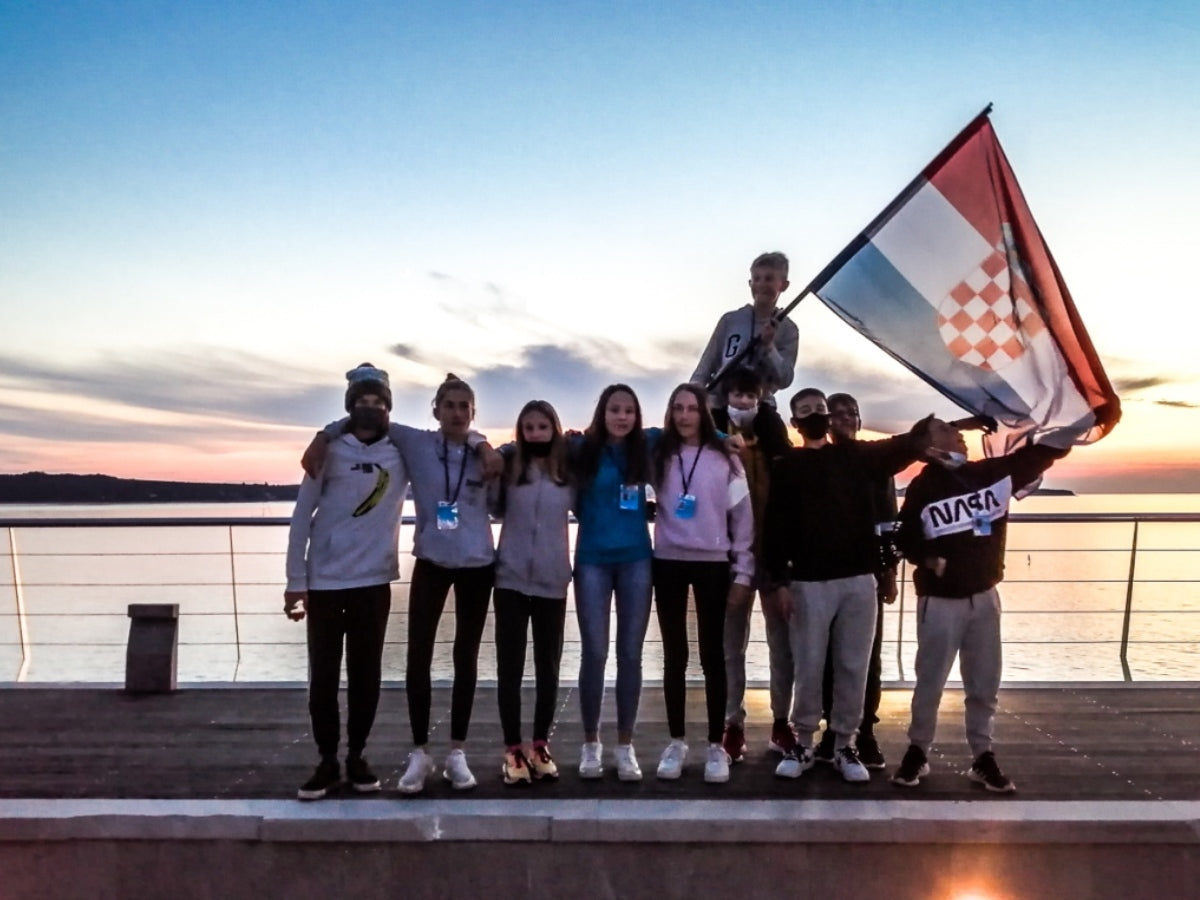
OPTI EP U PIRANU
Sustav jedrenja bio je klasičan. Prvo su se jedrile kvalifikacije, nakon kojih su se trebala jedriti finalna jedrenja, a cijela flota bila je podijeljena u pet skupina.
READ MORE
READ MORE

CRACKER GAINS PERFORMANCE BOOST WITH 3Di RAW
CRACKER GAINS PERFORMANCE BOOST WITH 3Di RAW 330
Local Sailing Team Embraces the Power of their New Wardrobe
📸 Robert Bateman Photography
Denis Byrne’s Trapper T250, Cracker, was built in the early 1980s in England. Not only is she nearly 40 years old, but she’s also the smallest boat on the starting line in the local racing fleet at the Royal Cork Yacht Club in Ireland. Now she’s winning races, thanks to her new sail inventory.
It all started in 2018 when Denis decided to upgrade his sails to be more competitive. “Denis was looking for high-performance club racing sails, said North Sail expert Nigel Young. “He bought the first part of his inventory in January of 2018 and has had nothing but great results.” In 2019, Cracker won the Royal Cork Yacht Club’s club boat of the year award.
“It is unusual for a small boat like Cracker to win such an award in the biggest yacht club in the country,” said a proud Denis. In 2020 with the same inventory, he’s continued his winning streak. Cracker took her class first and the overall win in the annual Cove to Blackrock Race, winning the coveted Moonduster trophy.
Winning the Moonduster trophy against much bigger competition was a real thrill for Denis. “It’s a lovely trophy dating back 20-some years. The Moonduster is arguably the most famous boat built in Cork Harbor and won the Round Ireland race a number of times, setting the official record at the time. It’s special to win a trophy like this.”
Denis is the third owner of Cracker and hasn’t made any changes to the hull—though the boat did come with a brand new mast. “She’s still the same color; all I’ve done is add new sails. The entire boat concept is modern for its age. It is quite different from many of the other boats built in the 80s. It’s well suited for IRC racing.”
Cracker’s Winning Inventory
Cracker is equipped with a 3Di RAW 330 mainsail, 145% #1 genoa, a #3 blade headsail with battens, and a Contender SK75 symmetrical spinnaker.
Denis is pleased with how much of an impact his new 3Di RAW 145% genoa makes. “When the boat gets going, especially in relatively flat water and breeze– wow, is she powerful! Even when the breeze picks up into the 15-17 knot range, we can still carry it with confidence, and the boat goes like a train. It is effortless to trim. The larger boats would step down to a #2, and we could easily carry our #1 longer and still be competitive.”
Cracker’s new mainsail has excellent shape. Denis adds, “We took Nigel’s recommendation to move to a slightly bigger roach and larger sail. The shape is just beautiful. It brought up the handicap, but that paid off in terms of overall boat speed without question.”
“Comparing 3Di to standard sail materials, 3Di is easier to trim. Before, I found it tricky to visualize the sail’s shape at the top-end when trying to distinguish the draft and how that relates best with sail controls, like the cunningham. Now it is much easier to see, and the sail looks cleaner. It’s easier to tell what you need more of, whether it’s vang, cunningham, outhaul, etc. What I like about 3Di is that it’s one solid piece with no joints. The sail is smooth and clean, and as a result, easier to trim.”
Denis says the sails make sailing easier, and he also loves the fact that they are easy to maintain. “They aren’t heavy. They can take a lot of punishment. They are durable. I was pleasantly surprised when the mainsail arrived; it was very light.”
“Nigel designed us a symmetrical spinnaker that was slightly larger than the one that came with the boat,” Denis explains. “It’s a general all-purpose and really pulls us forward and reaches effectively. I didn’t want to carry multiple kites because the boat is so small, and we don’t have a large crew for sail changes. The AP symmetrical Nigel provided us is all we’ve needed, all season long.”
Cracker’s new symmetrical spinnaker in North Design Suite
The Value of North Sails Expertise
“Nigel has sailed with us quite a bit. He showed us how to trim and how to adjust our settings according to condition changes. It wasn’t just about selling me sails and me going on my way. He has worked with us during regattas and in between, helping us fine-tune and better our maneuvers. Techniques for sailing with less crew and even better hoisting methods, dropping and packing the spinnaker. It’s the entire package of support we’ve received, not just sails.”
With no previous sailmaker experience, Denis was impressed with how things came to be. “Nigel was straightforward. He sold me a product that was right for my boat. He didn’t try to oversell me on a different product; he said, ‘this sail would be the right fit for your size boat and the loads on the rig.’ I am thrilled with my decision, and it’s nice to know Nigel had my best interest at heart. I am looking forward to a new race season in 2021.”
The Crew
Cracker typically sails with four crew, though in under 12 knots, Denis says three is fine. “Five would be a lot. Any more than five would be a crowd! We carry just what we need, and we get around the corners just fine.” Cracker’s crew is composed of a variety of experience levels. “What’s great is that everyone can understand what Nigel is saying,” says Denis. “And he was happy to spend the time, not just with the more experienced crew members, but with everyone, providing tips and tricks to make things flow. Many people you meet in the sailing world have jargon or terminology that can go right over your head if you are not used to it. Nigel speaks a language we can all understand. Nothing flowery; how he describes things makes it easy for everyone to pick up on.”
From us at North Sails, we wish Denis and the Cracker team the best of luck!
READ MORE
READ MORE
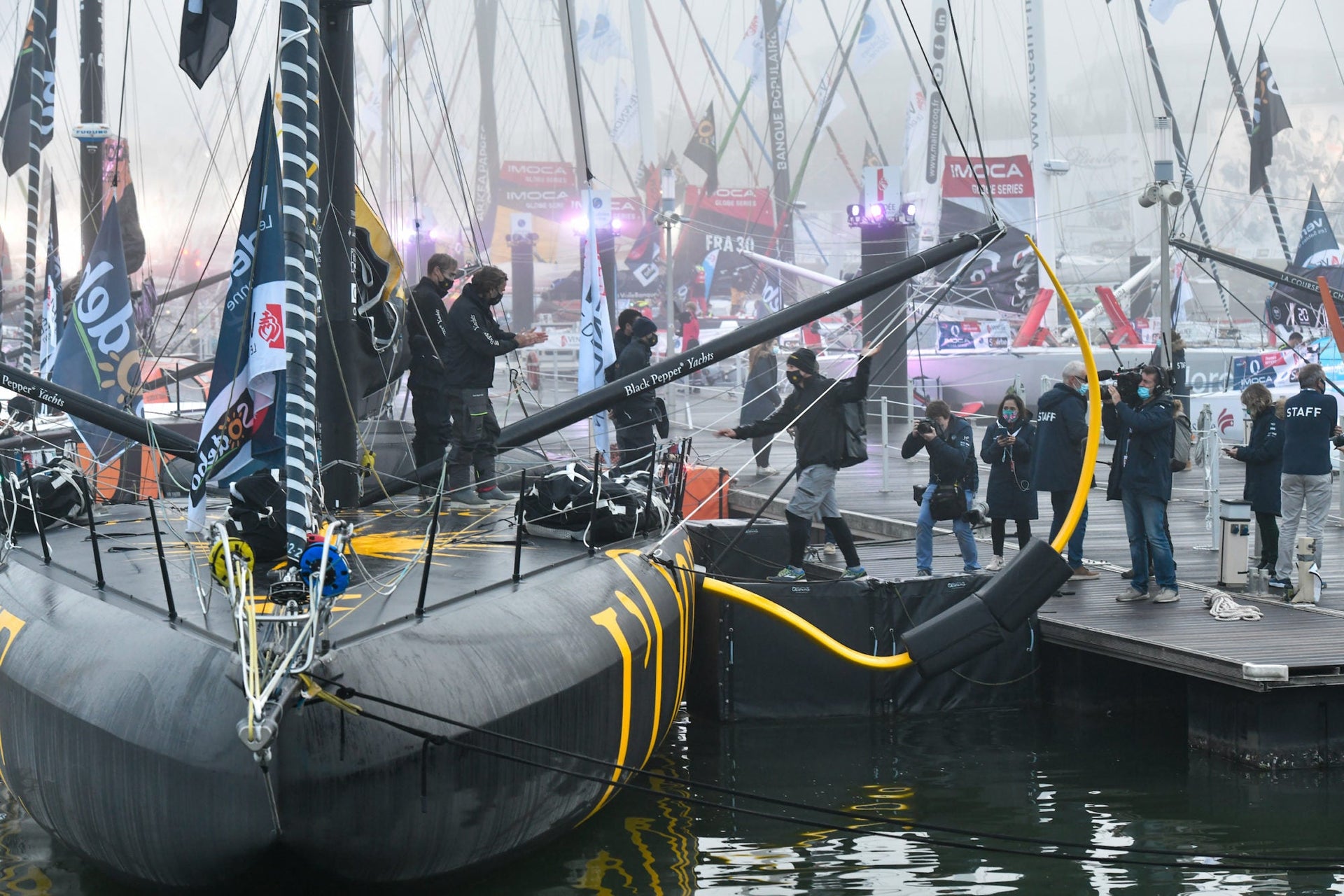
THE FUN STARTS NOW
THE FUN STARTS NOW
Today We Switch from Race Prep to Tracking the Vendée Globe 2020. Who’s With Us? 🙋🏼♀️
📸 Olivier Blanchet/Alea
Thirty-three skippers have set off on their around-the-world, non-stop, solo, and without assistance adventure. Departing from Les Sables-d’Olonne, the Vendée Globe 2020 fleet will travel 40,075 km over three months. The competition will be intense. The favorites will be vying to be the first to finish and attempting to beat a record of 74 days, 3 hours, 35 minutes, 46 seconds set by Banque Populaire VIII’s Armel Le Cléac’h, winner of the 2016 Vendée Globe.
While winning the Vendée is the ultimate honor, the race is a relentless experience, and completing the course is considered an extraordinary accomplishment. North Sails powers 22 IMOCAs competing in the 9th edition of the race. The Vendée requires skippers to push themselves and their gear to the most extreme limits. We’re proud these 22 programs have chosen North 3Di to deliver the reliability this race demands.
If you’re anything like the North Sails team, you’ll be joining us following the race (and obsessively checking the online race tracker!). Below is a cheat sheet of links we’ll be bookmarking.
VENDÉE GLOBE RACE TRACKER
OFFICIAL RACE CHANNELS:
Leaderboard / Facebook / Twitter / Instagram / YouTube
PRESS PLAY
North Sails teamed up with Loïck Peyron and polaRYSE to create a seven-part video series to celebrate the Vendée Globe 2020. Peyron joins North Sails to lend his voice as our narrator and offers his perspective on this legendary race by telling the story of the exceptional skippers who dare take on the challenge, the passion that drives them, and the quest for open-ocean adventure. Beyond, the modern Vendée features the emergence of women and international sailors, the ever-evolving technology of the IMOCA, not to mention the growing enthusiasm amongst spectators and all those who are passionate about this unrivaled competition.
The first six episodes are on YouTube now. Episode 7 will feature footage for the start and drops later this week.
READ MORE
READ MORE

VENDÉE GLOBE 2020 VIDEO SERIES: EPISODE 6
THE IMOCA ENGINE ABOVE DECK
Vendée Globe 2020 – Episode 6
Among the 33 skippers who will be advancing tomorrow, Sunday, November 8th, from Sables-d’Olonne at 13:02 CET, 22 are equipped with North Sails 3Di, (17 have a full inventory and 5 have a partial inventory). Onboard their IMOCA, the skippers will cover 40,075 km, which will take up to three months to reach the finish line.
Episode 6 of our Vendée Globe video series drops just in time for the start of this around-the-world adventure. In this episode, we have a masterclass on the sails that power the super-charged IMOCAs. Charal skipper Jérémie Beyou, and PRB skipper Kevin Escoffier join North sail designers Quentin Ponroy and Yann Andrillon on the evolution of sails and what it takes to outfit the latest generation foiler.
READ MORE
READ MORE
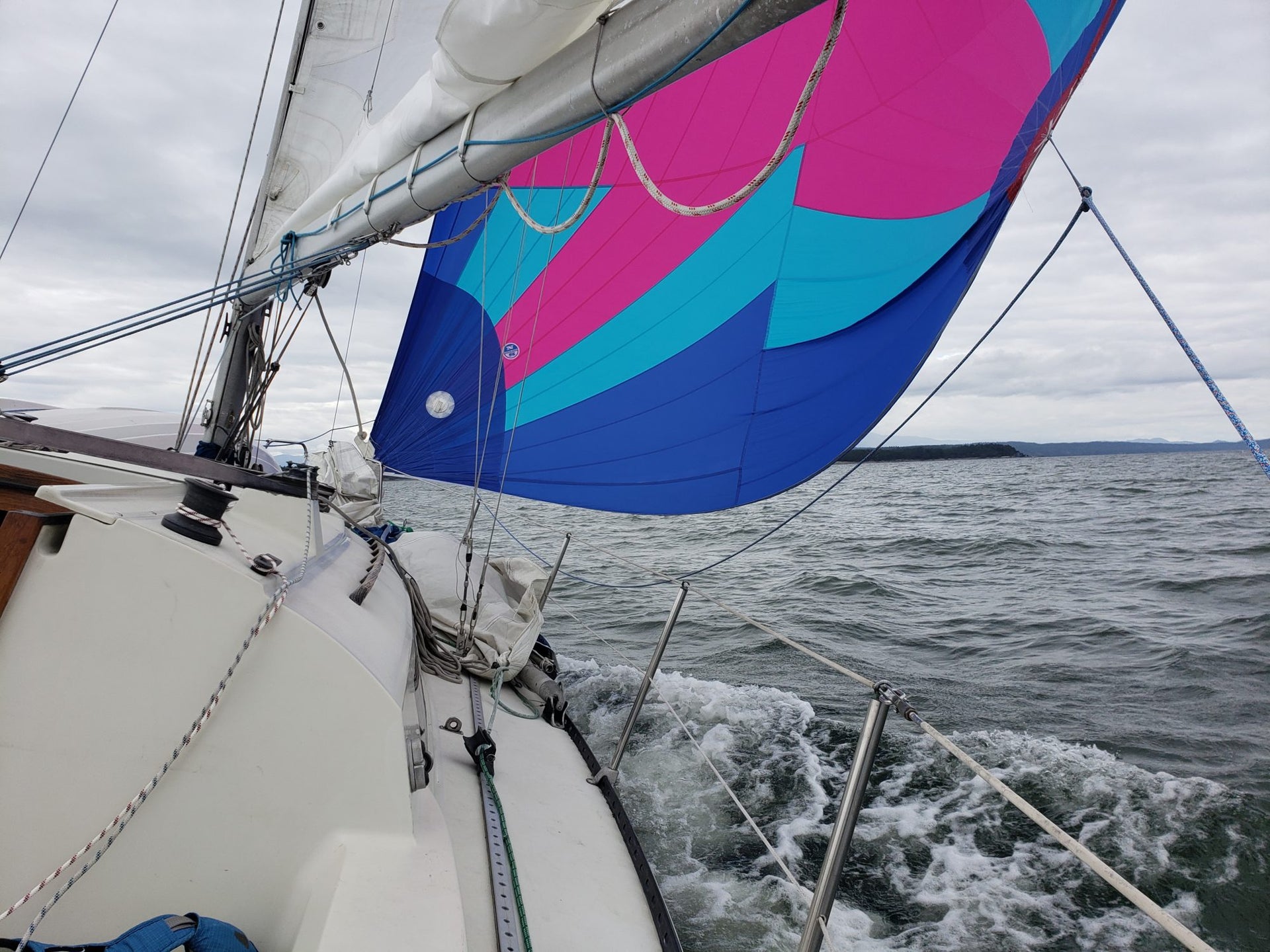
CRUISING ADVENTURES: WALLACE ISLAND
CRUISING ADVENTURES: WALLACE ISLAND
Explore Your Own Backyard
Avid sailor and office manager for the Vancouver loft of North Sails, Sarah Unwin shares one of her favourite cruising spots in British Columbia, Wallace Island.
My husband and I race and cruise on a Spencer 34 named Coho. As we are all doing more exploring in our own backyards this year my Husband, James, and I have been exploring new anchorages. We added a day to the Canada Day long weekend and decided to go to Wallace Island which is located in Trincomali Channel and was originally a resort, some of which is still standing today. We sailed from Vancouver to Silva Bay on Gabriola for the night then caught the tide through Gabriola Pass and caught a great beam reach run down Trincomali Channel.
Wallace Island offers excellent walking and camping that is accessible from the Saltspring Island Government dock by kayak, water taxi or private boat. We chose anchored in the smaller of the accessible coves that are deep enough for sailboats, Conover Cove, where the government dock is located. We spent the day exploring most of the island trails, all of the coves and swimming. Conover Cove is also home to an old cabin where visitors can leave placards with their boat names and where they are from, so bring along some driftwood and art supplies.
When we came back from exploring there was beautiful acoustic guitar music playing in the cove, we thought someone had a great sound system, as it turns out we were treated to an amazing on water concert after dinner. Conover Cove is shallow and you need to navigate reefs at the entrance so what your tides and charts. We truly enjoyed our time on Wallace Island and will be back, I highly recommend packing walking shoes and visiting some of the coves for an afternoon picnic and swim.
READ MORE
READ MORE
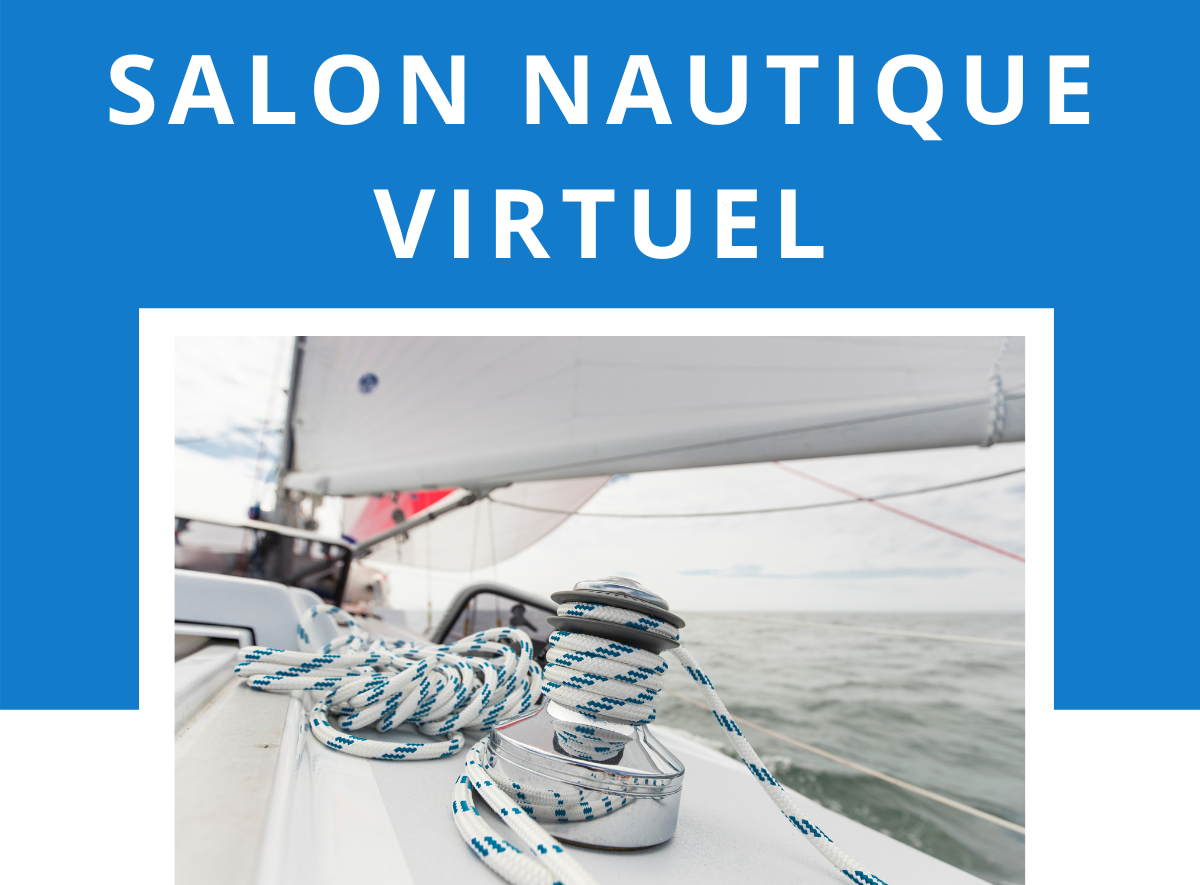
SALON NAUTIQUE VIRTUEL : 12 - 19 NOVEMBRE 2020
SALON NAUTIQUE VIRTUEL : 12 - 19 NOVEMBRE 2020
Votre équipe North Sails est heureuse de vous présenter sa nouvelle plateforme en ligne permettant de se connecter en direct par vidéoconférence avec l’un de nos conseillers : "en direct avec un expert" et se réjouit de vous rencontrer virtuellement, en toute sécurité, pour répondre à vos questions, programmer un essai, ou vous faire découvrir nos nouveautés.
Rendez-vous virtuels
Avec l'annulation du Salon Nautique du Léman, nous ne pourrons pas vous rencontrer en personne, mais nous nous réjouissons d'échanger en ligne sur nos dernières gammes de produits, notre technologie et notre service. Et, bonne nouvelle, les promotions flash "spéciales salon" sont d'actualité du 12 au 19 novembre 2020 !
Offres spéciales salon
Du jeudi 12 au jeudi 19 novembre 2020, votre équipe North Sails vous fait profiter de remises exceptionnelles. Prenez un rendez-vous virtuel !
Comment prendre rendez-vous ?
Comment prendre rendez-vous avec un expert via Zoom ?
- Cliquez sur le lien ci-dessous
- Choisissez la plage horaire qui vous convient le mieux
- Réservez votre rendez-vous avec l'un de nos experts
EN DIRECT AVEC UN EXPERT
Voilerie fermée au public
Sur décision du Conseil d'État de Genève, la voilerie est physiquement fermée au public jusqu'au 29 novembre, mais nous restons opérationnels pour vous servir au mieux. Nos collaborateurs sont à votre disposition par téléphone, WhatApp, email ou vidéoconférence, afin d'organiser votre hivernage ou de discuter de nos derniers produits.
Nous espérons vous revoir en personne au plus vite, sur l'eau ou à la voilerie. D'ici là, prenez soin de vous et de vos proches !
Votre équipe North Sails Suisse
READ MORE
READ MORE
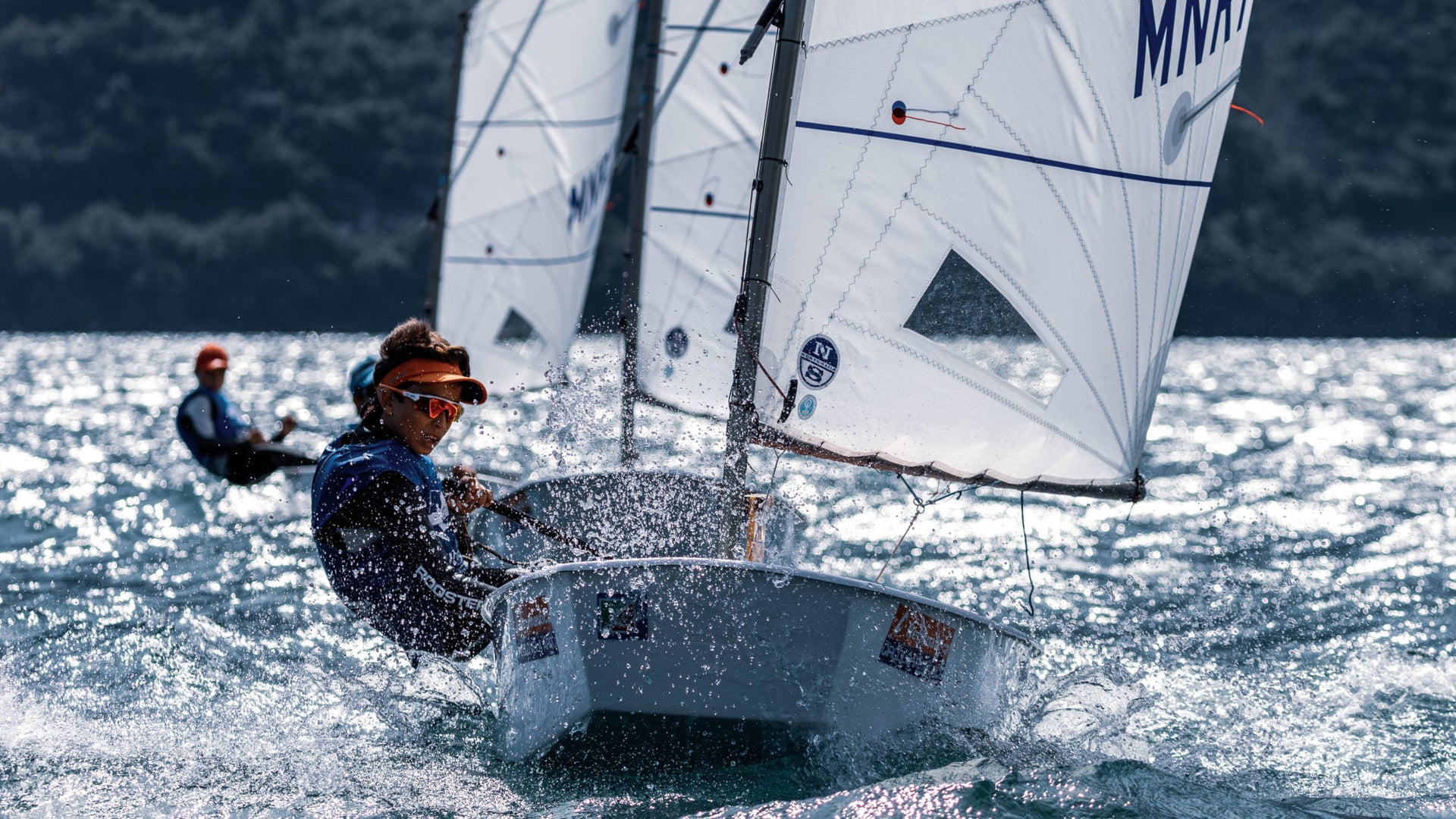
OPTIMIST QUICK TIP - SPRIT TENSION
NORTH SAILS MNR OPTIMIST SAILS UPWIND QUICK TIP
Sprit Tension is The Key
In lighter wind the clew-masthead crease is very well defined. This is max crease ease.
When you think about it, your Optimist sail has a really big job to do; it has to have a great shape in really light wind, when most sailors wish they wouldn’t run a race, and it has to also hold its shape all way to 20 knots +, when some other sailors wish they wouldn’t run a race. The North MNR sail can handle it and is very dynamic. It is designed to excel in all wind ranges, but you have to help it by following the cues and tuning guide as you sail in different conditions, and trim the sail properly.
Here’s one secret: if you want to unlock your North MNR mainsail’s full potential upwind, focus hard on sprit tension.
One of the big drawbacks of tight mainsheet tension upwind, especially with traditional Optimist sail designs, is that the back end of the sail, the leech, has a tendency to close down, sometimes in a vertical line right along the forward end of the battens. I liken this to the flaps on the wing of a plane being deployed to slow the plane and stall flow. Deploy flaps…. flow stalls; pull in your mainsheet too much…. leech closes off and you lose lift. This is s-l-o-w. Most sails have one sweet spot, but after that you cannot pull it in any more, and if you do… you really slow down.
Here’s the good news: the MNR bi-radial sail is designed with all this in mind, and with the right sprit tension, the sail can be very fast in most all wind conditions.. To unlock its potential, follow the simple guidelines below:
LIGHT WINDS (0-8 knots)
Ease off the sprit halyard quite a bit. You want to clearly see wrinkles/creases coming from the clew to the top of the mast. This may look weird, but it will keep the leech open when you sheet the sail in, and will give you great pointing height.
MEDIUM WINDS (9-15 knots)
Here is where you need to experiment. Depending on your weight, rig, and the chop, the sprit can come in a bit, but if there is any real chop of waves at all, err on the side of slightly less tension, so you still want to see some wrinkles. In very flat water, you can pull it in so the wrinkles are barely there, and you will just point higher.
In moderate wind (there were higher gusts on this day), the crease is less noticeable, but still there.
HEAVY WINDS (16-20 knots)
If you can keep the boat flat with the mainsheet in so that the boom is on, or slightly inside, the transom corner, feel free to tension the sprit so that the wrinkles are gone (but definitely not too tight). Once you are overpowered though, ease off just a bit to open the leech and de-power.
All boats/sails/rigs/sailors are unique, so everyone should experiment and work to find what setups are fastest for you. There’s more to the story for sure, so if you are interested in learning more about your North Sails MNR sail, please don’t hesitate to contact North Sails expert Tom Sitzmann. Remember, fun is fast!
READ MORE
READ MORE
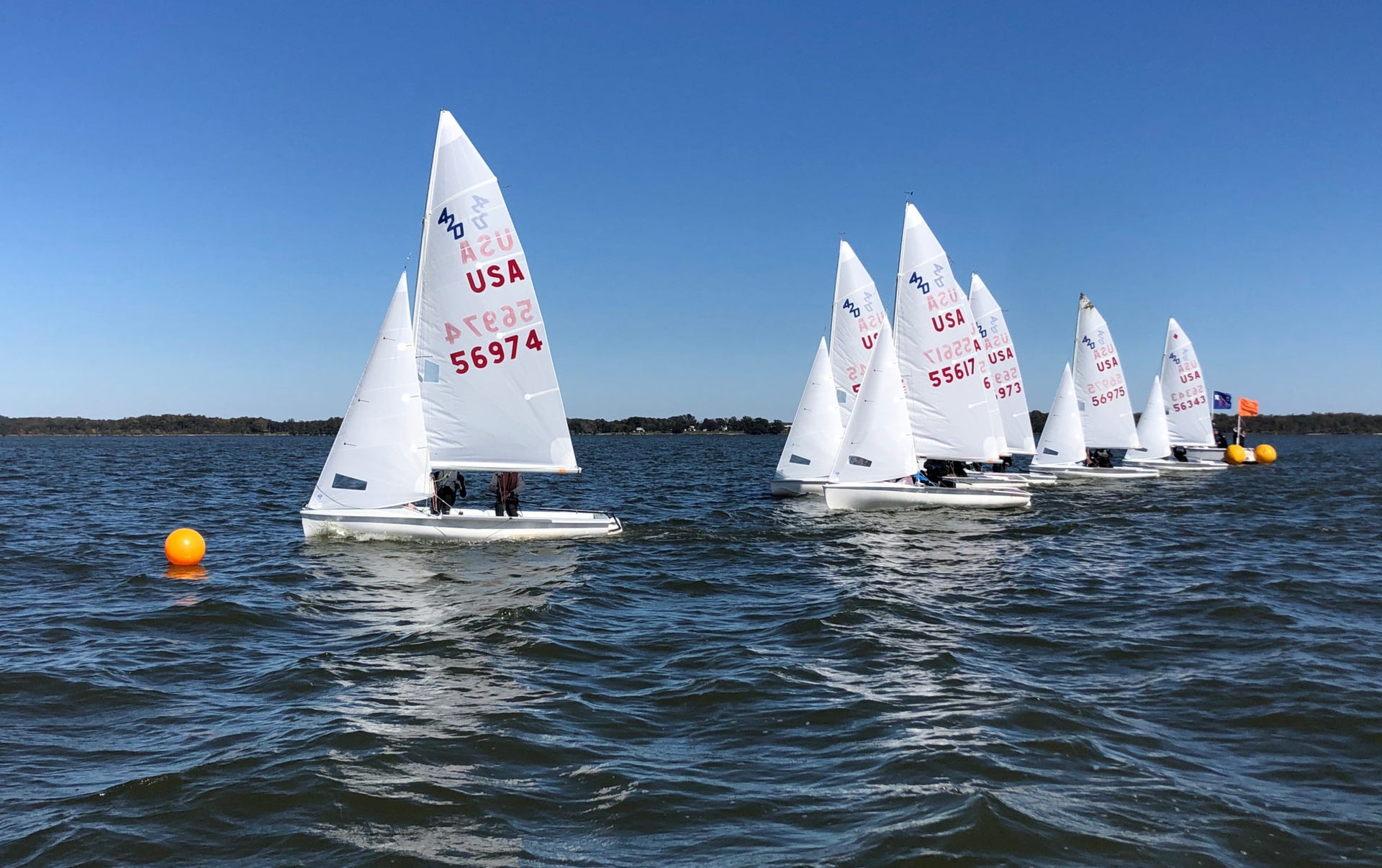
I-420 MID-ATLANTIC CHAMPIONSHIP
NORTH SAILS PODIUM SWEEP AT THE INAUGURAL I-420 MID-ATLANTICS
Congratulations Tommy Sitzmann & Luke Woodworth
The very first International-420 Mid-Atlantic Championship was held on 17-18 October at a new, community sailing venue called The Chesapeake Experience which lies E/NE of Baltimore on the Gunpowder River; a fantastic sailing spot!
Day One, Saturday 17th October – Constant Gear Shifting
The fleet had to wait a bit, but the forecasted northerly came in around 11:30, and four races were run in very light conditions as well as full trapeze sailing. The key to success was constant gear shifting. Unlike an ocean venue, where many i420 regattas are sailed, this inland location threw constant wind shifts and breeze-strength changes at the sailors. Teams that quickly shifted their sail and weight trim were faster as this responsiveness allowed them to link puffs and stay in the phase for longer.
Day Two, Sunday 18th October – Patience, Patience
The Race Committee actively sought wind, moving the racecourse from one part of the river to another to allow two more races to be completed. These races tested the patience of every team, and the young duo of Freddie Parkin and Thomas Whidden (name sound familiar?), outperformed the fleet winning both races. This moved them up to third overall in the final results. Great fun was had by all, and an i420 training fleet is now born at this venue!
Congratulations to Tommy Sitzmann and Luke Woodworth for winning the very first i420 Mid-Atlantic Championship, and Cordelia Burn and Sarah Moeder for their close second-place finish. Boats powered by North Sails dominated this event, finishing 1,2,3,4,5. Most teams used the M-9 mainsail and the J-12 jib, and there were both S-1 and S-5 spinnakers doing very well downwind.
Keen to know more? Contact North Sails expert Tom Sitzmann for a full discussion and we look forward to seeing you next year!
READ MORE
READ MORE
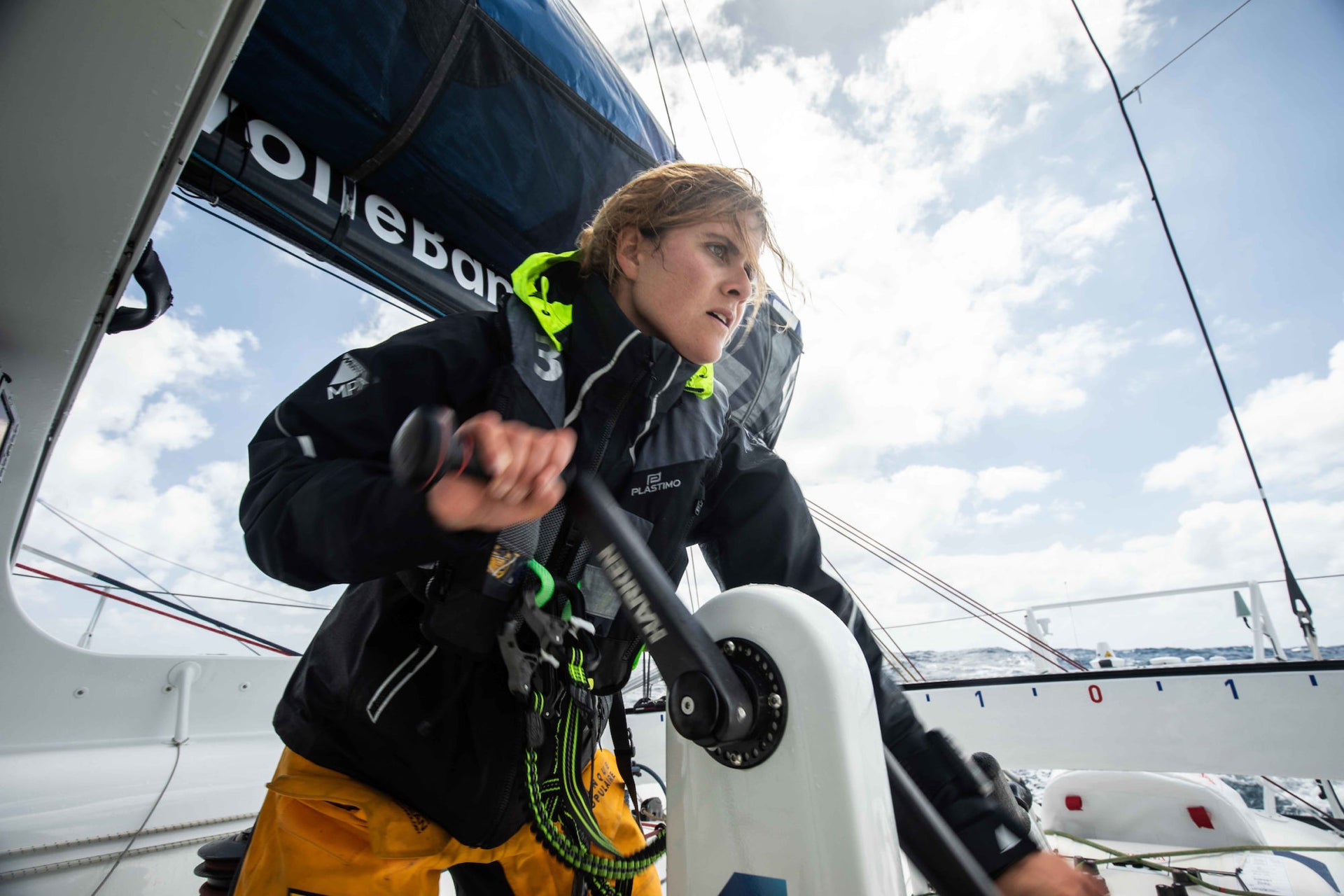
VENDÉE GLOBE 2020 VIDEO SERIES: EPISODE 5
THE WOMEN OF THE VENDÉE GLOBE
Vendée Globe 2020 – Episode 5
A record of six women are included on the 33 skipper roster for the Vendée Globe 2020. This is historic, considering only seven women have participated, and six have ever completed the race since its inception in 1989. This trend is a reflection of what we’re seeing elsewhere in sailing, as more women take on leadership positions and compete at the highest level of the sport.
The IMOCA is a big boat with big gear, and female sailors bring a unique approach to solo sailing. Our fifth episode of the Vendée Globe video series features their story. Loïck Peyron is joined by Clarisse Crémer and Isabelle Joschke to discuss how these six women will approach this great adventure around the world.
READ MORE
READ MORE
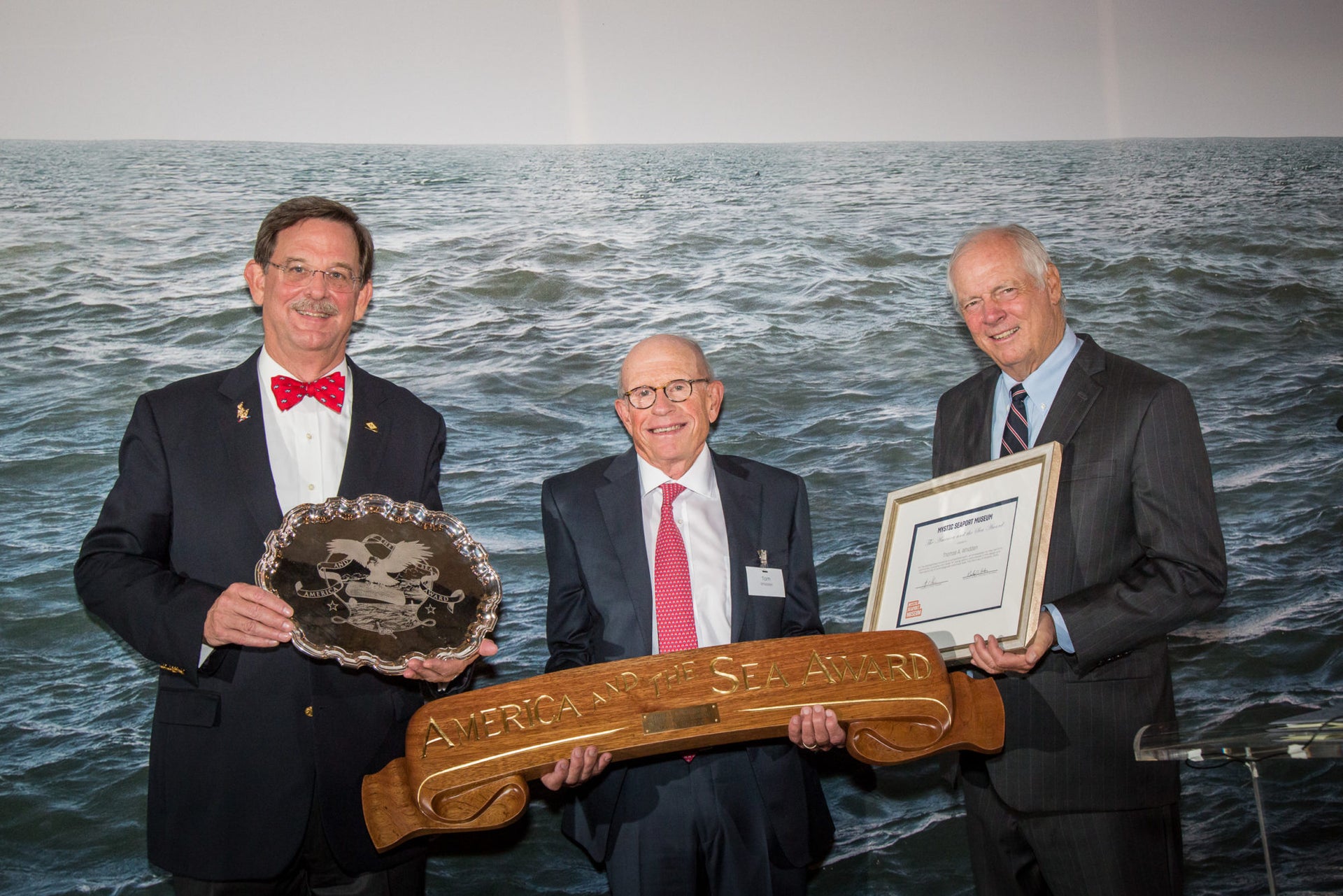
MYSTIC SEAPORT MUSEUM HONORS TOM WHIDDEN
TOM WHIDDEN RECEIVES AMERICA AND THE SEA AWARD
An Industry Leader, Tom has logged Extraordinary Achievements in Maritime Exploration, Competition, Scholarship, and Design which Best Exemplify the American character.
Mystic Seaport Museum honored Thomas A. Whidden, President and CEO of North Technology Group, 2004 inductee into America’s Cup Hall of Fame and 2017 inductee into the National Sailing Hall of Fame, with the 2020 America and the Sea Award. The prestigious award recognizes those individuals and organizations whose extraordinary achievements in maritime exploration, competition, scholarship, and design best exemplify the American character. The award was presented at a virtual gala fundraiser on Friday, October 23, 2020. Fellow Hall of Fame Sailor and 8th America and the Sea Award Recipient Gary Jobson presented the award to Whidden at a small socially-distanced gathering of Whidden’s family and friends in the River Room of Latitude 41° Restaurant in Mystic, Connecticut, from where the event was live-streamed. Jobson shared a brief history of the America’s Cup, followed by the award presentation, commenting that Whidden has contributed two essential things to the sport of sailing:” As an industry leader, he has made sailing more efficient, with better sails that last longer and go faster…and he’s been outstanding on the racecourse.”
Tom Whidden, who grew up in Connecticut and learned to sail on Long Island Sound, has had an extraordinary career both on and off the water as an accomplished tactician for Dennis Conner in eight America’s Cup campaigns, winning three, and as a revolutionary sailmaker, bringing sailmaking from the manufacturing of paneled sails in a vast network of sail lofts to the current centrally managed, technologically driven, manufacturing system. Thanks to Whidden’s remarkable vision, North Sails has become a leader in the industry, with every America’s Cup winner and every Volvo Ocean Race winner choosing to race with North Sails since 1992 and 1993, respectively. Mystic Seaport Museum President Steve White said, “Tom is a perfect fit for this award. Not only does he have a distinguished record as a competitive sailor, but he has also served as an important ambassador for the sport and the maritime community. For young sailors across the country and beyond, he has been a positive role model and mentor.”
In his wonderfully modest, graceful demeanor, Whidden remarked on receiving the award, “What a wonderful honor it is to be this year’s Mystic Seaport Museum America and the Sea Award recipient. I join an amazing group of previous recipients who have made incredible contributions in so many different aspects of maritime, sailing, and ocean life. I have spent my life racing sailboats and making products that make those boats perform their best. For me to be recognized alongside other abundantly accomplished previous honorees, for doing what I most love, by the most prominent maritime Museum in the United States, is a dream come true.”
The virtual event was joined by friends and supporters from Nantucket to New York to Florida to Los Angeles, and Whidden was congratulated from around the world with remarks from Jimmy Buffett; NYYC’s American Magic Skipper Terry Hutchinson in New Zealand; Sir Lindsay Owens-Jones, L’Oréal Honorary Chairman and owner of Magic Carpet 3; Peter Dubens, Managing Partner of Oakley Capital and Chairman of North Sails Technology; Christopher J. Culver, Vice Commodore, NYYC; and Jes Staley, CEO, Barclays. The virtual event generated $520,284 through sponsorships, single tickets, live and silent auctions, and a virtual paddle raise appeal. The Museum would like to express a sincere thank you to the gala committee, Board of Trustees, and the myriad supporters who gave in honor of Tom Whidden and to further the mission of Mystic Seaport Museum.
Past recipients of the America and the Sea Award include American businesswoman and philanthropist Wendy Schmidt; groundbreaking America’s Cup sailor Dawn Riley, philanthropist, and environmentalist David Rockefeller, Jr.; boat designers Rod and Bob Johnstone and their company J/Boats; author and historian Nathaniel Philbrick; maritime industrialist Charles A. Robertson; Hall of Fame sailor and author Gary Jobson; WoodenBoat Publications founder Jon Wilson; former Secretary of the Navy John Lehman; oceanographer and explorer Sylvia Earle; America’s Cup sailor William Koch; President and CEO of Crowley Maritime Corporation, Thomas Crowley; historian David McCullough; and legendary yacht designer Olin J. Stephens, II.
READ MORE
READ MORE
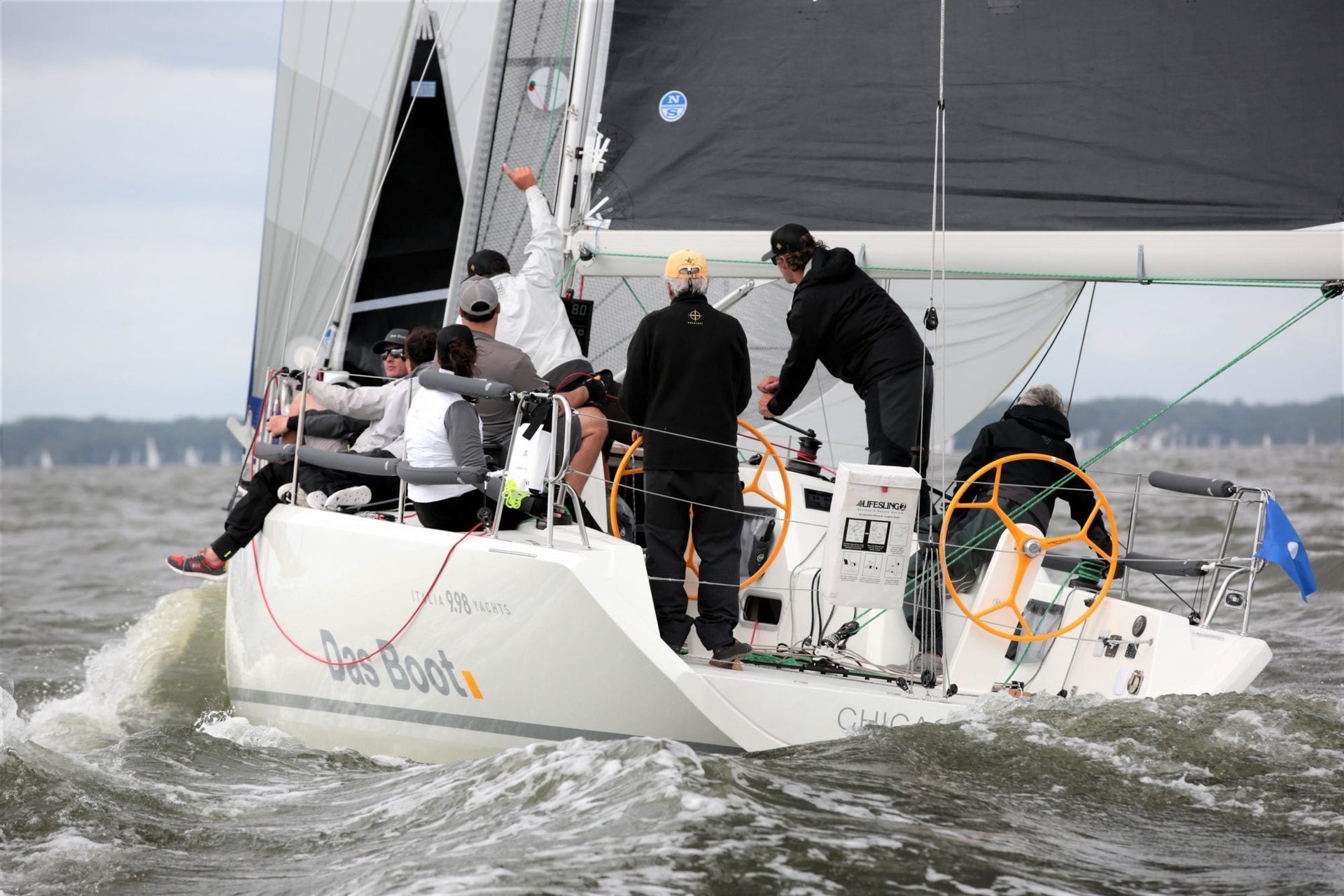
NORTH SAILS GLOBAL NETWORK POWERS FAMILY TEAM
NORTH SAILS GLOBAL NETWORK POWERS FAMILY TEAM
Class Experts + Designers From All over the World Aid Success of Annapolis Local Racing Team
North Sails expert Allan Terhune has loads of experience tuning up one design keelboats, but he didn’t have any idea what would make an Italia 9.98 go fast when his in-laws first bought one of the 34-foot racer-cruisers. So he reached out to the incredible global network of North knowledge and asked his colleagues across the pond for help. The result was three wins at the first four regattas Das Boot sailed, in the very competitive Annapolis ORC fleet.
“North sail designer Henrik Søderlund in Denmark had already designed a bunch of sails for these boats,” Terhune explains, adding that the five year old design has won the ORC Worlds a few times. “Rich Bowen and I were able to get a lot of good stuff right away, like the sails chart and polar numbers and tuning. If we’d started from scratch, it would’ve been six months of development.”
Getting a less well-known boat up to speed was a fresh challenge. “There’s only two or three Italia 9.98s in the US right now, but we got sails that fit right from the get-go—because we have this global network, and the Europeans have done a lot more learning than we have. ”
Das Boot’s very first regatta was the Leukemia Cup, a pursuit race—which they won with a family-based crew of seven. They also won an around-the-buoys regatta, and even after breaking a halyard in regatta #3, they came back to finish fifth overall. In early October, the boat won Annapolis Yacht Club’s 24-Hour Doublehanded Race, which Terhune sailed with his wife Cate.
The boat’s versatile inventory starts with a 3Di ENDURANCE 760 mainsail that handles both racing and cruising. Racing headsails include a medium-light and medium-heavy jib (both 3Di RAW 780), a paneled storm jib, and a Helix Code Zero—which Terhune says is the most important sail of all. “They really nailed the sizing. Other Code Zeros are just too big, but we have sailed tighter angles with this one, which is really nice.”
Downwind, there’s a choice of three spinnakers—symmetrical, A1.5, and A3—and Terhune and Cate used all of them to win the light-air 24 Hour Doublehanded. “We did so many sail changes, it was ridiculous. And a lot of fun too.”
Another place Terhune says the North Sails global network really helped was suggestions for modifying the deck layout—an important piece of winning (and enjoying) shorthanded races. “Obviously the guys in Europe combined their experience with the US design in making sure everything was right; the right sails, the right tuning, and all the stuff we needed to win. We couldn’t have done it without all the advice we got from class experts within the North network.”
READ MORE
READ MORE
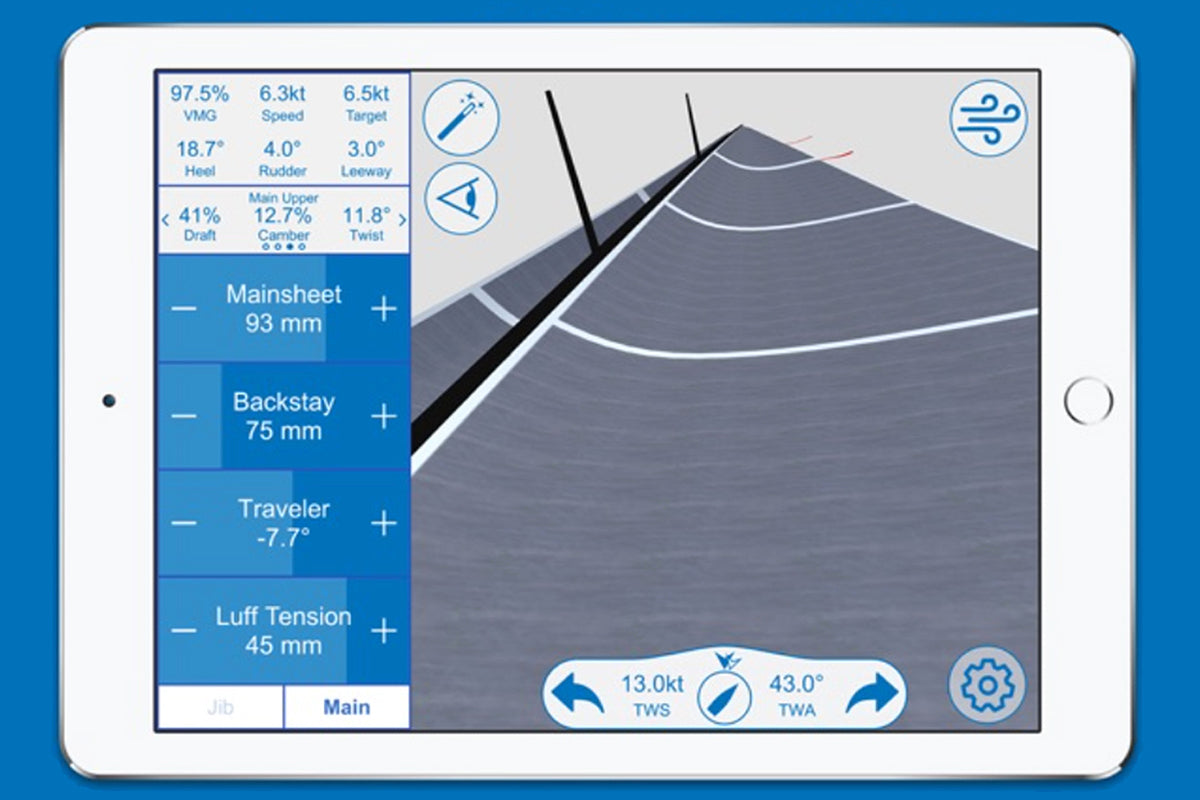
Consejo North Sails
CONSEJO NORTH SAILS
¿Sabías para qué son las líneas horizontales que van desde el grátil a la baluma en cualquier vela North Sails?
Se llaman líneas o bandas de trimado, están dispuestas al 25, 50 y 75% del grátil, y su función principal es la de facilitar la visión de la forma de la vela en esas tres alturas. Los expertos las utilizan como referencia para escanear la forma de la vela y obtener datos analíticos que permitan sacar conclusiones sobre el trimado y las prestaciones del barco. Puedes descargarte la aplicación Sail Trim Simulator (disponible para móvil, PC y Mac) y optimizar tu navegación analizando la información que te facilitan las bandas de trimado.
READ MORE
READ MORE

ÉXITO EN LA ROLEX MIDDLE SEA RACE
ÉXITO EN LA ROLEX MIDDLE SEA RACE
La 41ª edición de la Rolex Middle Sea Race reunió a 40 barcos de 15 nacionalidades
© Rolex / Kurt Arrigo
La 41ª edición de la Rolex Middle Sea Race reunió a 40 barcos de 15 nacionalidades para enfrentarse al mítico circuito de 606 millas náuticas que desde Malta circunnavega Sicilia en sentido contra horario tomando como baliza de paso el volcán activo de Estrómboli. Ni la situación mundial provocada por la pandemia ni las condiciones de viento en el recorrido permitieron la consecución de ningún récord, pero la regata dejó hitos como el triunfo en tiempo real más ajustado de la historia, la del VO70 I Love Poland (el primer barco polaco que gana una regata oceánica) sobre su compatriota E1 por sólo tres minutos; o la segunda victoria absoluta consecutiva para el First 45 maltés Elusive 2 de la familia Podesta, una defensa del título que no se veía desde 1980. El Multi 70 Maserati se proclamó ganador en tiempo real en categoría multicascos. Tanto Elusive 2, como I Love Poland y Maserati equiparon velas North Sails. Desde North Sails España les felicitamos por sus resultados.
READ MORE
READ MORE
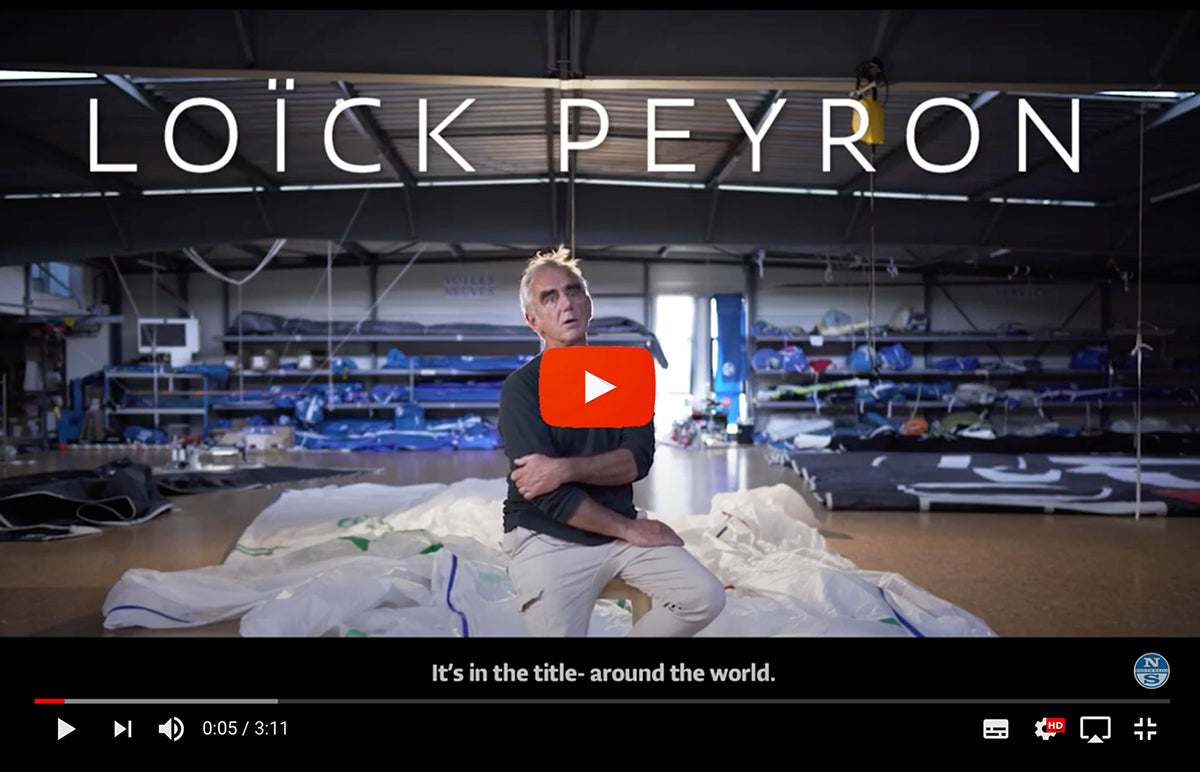
VÍDEOS NORTH SAILS SOBRE LA VENDÉE GLOBE
VÍDEOS NORTH SAILS SOBRE LA VENDÉE GLOBE
El próximo 8 de noviembre partirá de Les Sables-d’Olonne la novena edición de la Vendée Globe
La regata de vuelta al mundo en solitario, sin asistencia y sin escalas. 33 regatistas competirán a bordo de barcos de clase IMOCA por la gloria de la prueba oceánica más extrema del mundo. North Sails ha creado una serie de seis vídeos en los que el legendario patrón francés Loïck Peyron ofrece una completa visión de la Vendée Globe desde dentro. Los vídeos están disponibles en el canal North Sails de Youtube.
READ MORE
READ MORE
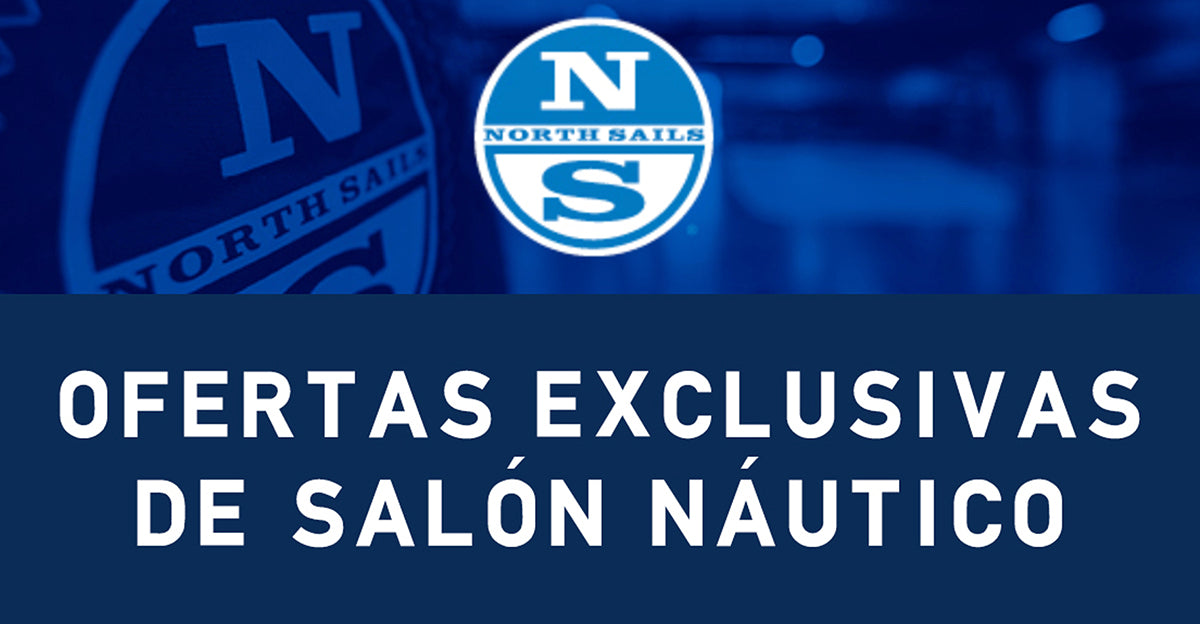
OFERTAS ESPECIALES, DIRECTAMENTE EN TU EMAIL
OFERTAS ESPECIALES, DIRECTAMENTE EN TU EMAIL
La temporada de salones náuticos llega acompañada cada año de interesantes ofertas especiales del catálogo de velas North Sails
Este año, en ausencia de tu salón náutico local te enviamos las ofertas directamente a tu email. Recuerda que nuestras ofertas especiales son válidas hasta el 8 de noviembre, fecha inicialmente programada para los salones náuticos de Valencia y Barcelona.
READ MORE
READ MORE
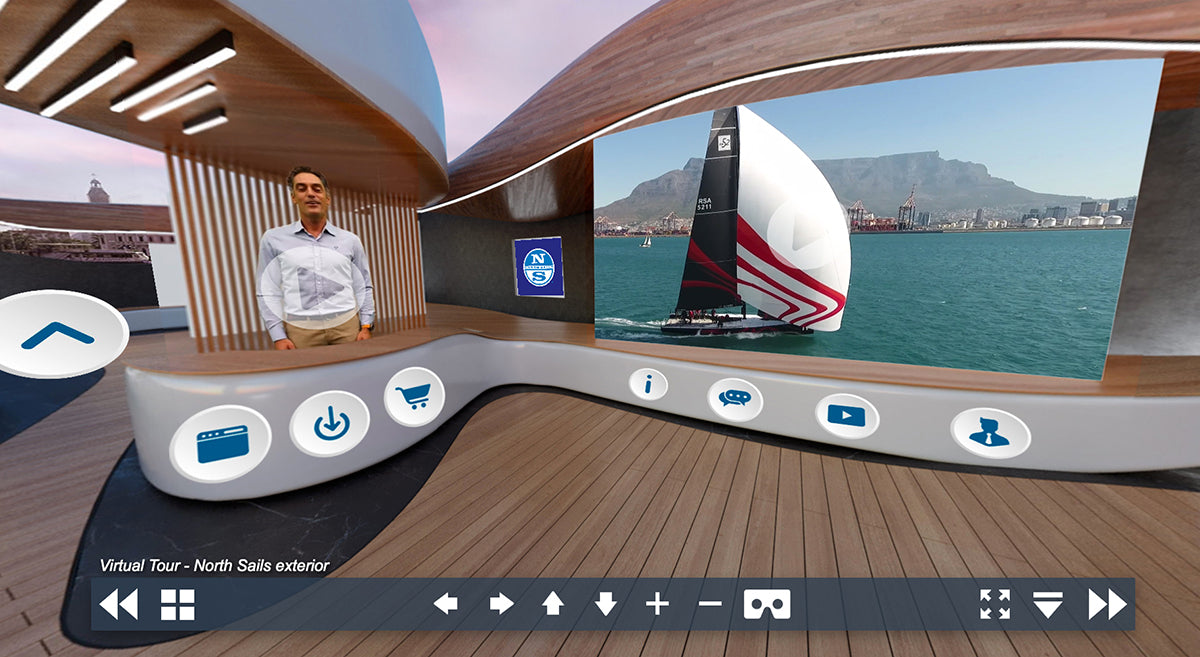
ENCUÉNTRANOS EN EL VALENCIA VIRTUAL BOAT SHOW
ENCUÉNTRANOS EN EL VALENCIA VIRTUAL BOAT SHOW
El Valencia Virtual Boat Show inaugura una nueva generación de salones náuticos
North Sails apoyará la iniciativa con su participación. Visítanos en nuestro espectacular stand y déjate guiar por nuestro equipo para descubrir las últimas novedades de la marca, revisar el catálogo de velas, disfrutar de espectaculares presentaciones de producto o incluso contactar con nuestros expertos de North Sails España vía chat o por vídeo conferencia. El stand North Sails en el Valencia Virtual Boat Show está disponible a partir del 28 de octubre aquí.
READ MORE
READ MORE
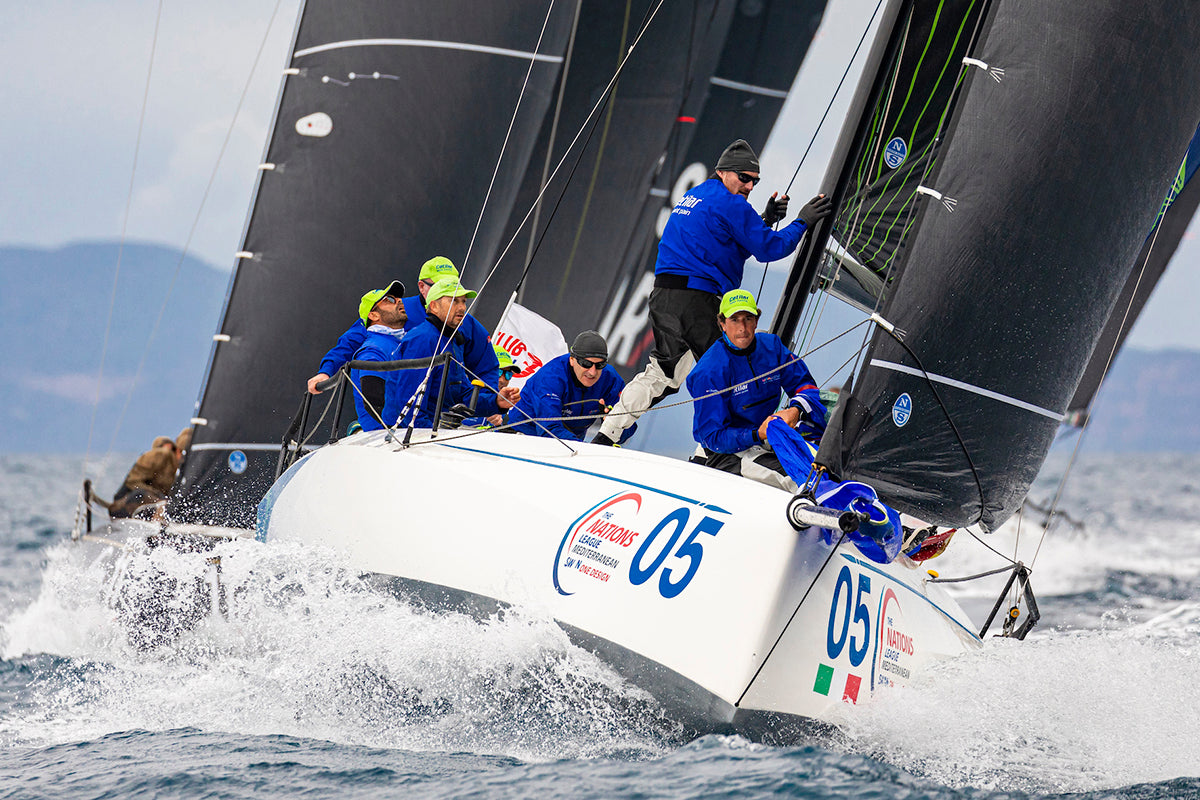
DOMINIO EN EL MUNDIAL DE SWAN
DOMINIO EN EL MUNDIAL DE SWAN
Clientes North Sails dominan el Swan One Design Worlds
© Nautor's Swan / Studio Borlenghi
Las coronas mundiales de clase ClubSwan 50, Swan 45 y ClubSwan 36 se disputaron en aguas de Scarlino entre el 13 y el 17 de octubre. Clientes North Sails ocuparon siete de las nueve plazas de podio, incluyendo las victorias absolutas en clases ClubSwan 36 y Swan 45. Clientes North Sails ocuparon siete de las nueve plazas de podio, incluyendo las victorias absolutas en clases ClubSwan 36 y Swan 45. Desde North Sails España felicitamos al nuevo campeón del mundo de ClubSwan 36, el Cetilar-Vitamina del italiano Andrea Lacorte, al subcampeón Sease y al tercer clasificado, Goddess; al campeón del mundo de Swan 45, el Motions del holandés Lennard van Oeveren, y al subcampeón K-Force; al Niramo del alemán Sonke Meier, subcampeón del mundo de ClubSwan 50, y al Skorpidi, tercer clasificado.
¡Muchas gracias por elegir velas North Sails!
READ MORE
READ MORE
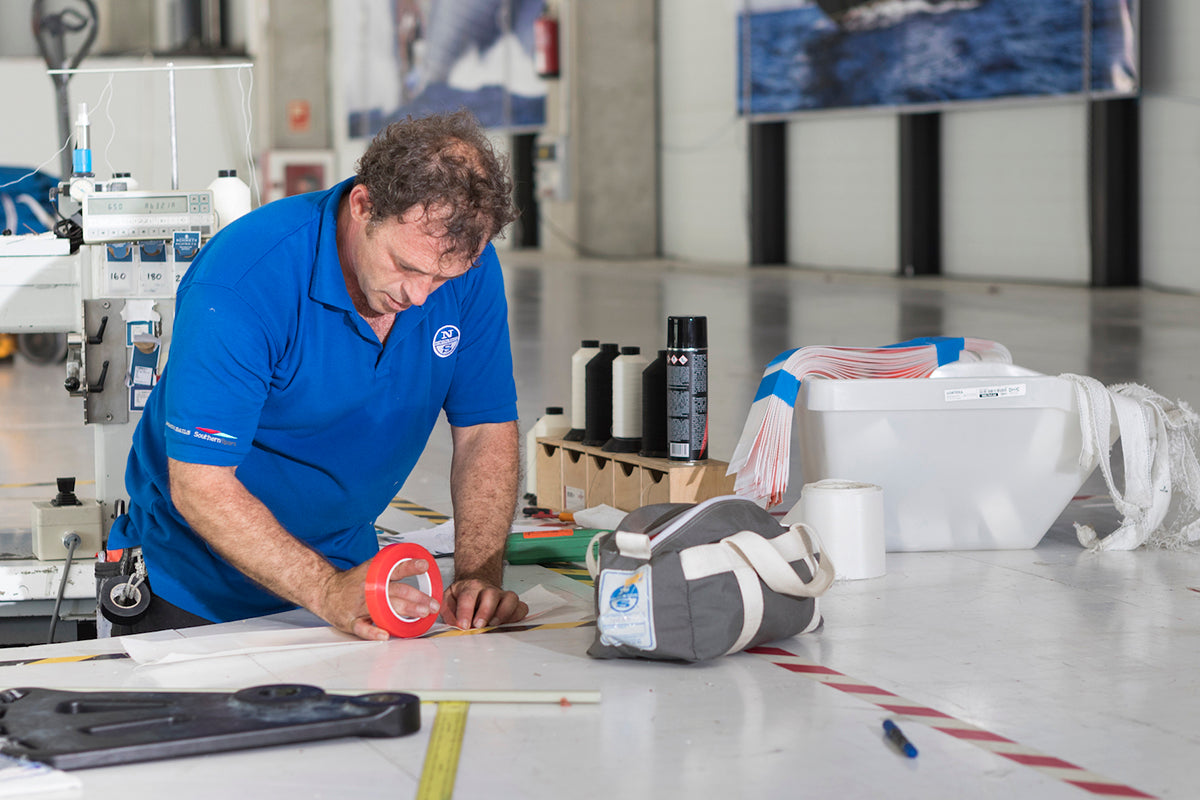
SERVICIO CERTIFICADO NORTH SAILS: CIRUGÍA Y ESTÉTICA PARA VELAS
SERVICIO CERTIFICADO NORTH SAILS
Cirugía y estética para velas
Un correcto mantenimiento de las velas es la mejor forma de prolongar su vida útil, optimizar sus prestaciones y amortizar el desembolso inicial. A través de su Servicio Certificado, North Sails convierte su red de velerías en auténticas clínicas de cirugía y estética en las que se miman velas de cualquier fabricante, con protocolos estandarizados que garantizan la máxima calidad de mantenimiento, cuidado, reparación, modificación y almacenamiento. Las velerías North Sails en Lluchmajor, Palma y Valencia son tres de las 110 instalaciones certificadas de la firma en el mundo.
North Sails lleva más de seis décadas de diseño, producción y comercialización de velas. Fabrica y vende más de 33.000 velas cada año y cubre literalmente todos los segmentos, desde pequeñas embarcaciones de vela ligera hasta colosales superyates o trimaranes de competición oceánica. Pero diseñar, fabricar y vender velas es sólo parte de la habilidad de la firma fundada por Lowell North en 1957. Una red mundial formada por 110 velerías garantiza la satisfacción del cliente con el Servicio Certificado North Sails, un extraordinario servicio postventa de mantenimiento, cuidado, reparación, modificación y almacenamiento de velas.
"Nuestro trabajo no termina con la entrega al cliente de las velas nuevas", explica Luis Martínez Doreste, director comercial de North Sails en España. "Diría que en ese momento comienza la labor de nuestras velerías. El servicio postventa es un elemento crucial para garantizar la satisfacción y fidelidad del cliente, y el Servicio Certificado North Sails es nuestra mejor herramienta para conseguirlo". Y es que las velas requieren un mantenimiento mínimo para su correcto funcionamiento. Varios son los factores que aceleran su deterioro, como la exposición solar, el contacto con el mástil, jarcia y backstay, la unión entre punteras de sables con la vela o la humedad. La buena noticia es que esos daños pueden revertirse: sólo se necesitan manos expertas.
En España, tres velerías ofrecen el Servicio Certificado North Sails: Lluchmajor, Palma y Valencia. Las delegaciones de Málaga y Barcelona realizan labores de apoyo y gestión.
"Los servicios más solicitados, además de la completa revisión de las velas, son el de cambio de bandas solares y el de lavado", explica Marc Patiño desde North Sails Palma. La aplicación de productos especiales para eliminar elementos indeseados como moho, restos de salitre o manchas persistentes, no sólo mejora el aspecto de las velas, sino que facilita la posterior inspección para detectar incidencias existentes o anticipar problemas. Tras la limpieza, los veleros inician el estricto protocolo de Inspección de Diez Puntos con el que se revisa cada elemento de la vela para garantizar que nada se pasa por alto. El Servicio Certificado North Sails está disponible para velas de todas las marcas, tamaños y materiales.
"Un servicio muy valorado por nuestros clientes, especialmente por los de los veleros de mayor eslora, es el de desmontaje y transporte de las velas a nuestras instalaciones, donde las desplegamos y revisamos delante del responsable del barco. Vamos haciendo fotos con un iPad e intercambiando información con el cliente, sugerimos dónde recomendamos actuar, confeccionamos un reporte completo de las velas y se lo remitimos junto al presupuesto. Él decidirá qué se hace y qué no. Esta relación directa y en directo refuerza la confianza del cliente". Una veintena de expertos trabajan en North Sails Palma, la mayor velería del mundo especializada en superyates.
"La situación tan extraordinaria que vivimos este año ha modificado los hábitos de nuestros clientes", explica Andrea Marengo desde North Sails Valencia. "La ausencia de regatas ha reducido el número de servicios para barcos de competición, pero, or otro lado, familias que llevaban años sin usar sus barcos han aprovechado para hacer una vacaciones más seguras al aire libre. Así que hemos hecho más trabajos como reparar velas y sustituir protecciones solares. Hemos visto un incremento en el servicio a velas usadas de barcos en el rango de 35 a 50 pies".
Servicio a domicilio
La logística asociada al transporte de velas puede resultar complicada, especialmente cuando hablamos de grandes esloras. North Sails ofrece una solución muy valorada por el cliente: "Estamos disponibles para descargar las velas del barco, recogerlas en la marina con nuestro camión grúa y volver a montarlas una vez completado el servicio", explica Andrea. La estandarización del Servicio Certificado North Sails garantiza la aplicación de los mismos protocolos y la misma calidad en todas las velerías. "Chequeamos las velas, hacemos el informe con fotos, lo enviamos al cliente, realizamos los trabajos acordados y organizamos el envío de regreso al barco o las almacenamos hasta que el cliente las necesite". El servicio de almacenamiento en las velerías North Sails ofrece un entorno perfecto para preservar la integridad de las velas, alejadas de factores que puedan degradarlas, como la humedad, el sol, productos agresivos o la presión de elementos pesados. La velería de Valencia tiene capacidad para almacenar cerca de 400 velas; la de Palma, más de 2.000.
La vacuna
Los expertos de North Sails recomiendan la prevención como mejor medicina para prolongar la vida de las velas, evitar su deterioro y anticipar posibles problemas. Mantenerlas secas y protegidas del sol, revisar las bandas solares, desenrollarlas con frecuencia cuando no se usan, endulzarlas generosamente al término de una jornada de navegación y chequearlas constantemente son los ingredientes básicos de la vacuna que evita la mayoría de las enfermedades de las velas. "Yo insisto mucho a los clientes que hagan fotos y vídeos para poder ayudarnos a entender los problemas y roturas", concluye Andrea Marengo.
Más información sobre cómo preparar las velas para el invernaje, en este artículo.
READ MORE
READ MORE

#FIRSTSAILFEELING: INEOS TEAM UK
Gautier Sergent is a behind the scenes force within the North Sails family and the name attached to many of our sport’s most influential projects. He is our Head of R&D and is often a skipper’s first call for bouncing (what seems like insurmountable) ideas around until they together find a way for them to become a reality.
READ MORE
READ MORE

VENDÉE GLOBE 2020 VIDEO SERIES: EPISODE 4
THE SOLO EXPERIENCE
On Your Own but Not Alone
Singlehanded ocean racing is demanding and not for the faint of heart. It is a profession that requires a certain state of mind and a great ability to adapt. “It may not sound like much but being alone changes your state of mind,” says Clarisse Crémer, who is taking part in her first Vendée Globe. In addition to taking on all the roles on board and managing your mind, stress, sleep and the unexpected, you also have to accept that you are not always at 100%,” admits Kevin Escoffier, who is embarking on his first solo circumnavigation after many years as an ocean racing crew member. “If the wind is different from what is expected, you have to deal with it and choose sleep over perfection for a few hours.”
Today, ocean racing has become much more competitive than it was in the early days of the regattas. Modern boats are equipped with an impressive technological arsenal that almost forces skippers to hide inside their boat and think about their strategy all the time.
In this fourth episode, Loïck Peyron looks back at the history of sailors venturing onto the sea. This week’s special guests include Escoffier, Jean Le Cam, and Vendée Globe rookie Clarisse Crémer, who will soon be departing for the solo, non-stop, and without assistance competitive journey around the world.
READ MORE
READ MORE
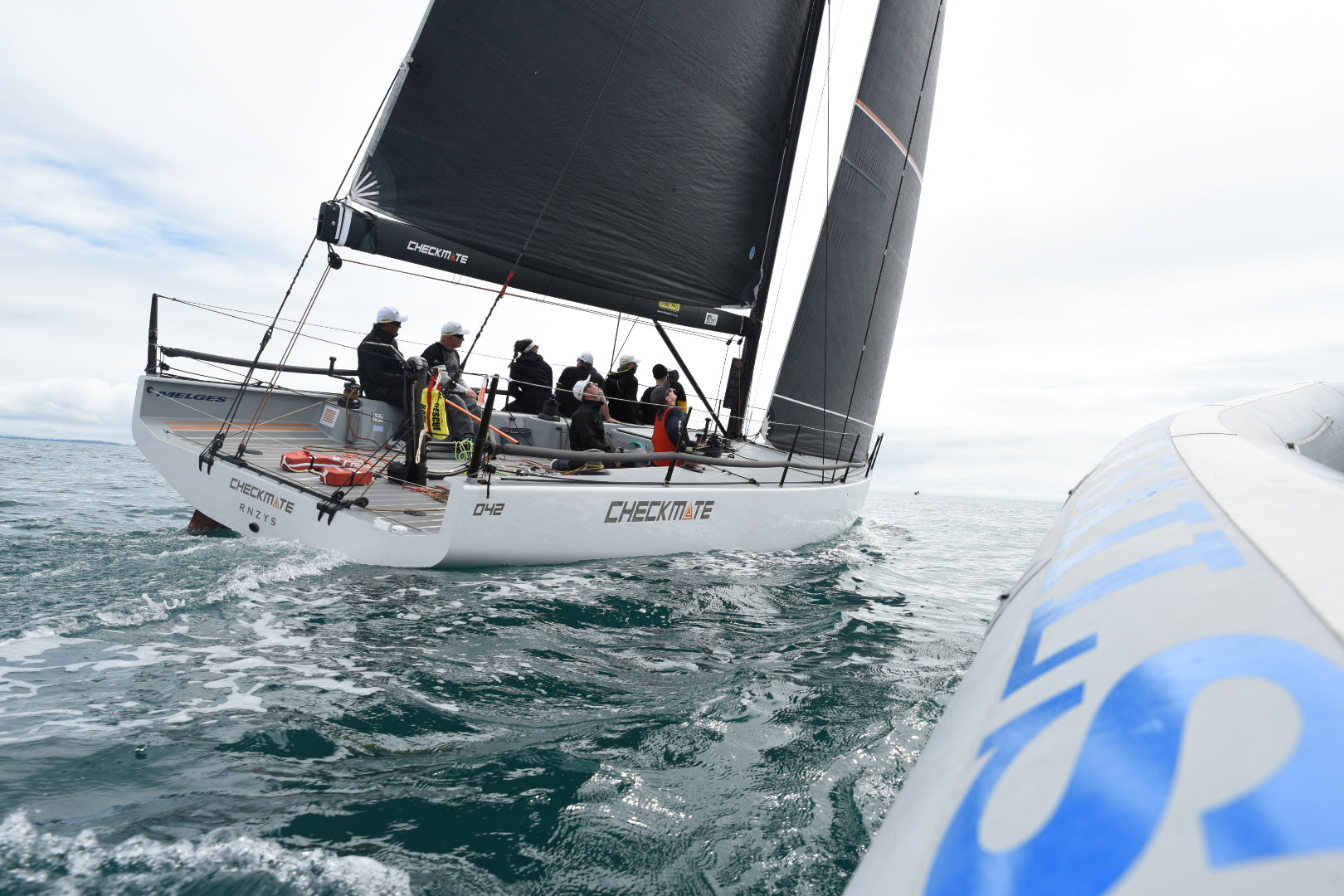
PIC COASTAL CLASSIC
2020 PIC COASTAL CLASSIC
A Race To Remember
Just after the start, the fleet heads out of Davonport. 📸 Lissa Photography
The 119 mile PIC Coastal Classic is an event many New Zealanders look forward to each year. With a start off Devonport Wharf and a finish at Russell Wharf, the course includes several memorable landmarks. With the typical strong southwesterly breeze, boats expect to finish around dusk. But this year, as dusk approached, not one team was anywhere close to the finish line, and the wind continued to decrease. Ocean Race 65 NZ Ocean Racing, the line honours winners, didn’t cross the finish line until early the next morning. Of the 170 teams that started, only 20 eventually made it to the finish line. Most dropped out at Cape Brett, knowing that the usual 20 mile final sprint up the coast—avoiding rocks, islands, and competition—was not to be this year.
North Sails expert Bianca Cook was onboard NZ Ocean Racing. “The PIC Coastal Classic was the first race for the boat since the end of the 2017/18 Volvo Ocean Race, and the first race for New Zealand Ocean Racing,” she said after the race. “Not quite the conditions everyone gets excited about, but we were extremely happy with the crew’s attitude. Our masthead code zero ended up being the sail for the race with a brief change to the J0 before Sail Rock, when the breeze picked up to 14 knots. We chose to sail outside Cape Brett, and was a park up… I had flashbacks to the doldrums, but the team kept patient and the breeze picked up enough to push us around the Brett. We managed to finish at 03:49am, the first monohull to win since 2009. We are extremely happy with the results: First boat to finish, first on handicap, and claiming the North Sails Trophy for First overall on PHRF Handicap.”
Prepping for the code zero onboard Bianca Cook’s NZ Ocean Racing 📸 Georgia Schofield
North Sails expert Andrew Wills was onboard the Melges 40 Checkmate. “This year’s Coastal Classic was unlike any other over the last 15 years. The traditional strong southwesterly breeze that would push you up the coast was replaced with a light northerly, which made for a long, slow upwind. The start of the race had a lot of tactical decisions and opportunity. As the day wore on, it was more of a long starboard tack. At times we were slightly cracked sheets and making good speed towards the finish line in Russell. But as night fell, the breeze died to pretty much nothing. The boats out further to sea seemed to do better, but still had to make the tricky transition into the bay towards the finish.”
“It was the first Coastal Classic for Melges 40s in New Zealand,” Wills explains. “I was lucky enough to sail as tactician for the RNZYS commodore, Aaron Young, and crew morale remained high despite the lack of wind. I was stoked to have been one of the few finishers in a real test of perseverance. Next year I am hoping for the traditional southwest blast up the coast!”
📸 Lissa Photography
North Sails expert and designer Magnus Doole was onboard the Ker 40 Icebreaker. “We knew it was going to be a challenging day of gear changes with the opportunity to define the race once the sun began to set behind Whangarei Heads.” Despite overtaking and extending their sistership, Icebreaker stopped in the “parking lot at Cape Brett” early Saturday morning. “We made the difficult decision to retire given the forecast and non-sailing commitments for some of the crew; one consolation was to be the first boat in our division to get to dry land! Nevertheless, a fantastic race with a great group of people and plenty of stories to tell afterwards.”
North expert Richard Bicknell sailed on V5, an old TP52 with a canting keel, which also got stuck at Cape Brett and retired. “We had a great start and were really happy with the way we had the boat going on only our second sail. We’re looking forward to our next race.”
📸 Lissa Photography
On Cation, a Roger Hill 18.5, North expert Matt Steven was thankful for his talented crew. Cation finished second in the multihull division. Matt commented, “We were lucky to have some of NZ’s top sailing talent including Murray Jones on tactics, and Owen Rutter who did an excellent job at the helm. We couldn’t have started the race much worse after a small 8.5 catamaran pinched us off at the boat-end, forcing us into a full circle and starting three minutes late! However, with our masthead J0, we powered back into the pack of other 55 to 65ft performance multihulls. Thanks to our self appointed chefs on board, Roger Hill and Simon Gundry, we were well fed going into the night with a full cooked meal served with silverware.
As Cation went into the night, their large tacking angles helped them establish decent speed. “There was more breeze offshore,” said Matt, “so we kept heading out to eventually overtake the whole fleet coming into Cape Brett, except for the Bianca and NZ Ocean Racing. As the Sun started to rise, we sailed into Russell with a jubilant crew– happy we made it. This was by far the longest Coastal Classic I have done, but also the best result!”
Congratulations to all competitors who finished the race, especially to NZ Ocean Racing for an outstanding debut! For more info about their sail choices, contact your local North Sails loft.
Contact Auckland Contact Bay of Islands
📸 Georgia Schofield
📸 Lissa Photography
📸 Lissa Photography
📸 Lissa Photography
📸 Georgia Schofield
📸 Lissa Photography
📸 Lissa Photography
READ MORE
READ MORE

#NSVICTORYLIST: ROLEX MIDDLE SEA RACE
FAMILY FIRST THE AT 41ST MIDDLE SEA RACE
North Sails Powers a Clean Sweep of 2020 Race Scoreboard
📸 Rolex / Kurt Arrigo
In the year of Covid, the Rolex Middle Sea Race was a much-anticipated event before many participants tucked their boats away for the season. At the end of the 606 miles, Elusive 2, a Beneteau First 45, claimed overall honors, corrected time for the 2020 race. Their victory is memorable because this is the second consecutive win for the team, co-skippered by Maltese siblings Maya, Christoph, and Aaron Podesta. Elusive 2’s back-to-back success is the first since Nita IV, who won three races between 1978 and 1980.
“It is a huge achievement to have won this race in back to back years,” remarked Christoph. “It is really hard to win the race at the best of times, so winning it twice in a row is massive and something we are all going to be very proud of for a long time to come. We are sailing with our family boat with a family team, and I am struggling to find words to describe the feeling!”
Rolex / Kurt Arrigo
Multi70 Maserati and VO70 I Love Poland took multi, and monohull line honors, respectively. Maserati reached the finished line under the stars in 2 days, 08 hours, 31 minutes, 31 seconds, 15 minutes ahead of their closest competition. Meanwhile, I Love Poland took home the RLR Line Honours Trophy after a match race duel to the finish line with Zbigniew Gutkowski’s E1, formerly Abu Dhabi Ocean Racing, which won the Volvo Ocean Race 2014-15.
“We are very happy,” commented I Love Poland’s skipper Grzegorz Baranowski. “It was tough from the beginning, with a lot of tacks at the end. Our boat is a special government program for young sailors to learn offshore sailing. For them, this has been a perfect experience. They now know you have to fight to the end. They will remember this forever.”
North Sails celebrates the numerous victories picked up by our clients across the six classes. And a special round of applause for the Rolex Middle Sea Race organizers who, despite challenging circumstances, made it possible for 50 teams representing 14 countries to go sailing.
📸 Rolex / Carlo Borlenghi
📸 Rolex / Carlo Borlenghi
READ MORE
READ MORE
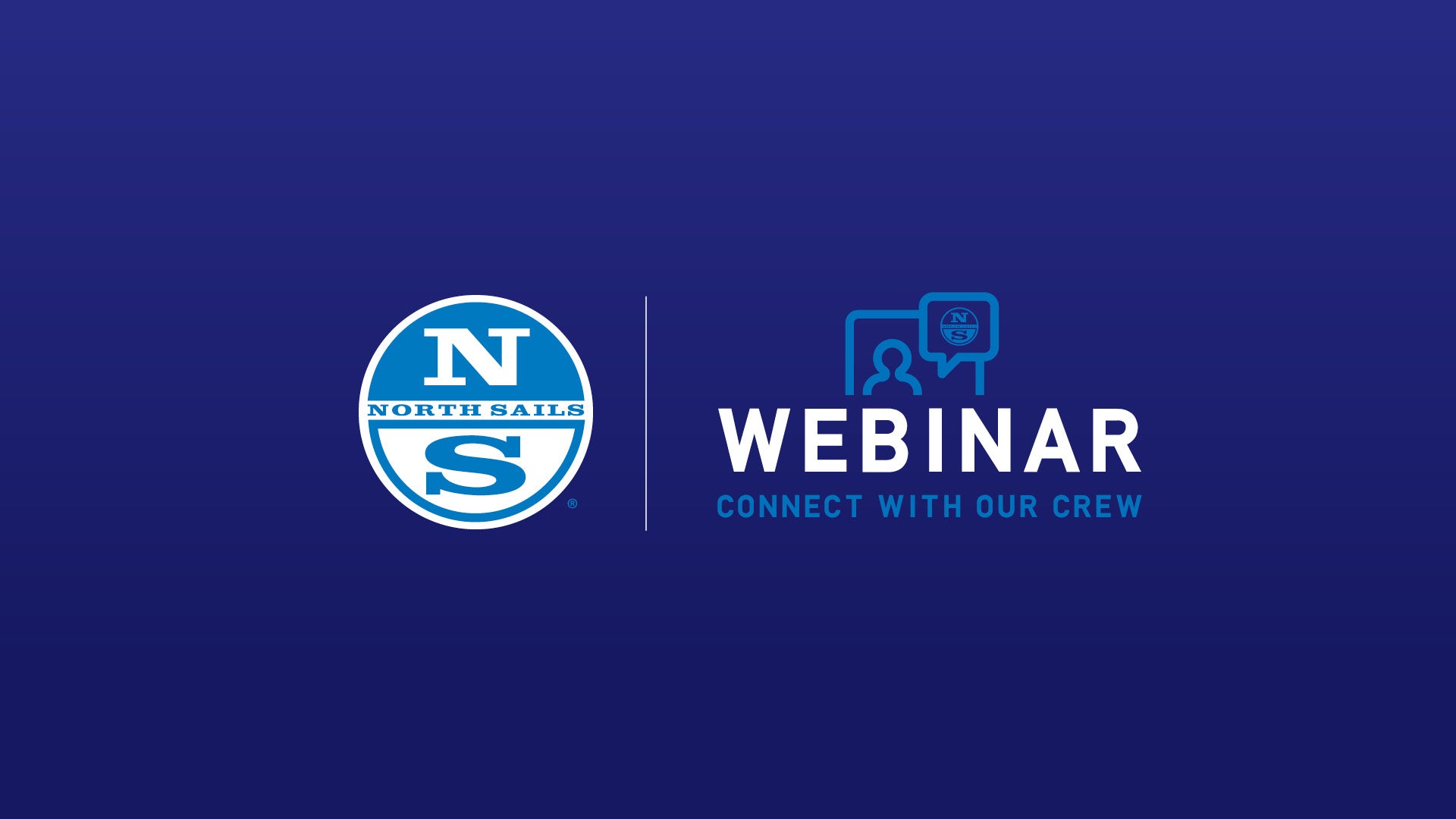
LET'S TALK E SCOW | UPWIND TUNING WITH JEFF BONANNI
LET’S TALK E SCOW
Upwing Tuning & Sail Trim with Jeff Bonanni
Informative webinar featuring E Scow expert Jeff Bonanni, multi-class World Champion Eric Doyle, and our one-design expert Allan Terhune. This webinar focus on upwind tips to make the E Scow fast in different conditions. Jeff, Allan and Eric share their thoughts as they review photos and a video taken during a training session. Very interesting and informative for those looking on improving performance.
The E Scow class is one of the best Scow classes, and boats powered by North Sails have dominated the past fine National Championships.
The North Scow designs are the exact same design that you have been winning with, that you know and you want.
The proven Scow designs are only available from North Sails.
Shop E Scow North E Scow Victory List E Scow Experts
READ MORE
READ MORE
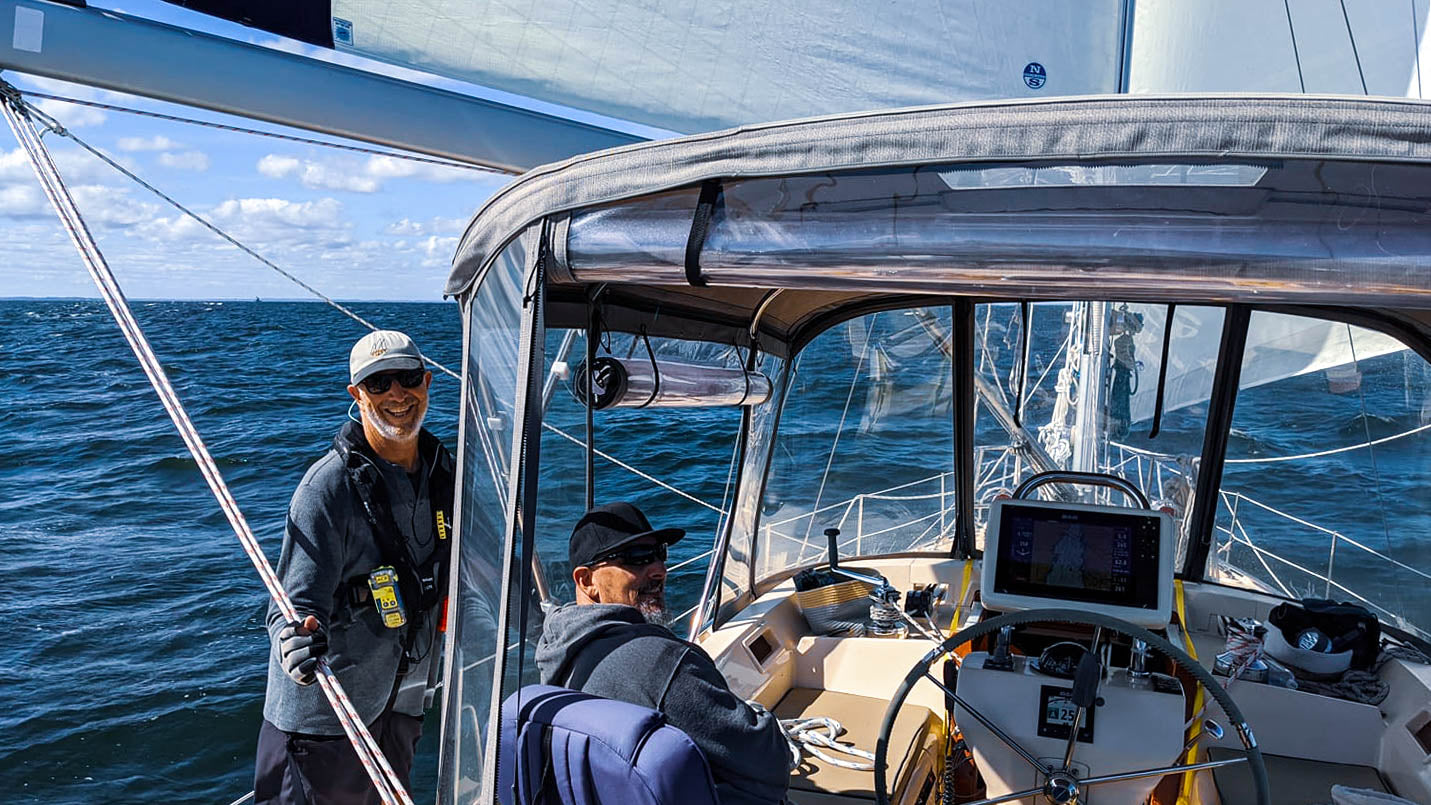
NEW SAILS FOR ISLAND PACKET AD ASTRA
NEW SAILS FOR ISLAND PACKET AD ASTRA
Tom Fortner Embraces the Cruising Lifestyle With 3Di OCEAN 330
Tom Fortner lived most of his life in Prescott, Arizona, but set his sights on moving to Florida to buy a boat and begin his next life adventure. He took ownership of the Island Packet 45, Ad Astra, in January and has been sailing as much as possible since then. “I’ve always wanted to get a boat and learn how to sail so I can cruise around,” said Tom. Now he’s cruising up and down the United States’ east coast.
Though he has been sailing for ten years, Tom still considered himself a novice. That all changed when he acquired Ad Astra; he’s been sailing more than ever, almost non-stop. “I got my bareboat and ASA certifications to be better prepared. I don’t race, so I have also never learned how to trim sails properly. The times I did spend sailing, I likely wasn’t trimming properly and never had my telltales flying right.
Ad Astra is currently outfitted with a new inventory of a 3Di OCEAN mainsail and genoa. Tom worked with Ft Lauderdale based cruising expert Bob Meagher. “When I got my new sails and trimmed them in, I was amazed by how perfectly they looked,” he remarked. “The telltales were flowing in the right direction naturally on both sides, and the sails noticeably had a great shape. Once North Sails delivered my mainsail in St. Augustine, FL, I was ready to head North.”
Ad Astra’s Journey North: Florida to Maine, Summer 2020
Tom began his east coast adventure in Dayton Beach, FL, headed North towards Charleston, SC. There, he met with sail expert John Bowden to have his new 3Di OCEAN genoa installed. “It was perfect,” Tom said. “The North team in Charleston also helped me with my gennaker sail bag that needed some new stitching.” From there, Ad Astra’s trip up North had officially begun.
The next stop was Beaufort, NC, then on to round Cape Hatteras. “Fortunately, we had decent weather to Norfolk, VA, and it was smooth sailing up and around the cape,” Tom reported. After a few days, Tom departed and headed up the coast, making little stops and checking off locations on his bucket list. Passing by Hampton, VA, Ad Astra took a pit stop in Annapolis, MD, for a few days before continuing North. Tom stopped in Newport and Block Island in RI, and Cuttyhunk, MA, eventually sailing to Maine.
A ripped gennaker on the way to Maine required a call to the North Sails loft in South Freeport. “I had ripped my gennaker on the spreader, which I now call the ‘shredder.’ Sail expert Eric Baldwin and team couldn’t have done a better job making sure I got back on track. They quickly fixed my sail and returned to me on the boat within a couple of hours.”
“I got live Maine lobsters straight from the boat for the price of a hot dog. It doesn’t get better!”
In Maine, Tom took in all the sights, cruising around Pulpit Harbor and Seal Bay. He spotted a lobster fisherman and snagged a few bugs for dinner, where he and some friends cooked on the beach that night. “For my first trip to Maine, it was spectacular,” he said. “The fact that I sailed from Florida made it even more satisfying!”
Reaching his Northern limits, Tom and Ad Astra turned south, first stopping in Boston, MA. Tom picked up his son-in-law for the trip down to Long Island, NY from Massachusetts. Sailing into New York harbor for the first time under the shadow of the Statue of Liberty is a moment Tom won’t soon forget.
Tom in New York Harbor visiting Lady Liberty for the first time on a sailboat.
Working his way back south, he returned to Annapolis, MD to spend a couple of weeks before heading back to Florida.
What’s next on the bucket list? Tom commented, “I am thinking about venturing to the Bahamas at some point. Maybe attempting a circumnavigation. I’m getting to an age where I’ll miss my opportunity if I don’t do it now. A big sailing trip is something I’ve wanted to experience for quite some time. I am so glad I’ve taken the leap to check off an experience I’ve wanted to do my whole life.”
East Coast Support + Service with North Sails
“What I enjoyed most was being able to work with the different lofts all along the east coast, no matter where I was. North Sails has a great network with easy access for a transient sailor.” This trip was his first time Tom had ever sailed offshore overnight for an extended amount of time. For someone new to cruising, Tom was impressed with the North Sails support; both close to home and during his trip. He commented, “It’s nice to know that I can travel around and get the same service and expertise no matter where I land.”
Why 3Di? “I chose North Sails 3Di because I knew they would last,” said Tom. “I can’t do this forever, but I am confident these sails will last the entire time I own this boat. It was a choice I made that I know I won’t regret.”
READ MORE
READ MORE
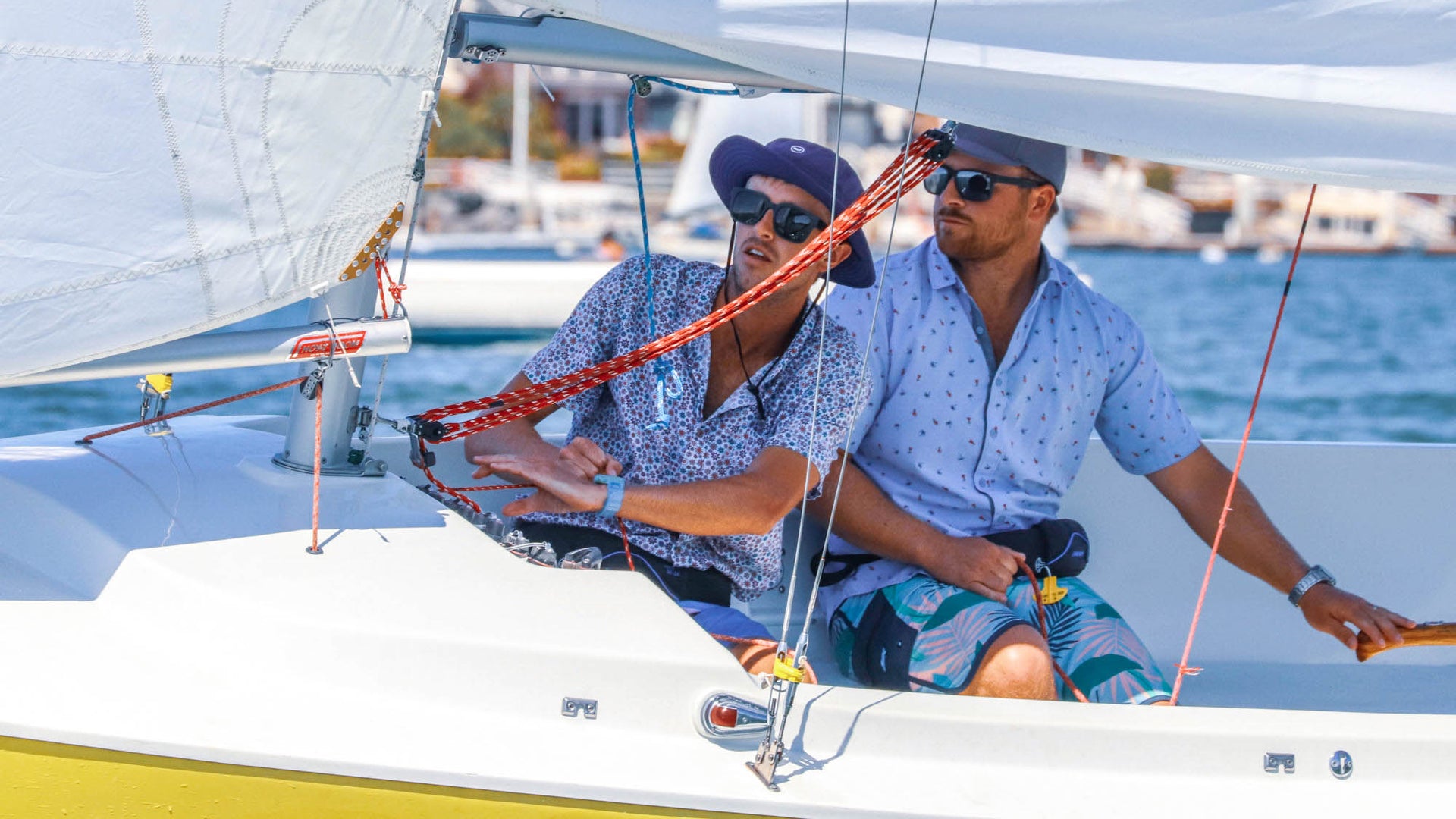
IN DEPTH LOOK AT YOUNG POWERHOUSE ALEX CURTISS
IN DEPTH LOOK AT YOUNG POWERHOUSE ALEX CURTISS
His Top Tips & Tricks For Sailing
A self-described “one design guy,” Alex Curtiss grew up in Chicago sailing Optis, 420s, and Lasers, as well as other one design and PHRF boats. In 2016, he graduated from St. Mary’s with an economics degree and two All-American awards, and moved to California to work as a sailmaker. He also sailed Etchells, J/70s, and TP52s; recent victories include the Etchells North Americans (as part of Scott Kaufman’s team) and the Prince of Wales U.S. Match Racing Championship.
Asked to name his favorite boat, Alex laughs. “Honestly, if bathtubs were racing each other and they were all similar, I’d be happy to go race bathtubs. I wouldn’t say that I have one particular class that is better than the rest. I just love the game.”
Although he helms when team racing dinghies, Alex really enjoys crewing. “I feel like I can help the team more if I’m organizing and coordinating the crew. It is a little bit more fun and a little bit more of a challenge, just because there’s more moving parts.”
When not sailing, Alex loves to surf and play golf. Looking ahead, he’s excited to be part of North Sails. “There’s so much tradition, with great roots here in southern California. Building on everything that the team has already created, and being part of a winning and successful culture—that is what I’m most excited about. North has always been well known for its one design sails, and now I’m part of a rich history
Tell us about Champions of Champions. How does it feel to take first place honors as a representative of the Lehman 12 class?
The CofC’s this year were literally in my backyard which was something cool to be apart of. Our local Lehman 12 class is definitely on the map now. It had been quite a while since our class was nationally recognized. We are very proud of that. It was also very cool to share the experience and crew for my best bro Jake LaDow. He and I do a lot of sailing together in a wide variety of different classes and disciplines. It just felt like another weekend hanging out.
What are your top 3 tips for someone just getting involved in the class?
Get comfortable with starting in close quarters. This is applicable to Harbor 20’s especially. Traditional starting techniques can often lead to not so ideal starts. Understanding what your time and distance is will help you and your crew know when to set up, then knowing how long it takes to accelerate, and then starting at full speed at go. These three things are super important to getting a jump on the guys around you.
Be scared of going slow. Never let your boat get to pinchy, I call it “keeping the rope on”, but try and be full speed all of the time.
Understand what the longer breeze phase is. Especially in SoCal, its all about the phase of the breeze. Whether you are sailing sabots, J70’s, or TP 52’s. This is an important part of scoring well in every race.
How did you get involved in sailing, especially One Design sailing?
I got involved with One Design sailing at a very early age. I grew up sailing Optimist’, Club 420’s and lasers. I was lucky to have very supportive parents and siblings who pushed me to do as much racing as I possibly could. My dad had several Offshore OD boats growing up too. My first job was the backstay adjuster. I had to pump the backstay around leeward marks, and let it off at the weather mark. Often times my brother in law was the tactician, he taught me a lot about basic tactics and was very patient with me when I asked dumb questions.
What keeps you coming back, even after a bad day on the water?
I would say just the curiosity I have with sailing keeps me coming back. There are so many variables in any boat you get in on at a given time. Everytime that I think I am a little burnt out, I go for a harbor cruise here in Newport Beach, have a few beers with friends and it makes me realize just how much I love the sport of sailing, and why I do what I do.
What stands out in your mind as the biggest learning curve in sailing?
Just staying open minded. Especially working in the industry, it is easy to get complacent with what you are comfortable with. I really rely and question my mentors, recently Eric Doyle, to help just expand my general knowledge of the sport. I sail in so many different boats and in different disciplines, its just really important to keep pushing myself to learn more, ask questions, and then try and apply them to my sailing.
Looking ahead, how does one prepare for offshore races, such as the Transpac?
Preparation has so many different aspects to it. The first thing people need to do is to make sure their boats and sails are structurally sound. I would encourage anyone who is considering the Transpac to consult their local sailmaker and boat builder. Last go around, there were several people who had their rudder posts crack or break entirely. That would be where I would start. From there making sure you have the right crew. Remember you are spending anywhere from 7-12 days on a boat with these people. You need to trust them and probably get a long with these people. Finally, go spend some time offshore, and get some experience doing sail changes, watch systems, and make sure all of the sails look good and are ready for serious use.
READ MORE
READ MORE
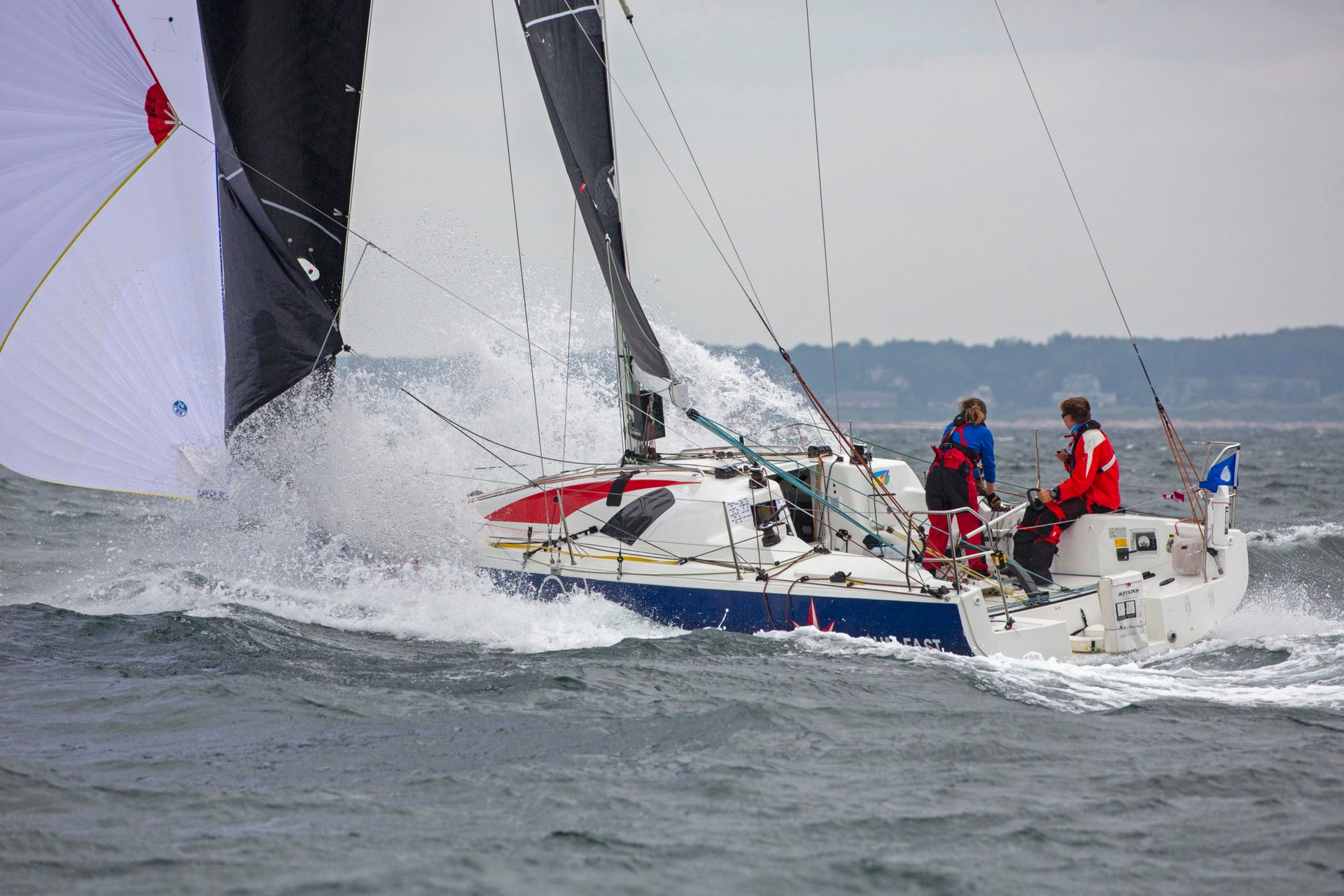
OFFSHOREDOUBLES.ORG LAUNCHES MEMBERSHIP DRIVE
JOIN THE COMMUNITY OF ENTHUSIASTS AT OFFSHOREDOUBLES.ORG
Calling All Sailors to Action in Advance of the World Sailing Annual Conference to Determine if the Offshore Mixed Doubles Event Will Continue to be Included in the Paris 2024 Olympic Games
The Offshore Doubles Sailing Association has launched its membership drive in advance of the World Sailing Annual Conference. A non-profit sailing association, Offshore Doubles is committed to strengthening the community of sailors, events, and boat classes who are in the fastest-growing sector of the sport.
In one week since launching the campaign, OFFSHORESHOREDOUBLES.ORG has signed up more than 600 members from 52 countries, with women sailors making up 16% of the base. The group hopes to reach a substantial membership list in efforts to keep the Olympic Offshore Mixed Doubles on the slate for Paris 2024.
There are more than 5,000 boats racing doublehanded under rating rules and many strong one design fleets around the world and the inclusion of doublehanded trophies in most major events around the world, it was time to bring the community closer together to accelerate learning and growth and help sailors get into this exciting discipline,” said Larry Rosenfeld, founding President of Offshore Doubles.
Ken Read, a world-renown, multi-discipline sailor and the President of North Sails is one of the many sailors who are actively participating in the doublehanded discipline. Read campaigned Alchemist, a Jeanneau Sunfast 3300 throughout 2020. He sailed in four events, two with Suzy Leech and two with brother Brad Read. The Alchemist team won on handicap in all four doublehanded races entered, including taking line honors in the New England Solo/Twin.
“My doublehanded experience kicked off in January 2020, not long before we knew that socially distanced, short-handed sailing would be so popular this summer,” commented Read. “Luckily, talented crew and world-class competition are never hard to find in Newport, Rhode Island. A summer of sailing Alchemist was the most fun I’ve had sailing in a long time, and doublehanded has been a way to re-energize and rediscover my love of the sport.”
The group is calling all sailors into action in advance of the World Sailing Annual Conference next week which will determine if the Offshore Mixed Doubles Event will continue to be included in the Paris 2024 Olympic Games. NOW is the time to show the global sailing community and the International Olympic Committee that Doublehanded sailing has broad global support. DOUBLEHANDED ENTHUSIASTS ARE INVITED TO JOIN TODAY (at no charge) at www.offshoredoubles.org
READ MORE
READ MORE

VENDÉE GLOBE 2020 VIDEO SERIES: EPISODE 3
THE SPIRIT OF ADVENTURE
Vendée Globe 2020 – Episode 3
In search of a challenge, a record, or an adrenaline rush, the sailors participating in the Vendée Globe are constantly testing their boundaries and pushing their equipment in an attempt to rack up a few miles, hours, days. From them, the open ocean beckons with the taste of adventure and a fascination for the unknown.
“What’s interesting is what you don’t know,” says 61-year old Jean Le Cam, who is taking part in the Vendée Globe for the fifth time. “You are constantly questioning yourself to avoid getting bored.”
More than a race, the Vendée Globe is the ultimate adventure. The skippers hunger to get out of their comfort zone and exceed their limits, and it is their story that fascinates the spectators. This race is one of the rare sporting events where completing the single-handed non-stop round the world race is seen as a remarkable accomplishment in and of itself.
Join our Vendée Globe 2020 narrator Loïck Peyron as he uncovers why the race, even for veterans like Le Cam, is a once in a lifetime adventure.
READ MORE
READ MORE

FINDING THE FIGARO FORMULA
FINDING THE FIGARO FORMULA
Setting the Pace for Irish Offshore Sailors
Kenneth Rumball has been sailing since he was a toddler with his parents, making a name for himself in dinghies and then adding a number of impressive offshore miles to his resume. With fewer opportunities in Ireland to make full-time career professional sailing, he went the academic route and studied accounting, only to be pulled back into the sailing industry. Rumball took on the Irish National Sailing School’s ownership and running, using his own experiences to inspire youth sailors in Ireland to pursue the sport and even invite them to race with him.
Rumball is a bundle of energy and enthusiasm, and a leader for Ireland in sailing, so it was no surprise that when the Olympics added a double-handed offshore event, he would take that challenge on too, teaming up with co-skipper Pamela Lee in the Figaro class, and enlisting the help of North Sails Expert Nigel Young and his loft team. Rumball and Lee learned some sailmaking skills with the North Sails team to prepare them for any surprises offshore better.
“We’ve got the standard Figaro 3 setup, a full mainsail, a big spinnaker, a small spinnaker, a Code Zero, and a J3,” Says Pam. “When we returned from France, we got the sails off the boat and took them to the North loft, and we got a full sail check and any repairs that needed to be done. North Sails Shane Hughes at the Wicklow loft talked us through everything he had done and showed us what to look for, what to be worried about, and prepped us with a sail repair kit that we hopefully will not have to use. Having everything checked over gives us the confidence to push the boat to maximum performance.”
Rumball describes pulling the sails out of the bag for the first time, “they fit, and they worked. With our training schedule, I didn’t want to buy sails and then go back and ask for things to be changed. I wanted sails that worked would be fast and long-lasting. Nigel Young was my first call to make that happen.”
Together, with the North Team in Ireland and France, RL Sailing was able to get their full 3Di set-up dialed in and tuned. “The product support has been just fantastic,” says Rumball.
With events canceled across the globe, including the double-handed worlds in Malta, Rumball used the Solitaire Du Figaro as the jumping-off point for his training schedule in the Figaro.
“We’ve been charging forward on the Figaro, so we looked to the Solitaire, and I decided to give it a go. The Solitaire is an incredibly tough race,” says Rumball. “We were not as planned as we could have been, but Pam was there shoreside to support me. It was a great training experience.”
The team has been based in France for most of the summer for the Solitaire and Spi Ouest, eager to train against the French teams that will be their competition in 2024. They’ve delivered the boat back to Ireland for the fall, where Pamela teamed up with Catherine Hunt for the ‘Round Ireland record, setting a benchmark for female sailors while getting more time in the Figaro.
“When they announced the Paris 2024 Olympics would have a mixed crew double-handed offshore event, many avenues in the sport opened up for female sailors to gain experience offshore because suddenly, people need offshore female training partners, and that’s how I started sailing with Kenny for Ireland,” says Pam.
These offshore experiences are an integral part of their training regime; double-handed sailing requires a different approach focused on endurance, managing multiple roles on the boat on your own, and having excellent self-discipline. Lee and Rumball are looking for every opportunity possible to test their offshore stamina, despite the pandemic’s challenges.
“The reason we also chose the Figaro circuit is because the French are the best short-handed offshore sailors in the world.” Attests Rumball, “If you wanted to compete in an event like Paris 2024, and represent your country, you’ve got to race against the best people in the world, and that is the French.”
The team is serious about their fitness and has been exploring different ways to train up. Encouraged by Lee, who is already a seasoned kiter, Rumball has taken up kiteboarding as a full-body cross-training workout. They also bike, practice yoga, lift, and run. They are also augmenting their freeze-dried meals with fresh foods pre-packaged to last for a few days at sea, although Rumball still loves porridge in the jet boil.
The pair plans their calendar for next year and hopes to compete in all the French Figaro events they possibly can, making a name for their country in the latest Olympic discipline.
READ MORE
READ MORE
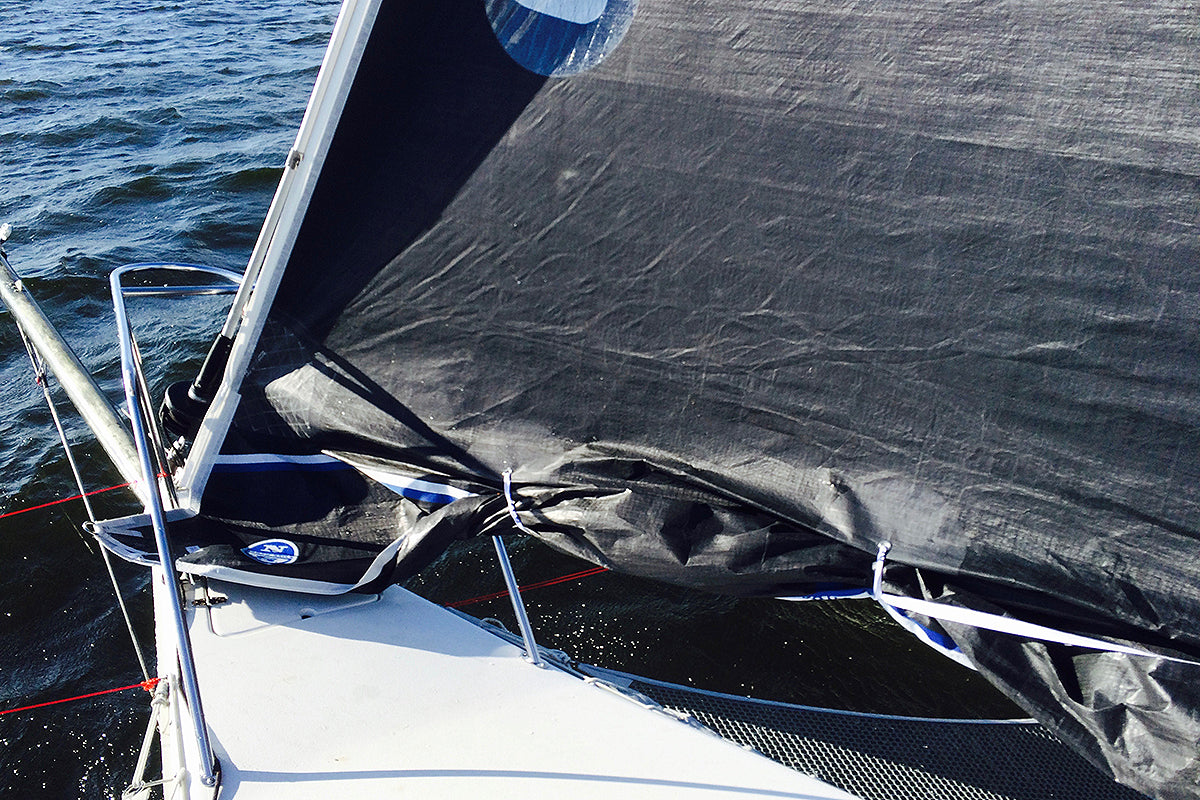
VINTERTIPS: MODIFIERA DINA SEGEL!
VINTERTIPS: MODIFIERA DINA SEGEL!
Seglingssäsongen är slut och våren känns kanske oändligt avlägsen. Men det är nu du lägger grunden inför 2022.
Börja med att lämna in dina segel på service, och fundera på om något av dem ska modifieras när vi ändå har dem hos oss. Vi har en rad spännande lösningar som till en rimlig kostnad kan ge ditt befintliga segel ett riktigt lyft.
Shorthand-anpassa ditt försegel
Att kappsegla ensam eller på två ställer delvis andra krav än på kappsegling med full besättning. Inte minst när det kommer till båthantering.
Många seglar för enkelhetens skull med rullfock. Problemet är att formen på seglet blir riktigt dålig om man behöver rulla in några varv för att minska segelytan. En lösning som blir allt vanligare, framför allt på så kallade ”fockbåtar”, är istället att använda sig av ett revbart försegel. Och det fina är att du inte behöver köpa ett nytt segel. Det går lika bra att modifiera den fock du redan har.
Det vi gör är att vi sätter in ett bindrev. På segel gjorda för förstagsprofil brukar vi också sy fast ”softhanks” längs förliket. Det gör att seglet inte åker i vattnet när det tas ner på däck.
Enklare kan det knappast bli, och på köpet får du ett segel som är väldigt effektivt på öppna bogar. Ett stort problem med högsmala fockar är ju att de tappar formen så fort man faller av från bidevind. Men här fungerar revhornet som ett reachinghorn; genom att skota (det orevade) seglet i revhornet får du kontroll över twisten och seglet drar mycket bättre. Skillnaden är faktiskt påtaglig.
Det här är en typ av segel som vi verkligen kan rekommendera för all typ av segling med liten besättning – oavsett om du kappseglar eller semesterseglar.
Montera dragkedja i dina undanvindssegel
Sättning av spinnakers eller gennakers är inte alltid enkelt. Det är mycket duk som ska upp och även mycket rutinerade besättningar får ibland problem med segel som fyller innan det är hissat i topp, som snor sig eller hamnar i vattnet.
Det där löser vi genom att sy in ett blixtlås längs ena liket. När du drar ihop dragkedjan formas hela seglet till ett långt, korvliknande paket som kan hissas i lugn och ro. När det är i topp och du drar i skot och gajar öppnar sig blixtlåset och seglet fyller.
På båtar över 50 fot är det här närmast ett måste, men vi tycker att det hör hemma på egentligen alla båtar där sättningarna känns utmanande. En ”zippad” spinnaker eller gennaker resulterar i både snabbare och säkrare sättningar, och det har man lika stor nytta av på bankappsegling i en 40-fotare som på semestern i en 33-fotare.
Mät om seglen och sänk ditt mätetal
Segel krymper. Ganska mycket till och med. En procent låter kanske inte så mycket men det innebär att ett par år gammalt storsegel till en 40-fotare kan vara en decimeter kortare i förliket än när det var nytt.
Det är en naturlig process och egentligen inte mycket att oroa sig för. Att seglet de facto blir mindre är istället något du kan dra nytta av. Minskad segelyta innebär att handikapptalet kan sänkas, och ambitiösa kappseglare mäter därför rutinmässigt om sina segel inför varje säsong.
Det är kanske att ta i. Men om du har ett individuellt mätbrev bör du överväga att göra det åtminstone någon gång ibland. Vi har befogenhet att mäta våra egna segel och om vi passar på att göra det när seglet är inne för service är det inte någon stor eller kostsam operation.
READ MORE
READ MORE

HÖG TID ATT LÄMNA IN SEGLEN FÖR SERVICE
HÖG TID ATT LÄMNA IN SEGLEN FÖR SERVICE
Service av segel är lite som att gå till tandläkaren eller besiktiga bilen.
Det är något man bör göra en gång varje år, även med segel som är i fint skick. Det gör att du slipper problem nästa säsong och förlänger livslängden på dina segel.
När vi får in segel upptäcker vi ofta slitage och skador som ägarna har missat. Det kan handla om småsaker som knappt är synliga för ett otränat öga, men om de inte åtgärdas kan skadan snabbt förvärras. I värsta fall kan det leda till att seglet totalförstörs och att hela semestern måste avbrytas.
Att fladder och nötning sliter hårt på segel inser de flesta. Men solens UV-strålar är faktiskt ännu värre. Detta gäller för alla typer av segel, men där vi ser mest skador är bland rullseglen, som ju ofta sitter uppe från tidig vår till sen höst. Med ett bra UV-skydd är det helt okej, men här slarvas det tyvärr en del, har vi märkt. Det händer att vi får in segel som är helt slut i akterliket, trots att de bara är ett par år gamla.
Det finns flera olika typer av UV-skydd, men alla (även strumpor och kapell) har ett bäst-före-datum som inte bör passeras. Hellre byta lite för tidigt än lite för sent, är den enkla principen. Det kostar en slant. Men om du vill kunna använda dina segel i många år är det en investering som går att räkna hem många gånger om.
Fukt är förresten ett annat problem som du bör ta tag i så fort som möjligt. Efter en säsong i båten är seglen fuktiga och risken är stor att de utsätts för mögelangrepp som det är nästan omöjligt att bli av med. Det finns visserligen medel som biter men de är så starka att de bryter ner segelduken, så det är inget vi rekommenderar i första taget.
Den enkla lösningen är att helt enkelt hänga seglen på tork. Det är viktigt att seglen får hänga fritt från marken eller golvet, och att de får hänga tillräckligt länge. Förstärkningar, lattfickor, snörplinor, likband med mera suger åt sig mycket fukt och det kan ta lång tid innan seglen torkat ut ordentligt.
Det är alltså inte svårt, men det tar sin tid och är ganska utrymmeskrävande. Om du inte har möjlighet att göra det själv gör vi det gärna åt dig!
READ MORE
READ MORE

JEFFREY BONANNI JOINS THE NORTH SAILS TEAM
JEFFREY BONANNI JOINS NORTH SAILS
Bringing Extensive Experience to the Class as an E Scow One Design Sales Representative
Bonanni is a five-time National and North American Champion, including the 2015 E Scow Nationals, and brings extensive experience in the E Scow class as the North Sails one design representative. An active racer in the New Jersey area, Bonanni also serves on the National Class E Scow Associations Board of Directors and as the Commodore of the Eastern Class E Scow Association. He is one of a small handful of helmsmen to have won all six National Championship trophy races.
Bonanni has been an integral part of the leadership team propelling the E Scow class forward and now brings that passion to the North Sails class support.
“I’m thrilled to be joining North Sails and excited to help the E scow fleet raise the bar competitively.” Says Bonanni, “I look forward to engaging sailors both new and old to the class, and hope to be viewed as a resource to all.”
Bonanni is most proud of leading two yacht clubs to win the Torch Lake Team Trophy for best-combined scores for a club at the National Championship, fostering an atmosphere of information sharing, inclusion, and fleet building. In his new role at North Sails, Bonanni will facilitate communication and innovation within the E Scow Class, forging stronger partnerships and support for E Scow sailors.
“Jeff fits in well at North Sails; his dedication to one-design sailing is evident through his continued work fleet building and sharing information.” Says Tim Healy, President of North Sails One Design, “He is always helping someone, trying something new to make the fleet faster, and sharing his expert knowledge of the boat. Jeff realizes that this sport is more fun when information is shared, and the overall level of competition is raised.”
Bonanni is a resident of Little Silver, New Jersey, and a graduate of Boston College, where he was an ICSA All American Skipper.
North is the only sailmaker for winning Scow sails that have dominated the circuit for decades. Designs like the MC Scow Z-MAX, the E Scow AP Main and LM/MH Jibs, the C Scow I-1 Gold, the A Scow designs that command the circuit scoreboards, the XBoat Powerzone main and RAD Blue jib, among other designs for the M-16 Scow, M-20 Scow, Inland-20 Scow and more.
Contact Jeff E Scow Sails E Scow Tuning Guide Find Your Scow
READ MORE
READ MORE

VENDÉE GLOBE 2020 VIDEO SERIES: EPISODE 2
THE IMOCA TAKES FLIGHT
Vendée Globe 2020 – Episode 2
The Vendée Globe is a race exclusively reserved for the IMOCA, a 60-foot monohull machine built for racing. The open rule gives the naval architects great freedom of design when imagining the next generation of boats. A class known for technological experimentation, the IMOCA has seen radical innovations such as foils appear in recent years. These appendages, placed on either side of the hull, provide power, reduce drag, and propel the IMOCA to fly above the surface at speeds that were once inconceivable. In two decades, the modern IMOCA has shaved close to 40 days off a circumnavigation. The 2020 race start is on the horizon, and many of us onshore wonder- how fast these boats will fly?
In Episode 2 of our Vendée Globe 2020 video series, French sailor and storyteller Loïck Peyron explores the phenomenal high-tech advances of the IMOCA. Loïck brings us beyond visual appearances and dives deep into the construction and materials, most notably carbon, used in the boats. Today, the IMOCA is lighter, faster, and more reliable. The manufacturing methods of these boats are closer to those of airplanes than to sailboats. “We use the same terms, the same mathematical formulas and the same prediction and simulation tools as those used in aircraft,” stresses Loïck Peyron. Generally speaking, “the speeds of the boats have been multiplied by four in forty years.”
READ MORE
READ MORE

2020 FALL SAILING WRAP UP
2020 FALL SAILING WRAP UP
North Sails Expert Austin Powers Shares Highlights from AYC Fall Series + Double Handed Race
© Will Keyworth / North Sails
This year’s edition of the AYC double handed distance race brought lots of boats, lots of competition, and a serious challenge to complete the course in less than 7 knots of wind. With three fleets: ORC1, ORC2, and a one design fleet of J/105’s (mixed crew), there was a little something for everyone who was interested in this growing discipline of the sport.
The competition this year included aspiring Olympians, former America's cup sailors, Volvo Ocean race veterans, professional sailors, Father-son teams, and newlywed couples alike. With the unique challenge of sailing in the Northern bay with lots of wind changes and changing current, the course provided a true test for teams to show their skill.
All in all, even with sub 7 knots, the majority of the fleet made it across the finishing line.
Results for North Sails clients included:
ORC 1: 1*,2,3,4,5
ORC 2: 1,3,4,5
J105: 1,2,3,4,5
The 2020 AYC fall series is underway. J/22’s, J/30’s, J/70’s, J/80’s and Viper 640’s are all on the water ready to compete in this year’s Fall series racing right in Annapolis. The racing is on the following days for the month of October 3-4th (already occurred), and the 10, 17-18. We encourage anyone in these classes to get out sailing during one of the best times of the year in Annapolis. We will check in next month at the conclusion of the series to check in the winners.
Mark your calendars for the upcoming events:
ORC East Coast Championships: October 23-25
J/70 Fall Brawl + J/80 East Coasts: October 31 - November 1
J/24 + J/22 East Coast Championships: October 17-18
J/105 + J/111 East Coast Championship: October 31 - November 1
Photo Credit: Will Keyworth
Photo Credit: Will Keyworth
Photo Credit: Will Keyworth
READ MORE
READ MORE

PACIFIC YANKEE'S DREW FREIDES, 2020 NATIONAL CHAMPIONS
PACIFIC YANKEE’S DREW FREIDES
2020 IC37 National Champion Interview
📸 Morgan Kinney / IC37 Class Association
Drew Freides is a well-known face in the sailing world. His list of impressive results includes back to back Melges 20 World Champion in 2017 and 2018, two IC37 Winter Series wins, 2019 Farr 40 World Champion, and most recently, winning the 2020 IC37 National Championship.
Drew commented, “This year has been a crazy one, more like musical chairs trying to organize and reorganize. We planned to spend our entire summer in Newport, RI, yet we had to be as flexible as possible. Fortunately, we were able to keep our core crew together for the back to back events; Rolex Race Week and the NYYC Annual, which served as the IC37 National Championship. I hadn’t done much sailing this summer before these last two, and half weeks, so I was thankful for the opportunity to spend solid time on the water. Our goal this year was to win the Nationals, and our entire program came together to make that possible.”
NS: The IC37 is a fun boat with strict OD rules in place. What makes the IC37 Class set up so successful?
Drew: This class is great because you don’t have to get into an arms race; you put together the best crew combination you can think of, and every team has the same restrictions and rules to follow. Some may not favor it, but I believe that the class has done an excellent job of limiting costs. Every rule in place is to get more sailors involved. The IC37 is an extremely competitive fleet but also has a collegial feeling as well. Long term, it’s not about focusing on the top boats at each event, but instead getting more and more people involved in sailing.
📸 Morgan Kinney / IC37 Class Association
NS: What do you enjoy most about sailing in the class?
Drew: My favorite thing about sailing in this class is the camaraderie. We have many friends out there racing on other boats in the fleet, and it’s fun to compete with each other on a fun, fast boat. Another thing I like is that the IC37 class offers excellent coaching and support. Greg Fisher and North one design expert Tim Healy went out together before the events and helped us fine-tune. They provided tips and took photos and video to debrief with the fleet at the end of the day. We worked on boat handling around the corners and left no details out. By the end of the day, we were ready to compete.
NS: What do you feel has helped make the class so successful?
The team at North Sails have put a ton of effort into boat set up and sail configuration. I am a believer in reefing the sails when the wind pushes the class limit. It may look weird while onboard, but once you do it, you can sail in anything, and the boat is still fast and just as competitive. It’s a good option to have. For example, it was blowing 37-30 knots on Practice Day 1, and we reefed both sails and went out and had a great day on the water. Having this option to make things more manageable in higher wind limits is a direct result of sail experts and the class working towards a common goal.
In particular, this season, having two events go off without a hitch, has been a massive factor in our year’s success. We can’t thank the New York Yacht Club enough for putting together two great events, back to back, in such challenging times. The competitors very much appreciated it. The club could have canceled this thing at any time, but I think they knew it was necessary to go racing for our sanity as sailors. This is the first regatta I have done since we the winter series in Florida back in January. Kudos to the club and race organizers for pulling this off. Every sailor appreciated it.
📸 Morgan Kinney / IC37 Class Association
Drew’s Tips for a Successful Season and Top-Notch Program:
1. The crew is crucial in getting people to fit the roles. There are no passengers on this boat. There’s just no room. So thinking through who’s going to be your team and what roles they play is critical. Finding the right people that are the right weight is also crucial. Rather than having simply great sailors, we have great sailors who are even better for their specific role. The rule of having two women onboard is also a secret weapon for our team. They are light and can do many roles that contribute to every success of the team. We choose to have a woman always “trim” the runner because they can’t hike out when doing so, so being lighter is an advantage—that said, they need to be highly skilled because that role is so essential to our boat speed.
2. Having an agile bowman and a strong mastman. Both roles require strength and timing. Clean hoists and kite takedowns are equally important because they set you up for the next leg or maneuver. Our excellent takedowns also enabled us to keep the chute up long and gave us the one-up on other boats at the leeward gate.
3. Having crew members that can do different jobs. Myself and Bill Ruh could helm the boat, but we could also trim. This worked out nicely as Bill steered for Race Week and I drove for the Nationals. We have a couple other crew who also fit into this all-around ability. To say it’s beneficial would be an understatement.
As the driver, I receive a lot of the credit, but I’m only the guy driving at the end of the day. My job is to drive in a straight line –The crew makes the boat go fast and gets us around the corners.
4. The power of the runners. The runner is the one thing that constantly has go up and down based on wind strengths. I would consider it one of the most essential trimming tools onboard. Our female crews are unbelievably valuable on the boat for roles like this. They are small and can be our primary runner trimmers and help around the boat; a great weapon for any team.
5. Confidence in boat speed is key. If you don’t have confidence, you won’t do well. Our team has confidence in our boat speed. This lets us take less risk tactically, knowing that our boat speed can get us out of jams. We don’t need to bang corners to win races, but rather play the shifts and let our boat speed enable us to pass boats when required. That consistency wins regattas.
6. Mark your settings. Where to trim the jib for certain settings, the vang, marks for the leads, marks on the jib sheets, marks on the runners, marks for the outhaul, how many plates we needed beneath the mast for each wind speed, etc. We knew what settings we had without having to waste time and energy thinking about it. This allowed us to focus on sailing the boat fast and smart rather than worrying about the boat tune.
“The one thing Vince Brun taught me is that when you’re racing the boat you don’t want to be thinking about your settings. You should know where they go.”
7. Weight placement. Depending on wind speed, we all knew where our crew weight needed to be. Shifting crew weight according to wind strength helps you minimize wetted surface in light air, control the balance of the boat, and maximize the power of the boat as the wind picks up. Controlling not only the heel but also the fore/aft trim is important.
8. Preparation is key. We always make a point to have two solid days of practice with most, if not all, of the crew in attendance before every event. Practice day one is about getting everyone acclimated. Practice day two we hit it hard. The nice thing about giving yourself two full days is that you spend the first part of the first day getting things organized. When all the other boats show up for their first practice day, we’re already set up for speed and ready to go.
From your team at North Sails, well done to all competitors on a successful event! Special congrats to Drew Freides and rockstar team on Pacific Yankee, 2020 National Champions!
IC37 Class Page Tuning Guide Contact an Expert About the Class
📸 Morgan Kinney / IC37 Class Association
📸 Morgan Kinney / IC37 Class Association
READ MORE
READ MORE
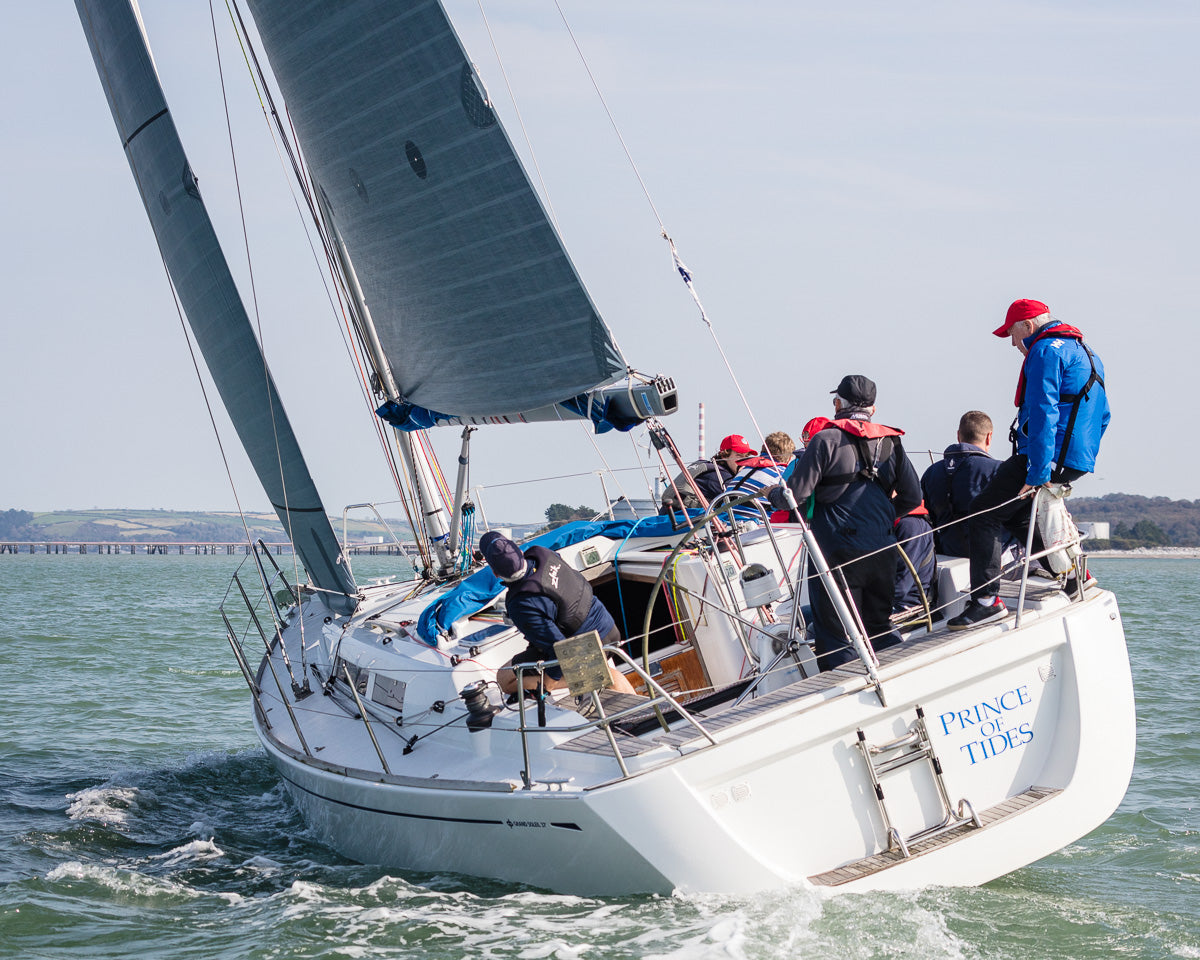
THE PRINCE OF TIDES
PRINCE OF TIDES MAKES A STATEMENT IN LOCAL RACING
New 3Di Wardrobe Propels Local Sailors to the Front of the Pack
📸 Bob Bateman
Frank Caul and John Molloy, sail out of the Royal Cork Yacht Club and together own Grand Soleil 37, Prince of Tides. Frank comes from a cruising sailing background, and John is more experienced in the racing platform. They’ve been traveling down to the Caribbean annually for fun getaways for the better part of 20 years, and during the week, they take part in local racing out of Royal Cork Yacht Club which is celebrating a very special tri-centenary, being the oldest club in the world.
The Boat
Prince of Tides was a ten-year-old boat kept safely indoors in Hamburg, Germany until Frank and John acquired it last summer when they were ready to step up their game and get more competitive in the local racing fleet.
Frank said, “I found myself in a position to buy a new boat. We had been to the boat show, Das Boot, in Dusseldorf, Germany. Once we figured out what we were looking for, John went again last year on his own and wrote back to tell me that he found us a boat! We went to Hamburg right away and checked her out.” The Grand Soleil 37 would be the perfect fit for the two friends to share more sailing adventures. All they needed was to find the right sailmaker to help get her up to speed.
The seven person crew sailing on Prince of Tides is very much amateur.”We have a few trimmers on the boat, said Frank, “and John probably has the most experience as he’s been racing for quite some time, which is why he normally helms. The rest of us are very new to sailing, but we’ve been working hard to improve, and with the help we’ve received from North Sails, it’s been a positive experience for us all.”
Sails + Expertise
“Last November, we met sail expert Nigel Young, based in Myrtleville, Ireland, who not only helped design a new rudder for our boat with the help of Mark Mills but also introduced us to the power of 3Di,” said Frank.
“We haven’t looked back since! Nigel is fantastic. We didn’t have any particular allegiance to any sailmaker at the time, but working with Nigel was such a great experience, it was obvious that choosing North Sails would be the right decision for our sailing.”
Frank and John were excited to get back on the water again; their season was delayed until mid-June due to COVID restrictions, so they arranged for Nigel to see what they needed to get their boat up to speed to be competitive at their local club.
“Nigel stepped on board, and it was a world of difference,” said John. “We got a new 3Di ENDURANCE 760 mainsail and a new #2 and #3 jib, and we were ready to go. From the first day we hoisted our new sails, things have never been the same!”
This year, Prince of Tides has won just about everything they’ve come up against in IRC non-spin, and both Frank and John are very excited about what their future holds. They recently competed in the Cobh to Black Rock race and won with a really fast finish time. “People were asking us if it was a record we broke, said Frank. “The following week we also won the Naval Race White Sail division.”
Nigel commented, “This year’s Cobh to Black Rock race was a quick one. Prince of Tides had the fastest elapsed time of all the classes at just 57 minutes and 18 seconds, although hard to compare with the Spinnaker one division as we started 10 minutes after them, but even so, a great performance from the team. Frank and John’s new set up has set the tone for many good things to come.”
Prince of Tides crossing the finishline in the Cobh to Black Rock race, where they took first place. 📸 Bob Bateman
Having a Reliable Sailmaker is Vital for Success.
“What sets 3Di apart from traditional materials we’ve used is that it doesn’t stretch. We can see the camber lines on the sail, which help us trim properly. North Sails has completely changed our perspective on racing. Before we were looking forward all the time, now we’re looking back at our competitors. It’s been a game-changer,” said John.
“3Di has transformed everything,” said Frank. It has made such a difference in our sailing, speed, and has made it easy for us to find the right trim settings.”
Prince of Tides started their Autumn sailing season just a couple of weeks ago with two bullets on two-four mile course races. Their biggest competition is an X-Boat. “She’s fast,” said John, “but we are faster now!”
Working with Nigel Young + North Sails Ireland
“Nigel’s attention to detail is just unlike anyone we’ve ever sailed with,” said John. “We learn so much every time we sail with him. From the headstay to the tiniest adjustments, he’s always communicating with us to tell us what we need to do, pushing us to be better sailors and make the most of time on the water.”
“Nigel is passionate about sailing and about helping his clients perform their best,” said Frank. “His enthusiasm is unlike anything else we’ve had on board. If things are not going right, he makes sure we get it figured out quickly. His patience and enthusiasm have really motivated us to push harder each time we go out. We knew by choosing North Sails we would be most competitive, and we’ve been pleased with our decision.”
How did they come up with Prince of Tides as a boat name? “It’s a great movie featuring Barbara Streisand and Nick Nolte. You best grab a bottle or two of wine for that one,” said Frank.
Although the sailing season is coming to a pause for some, they will be sailing through mid- December in Ireland. Prince of Tides will be out there, aiming to continue their winning streak.
📸 Bob Bateman
READ MORE
READ MORE
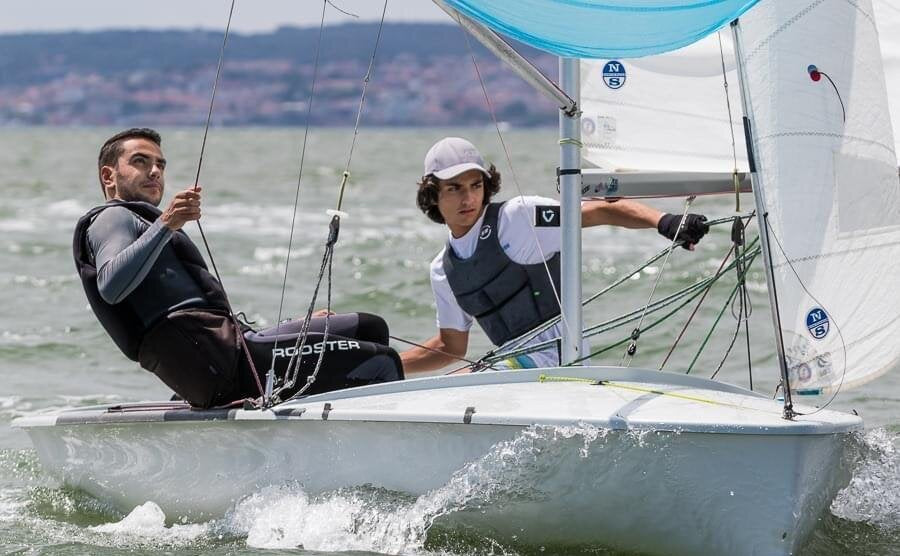
PÓDIO NORTH SAILS NA CLASSE 420
PÓDIO NORTH SAILS NA CLASSE 420
É com orgulho que anunciamos que no Campeonato de Portugal de Juniores e Absolutos da classe 420 o pódio foi North Sails.
📸 Luís Fráguas
Ricardo Alves e Tiago Alves são os novos Campeões Nacionais da Classe 420 e estão de Parabéns pelo seu fantástico desempenho , durante a regata que se realizou no início do mês, acumulando também o primeiro lugar também em Masculino.
Juntaram-se ao pódio da geral as equipas Manuel Fortunato/ Laura Pontes, que se classificaram em segundo lugar, seguidos da Mafalda Gonçalves/ Maria Pereira, que alcançaram o título de Campeãs Nacionais.
📸 Ingrid Fortunato
📸 Luís Fráguas
De realçar, ainda, que os velejadores Mário Soares/ Vasco Soares obtiveram o primeiro lugar na categoria Juniores.
Em resumo, velejadores que escolherem a North Sails, alcançaram os 1º, 2º e 3º lugares da Geral, 1º lugar Masculino, 1º lugar Feminino e 1º lugar Juniores.
A todos os nossos Parabéns!
Para mais informação sobre a gama de Velas North Sails para a Classe 420, contactem a vossa velaria nacional, através dos contactos que podem encontrar aqui.
READ MORE
READ MORE
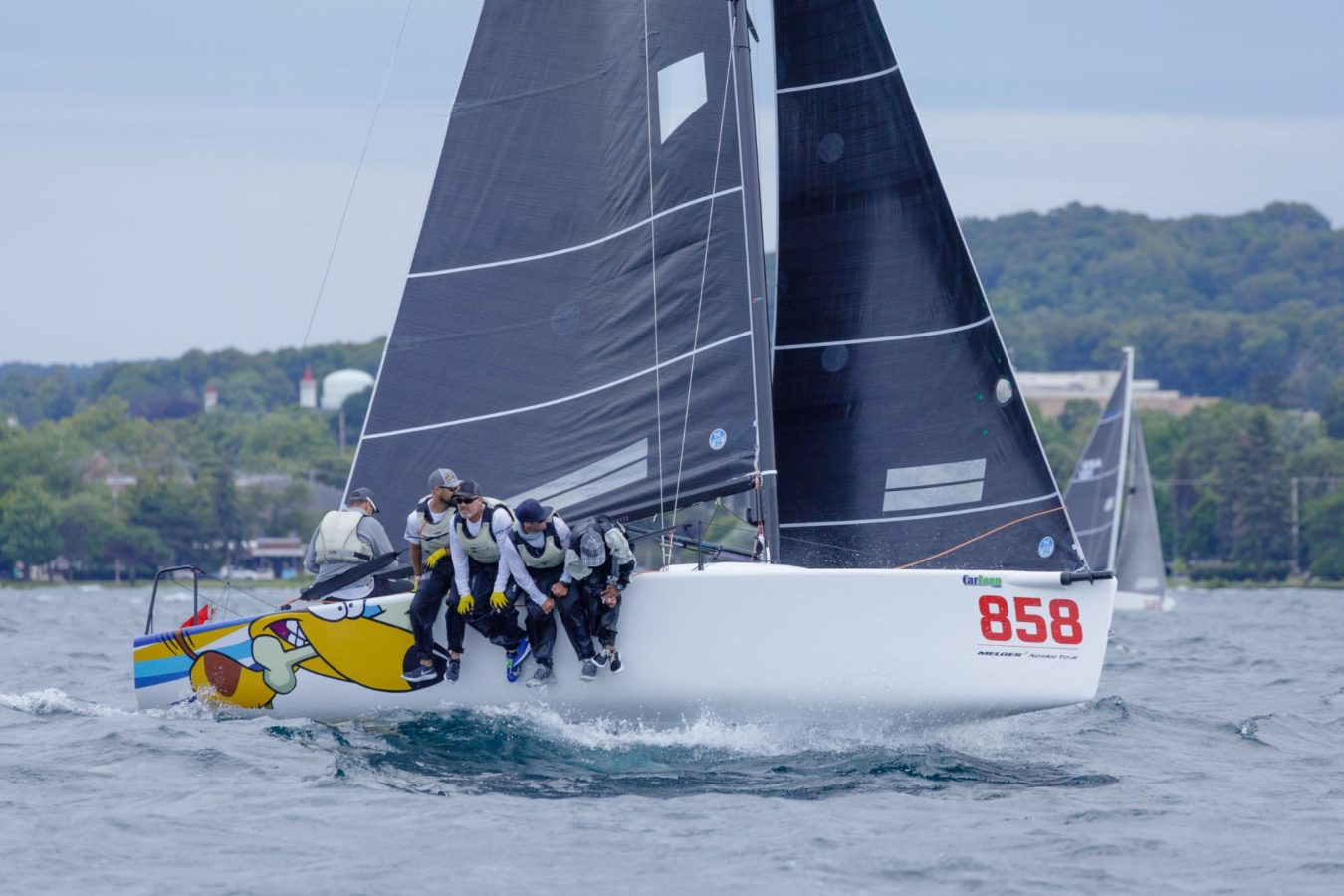
IN DEPTH WITH MELGES 24 CLASS LEADER JOHN BOWDEN
IN DEPTH WITH MELGES 24 CLASS LEADER JOHN BOWDEN
The North Sails Expert Shares Tips + Tricks And Much More
© IM4CA/©Bill Crawford, Harbor Pictures Company
John Bowden started sailing very young and was a competitive youth sailor in Texas where he grew up. He started working for a sailmaker at 16 in Austin, TX. He went to college at the College of Charleston graduating in 2004. John won the sloop nationals and was awarded the Robert H. Hobbs Sportsman of the Year award. He has won National Championships in the Melges 20, Melges 32, Lightning, Melges 24, Coronado 15, and J-80 classes. He won the world series in the Melges 20 class. Since joining the North Sails team in Charleston, John has been awarded the George Lockwood Trophy as one of the top sailors and contributors to the sport as a member of the Charleston Yacht Club. He gives us an inside glimpse to the Melgse 24 class uniqueness, what keeps him coming back and his top three tips for newcomers ahead of the Melges 24 Charleston Open in October.
Tell us about how you go involved in the Melges 24 class.
We started a small fleet here in Charleston and I began racing with a few of the local teams as they began to branch outside of Charleston. We had about 8 boats that were active for a short period of time. As those boats moved on I got back into the fleet when Travis Weisleder sold his Melges 20 after a successful campaign and bought his 3rd Melges 24. We are now onto our 3rd boat since then and have been racing the Lucky Dog Racing Team very hard.
What is it about the Melges 24 class that keeps you coming back?
The Melges 24 is one of the best boats ever built. We have really seen a resurgence in the fleet from its peak. Small local fleets are popping up again and we are seeing a great group of amateur owners jump back into this super competitive fleet.
What are your top 3 tips for someone just getting involved in the class?
Practice, Practice, Practice. Time in the boat is just the best way to get your boat going. Ask questions. There are a ton of people out there in the fleet that are always willing to help. We are seeing boat owner, sailmakers, and pro sailors now being one of the best resources for new people in the fleet. A once secretive fleet of sailors that used to keep all of their tricks to themselves are now more than happy to share information. Don’t be shy!!! Get to the big events. Local racing is great, especially in these tough times, but the experience you can get from going to these big events can be priceless. The best of the best are out racing somewhere almost every month. Do what you can to make it to these events. The practice starting, the tips from the best sailors, and the comradery with other sailors is something you just can’t get anywhere else.
What is the biggest thing you’ve learned during your time sailing Melges 24?
Everyone is working with the same gear. The class is so well established and the tuning, the boats are all very close. It really comes down to how hard you work. Sailing has come a long way from when I started racing. The top teams are really leaving it all out there on the water. The harder you work the better you will do.
How does it feel to be class leader?
I think it is a great opportunity. This is such an amazing class and such an amazing group of people I am very lucky to get a chance to work with everyone. North Sails has done a great job for so many years it is great to see us still pushing the envelope. The development of 3Di sails has been a challenge, but the results are speaking for themselves. It is nice to be the person to go to if you have questions or problems. I am the go between for the sailors and our production and design team. It really gives me a chance to work on a product and see how it helps our teams.
Looking ahead, what are your hopes for the Melges 24 class?
I am excited for this class. We have had to postpone the Worlds this year and much of the racing, but we are starting it right back up here in Charleston with the first in a series of regattas leading up to the World's being sailing in Charleston, SC. The fleet and the organizers have done an amazing job of planning for people of all makeups to get to race at the top levels in the World. The upcoming events are fast and furious leading up to the worlds. October in Charleston, November in Mobile, AL, December, January and March in Miami, FL and the Charleston Race Week as the leadup to the Worlds in Charleston just after race week. To learn more about North Sails product offering for Melges 24, see here.
READ MORE
READ MORE


